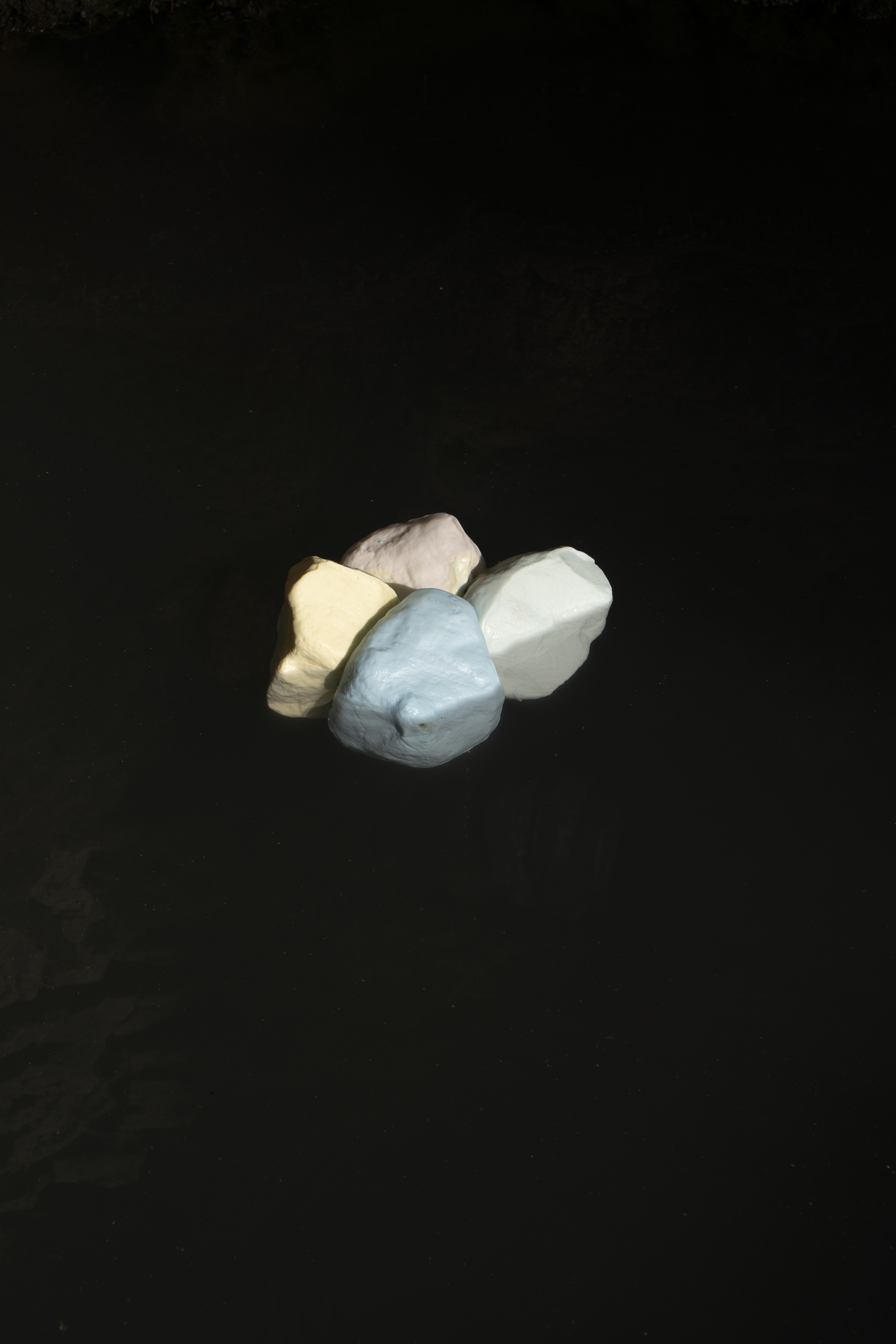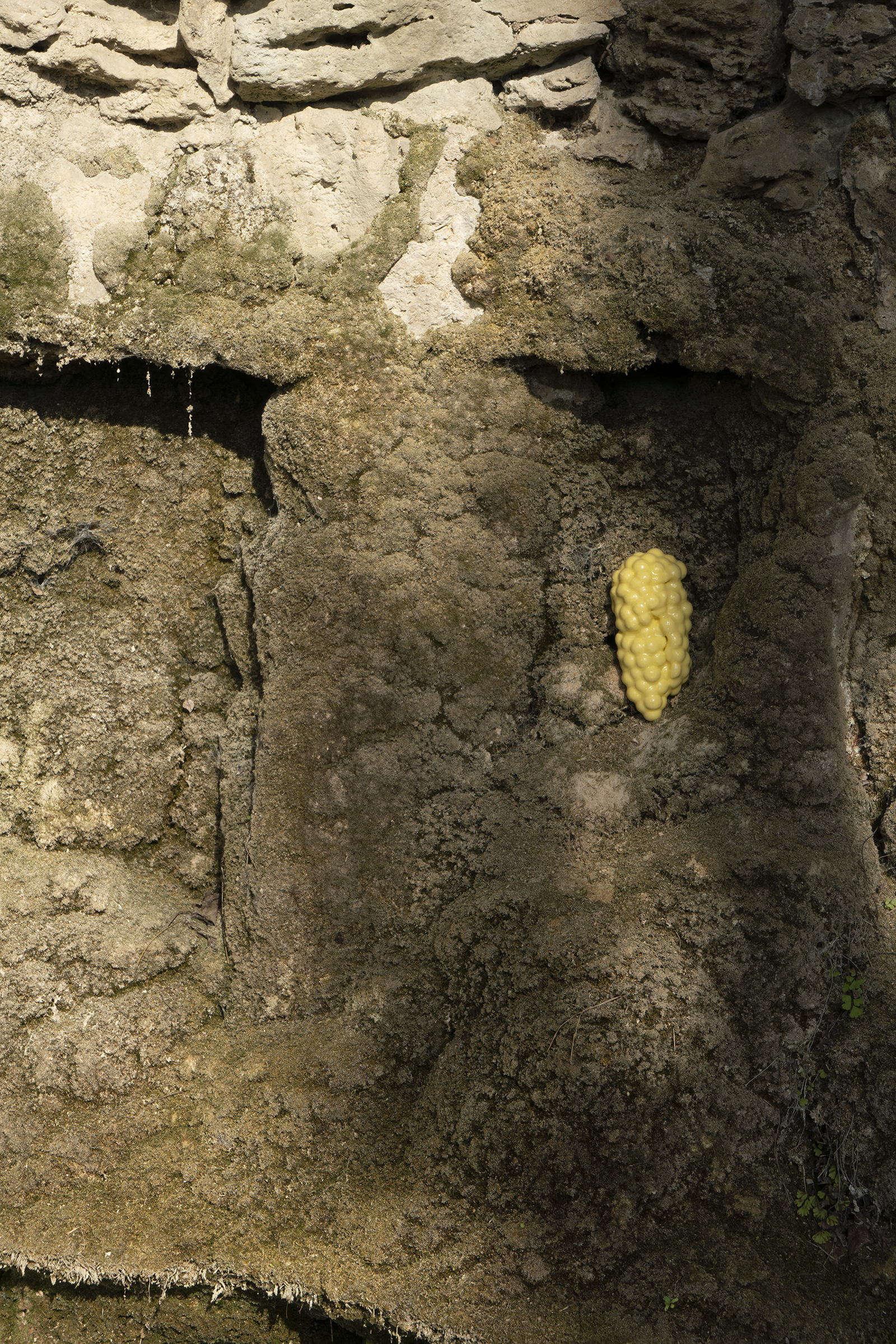︎Bezoar (2021-ongoing)
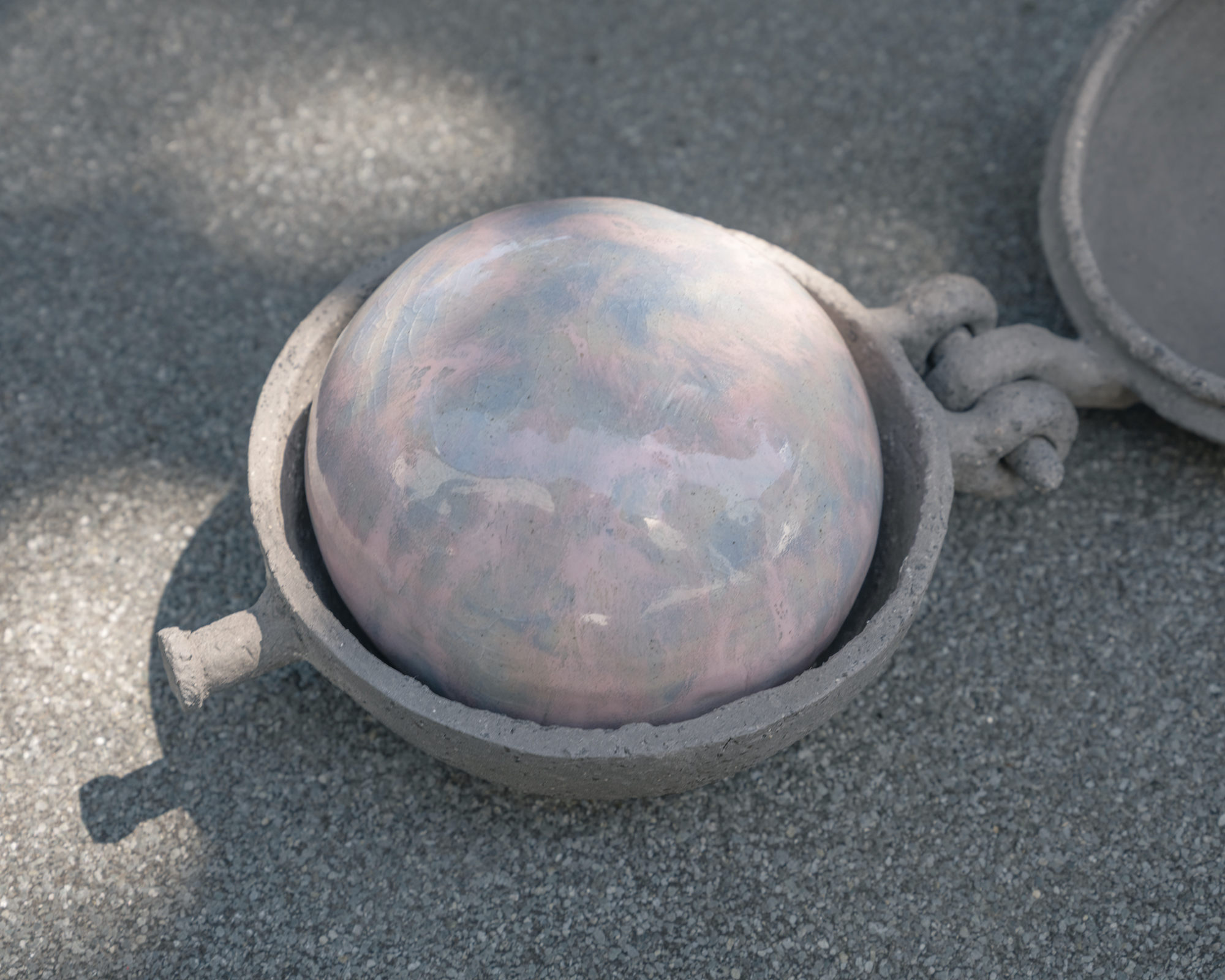
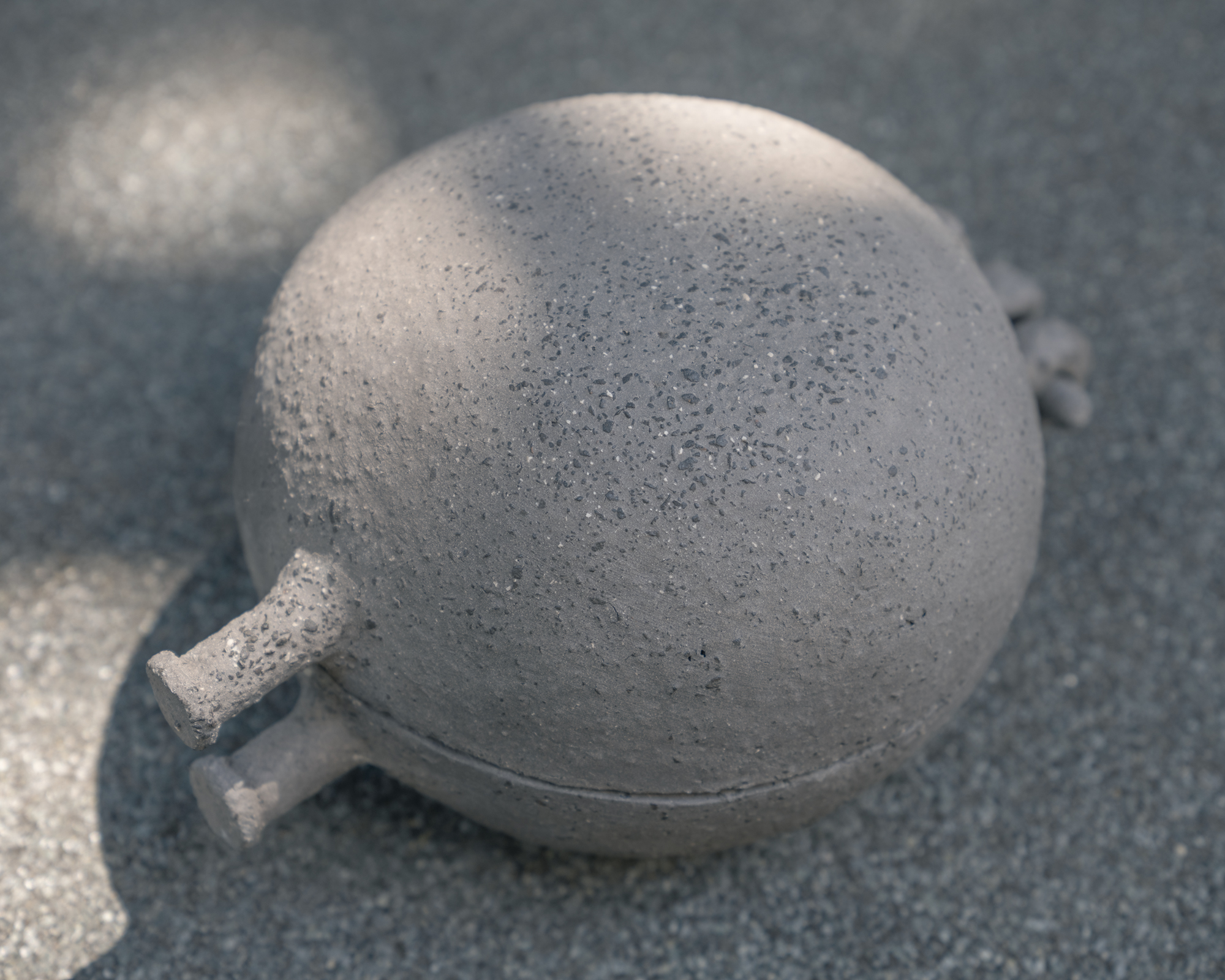
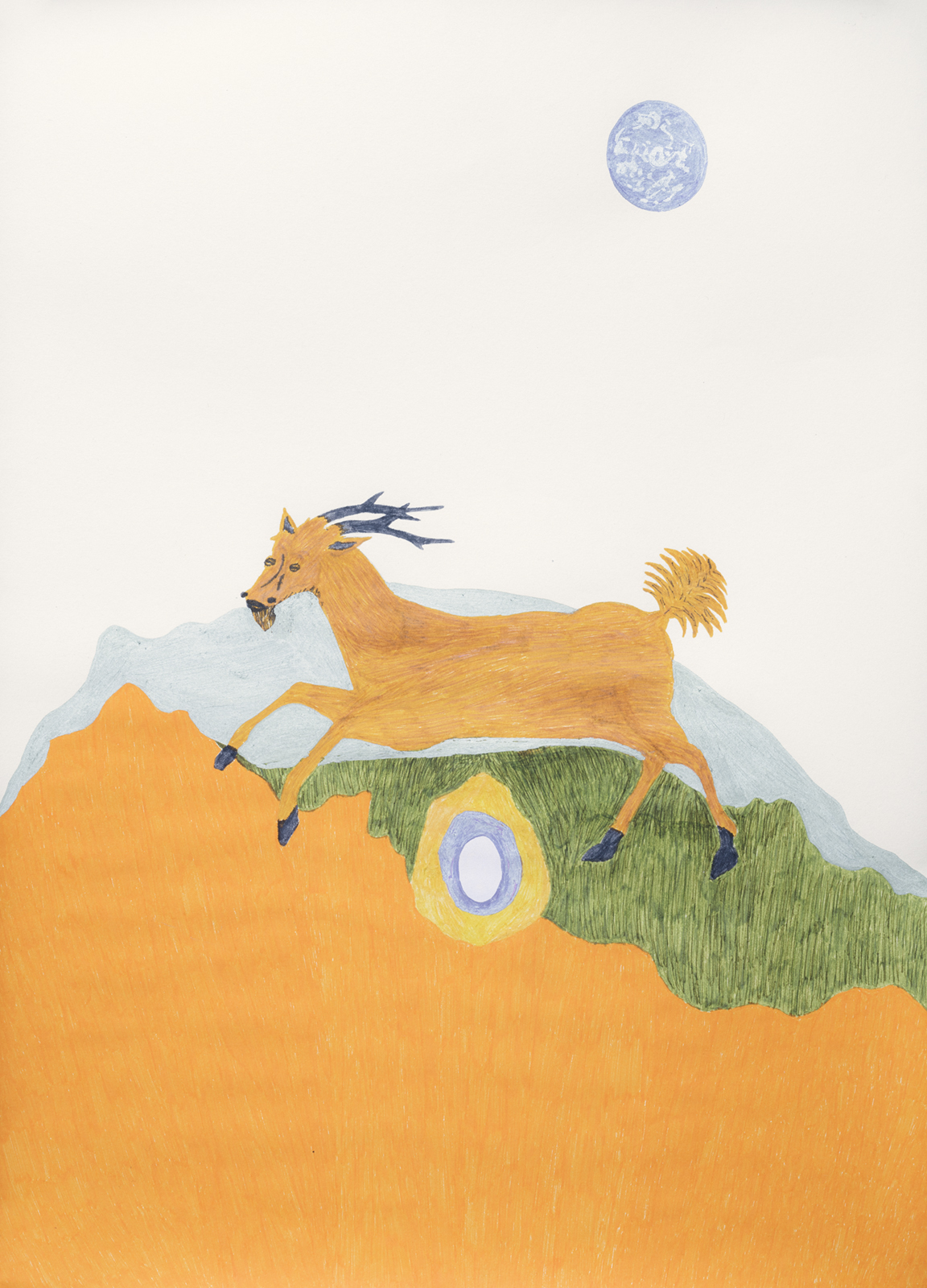
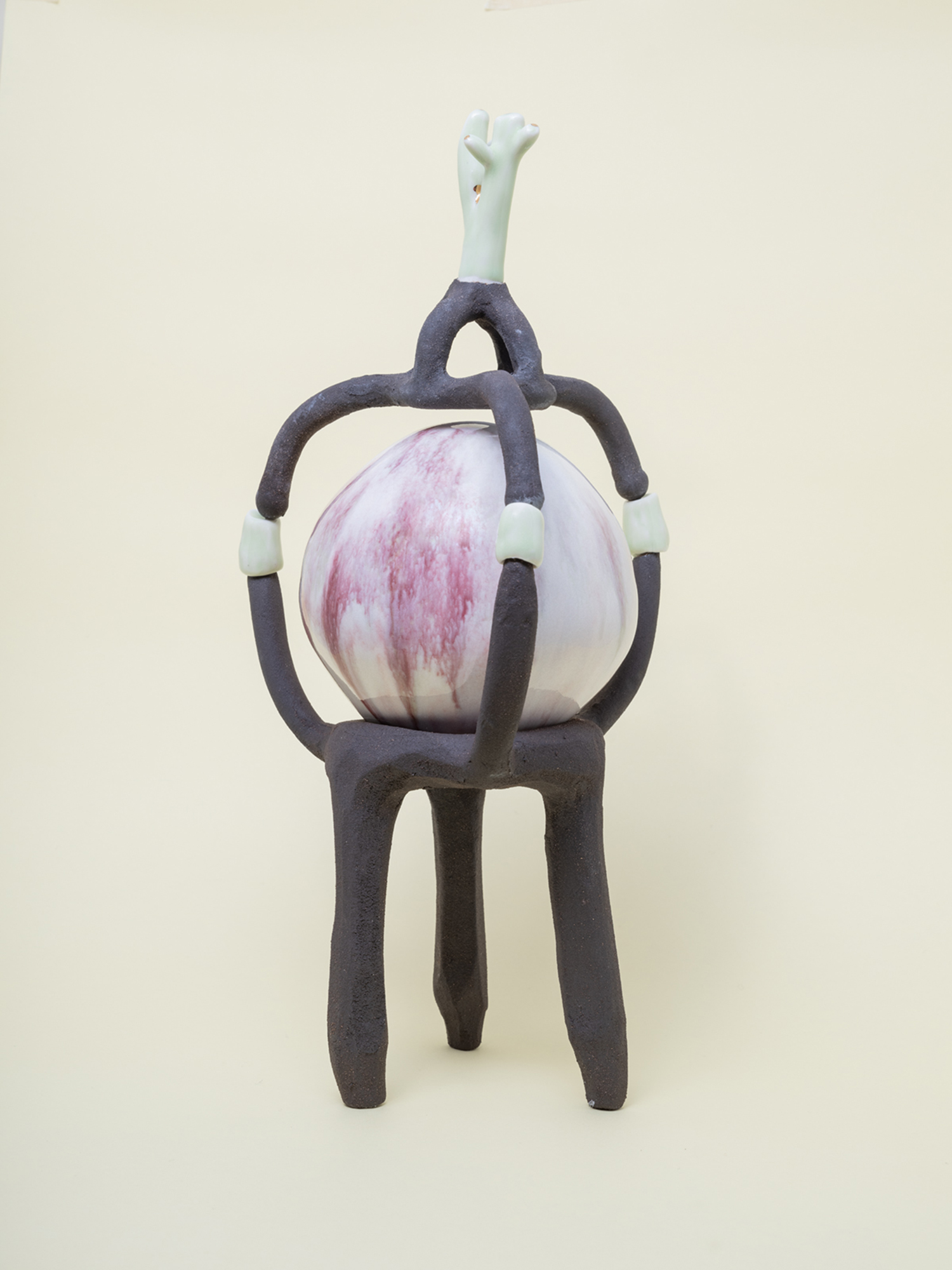


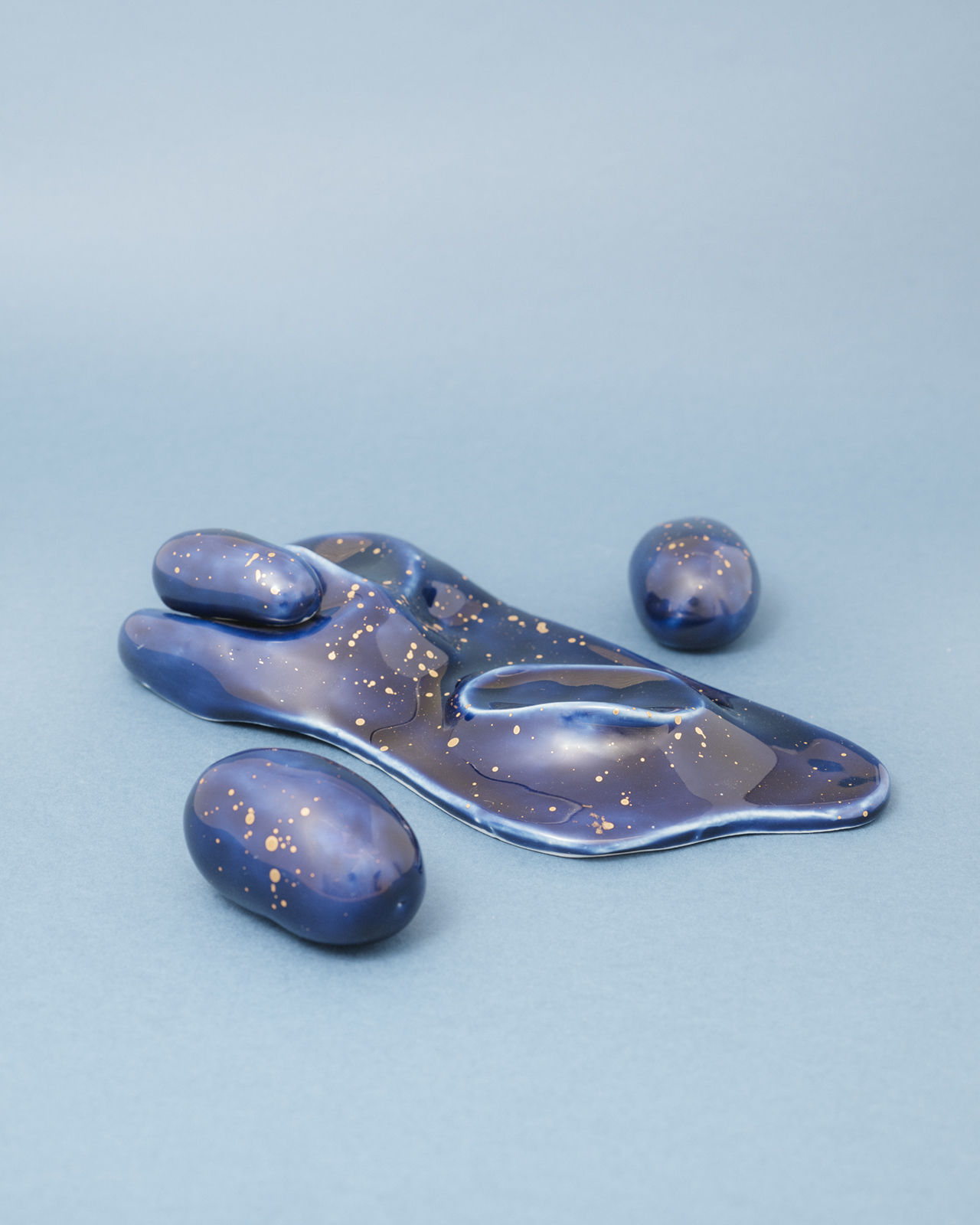



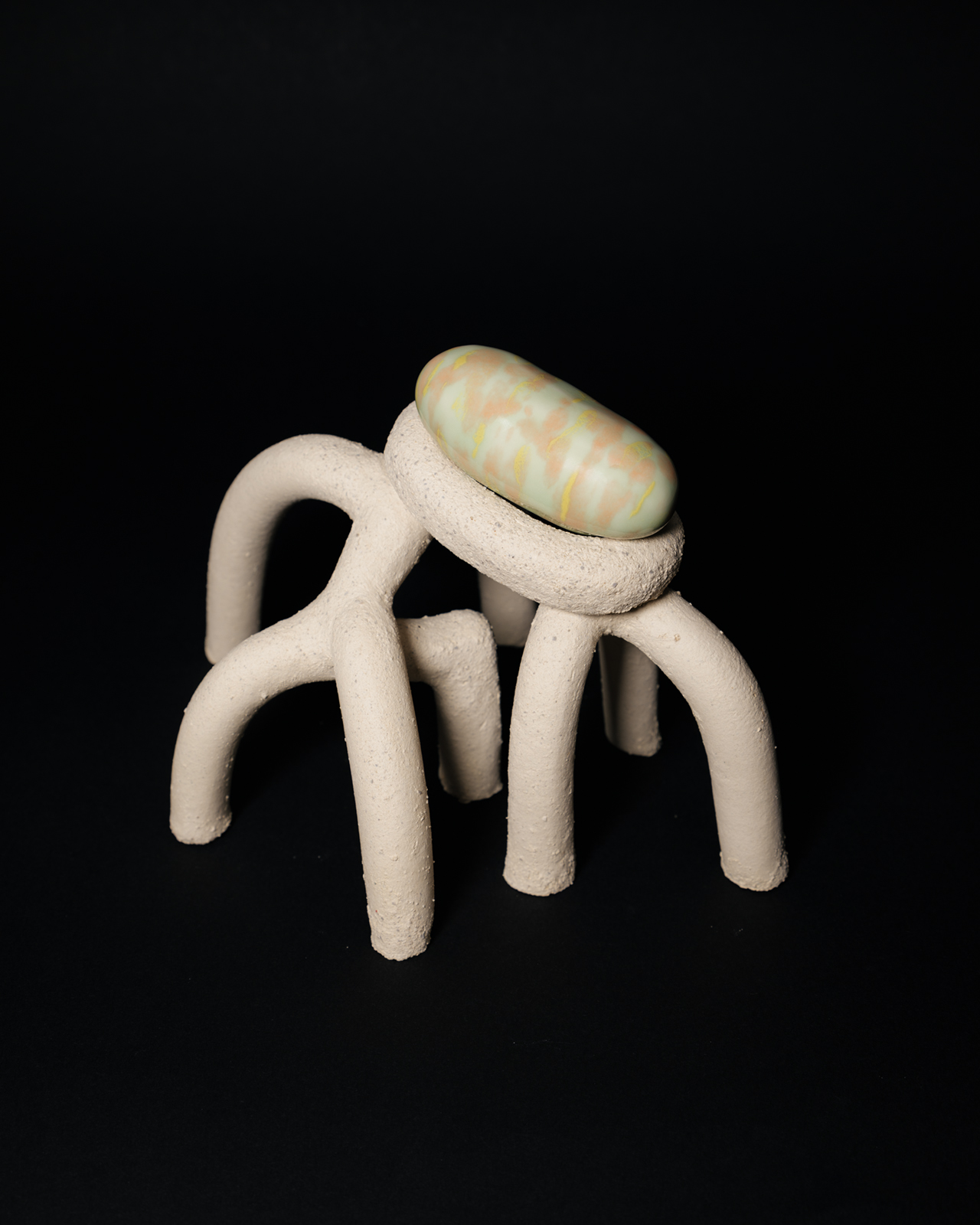
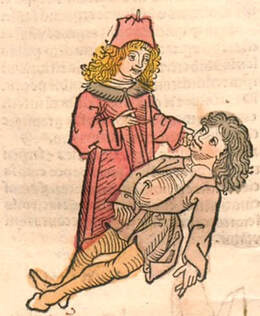

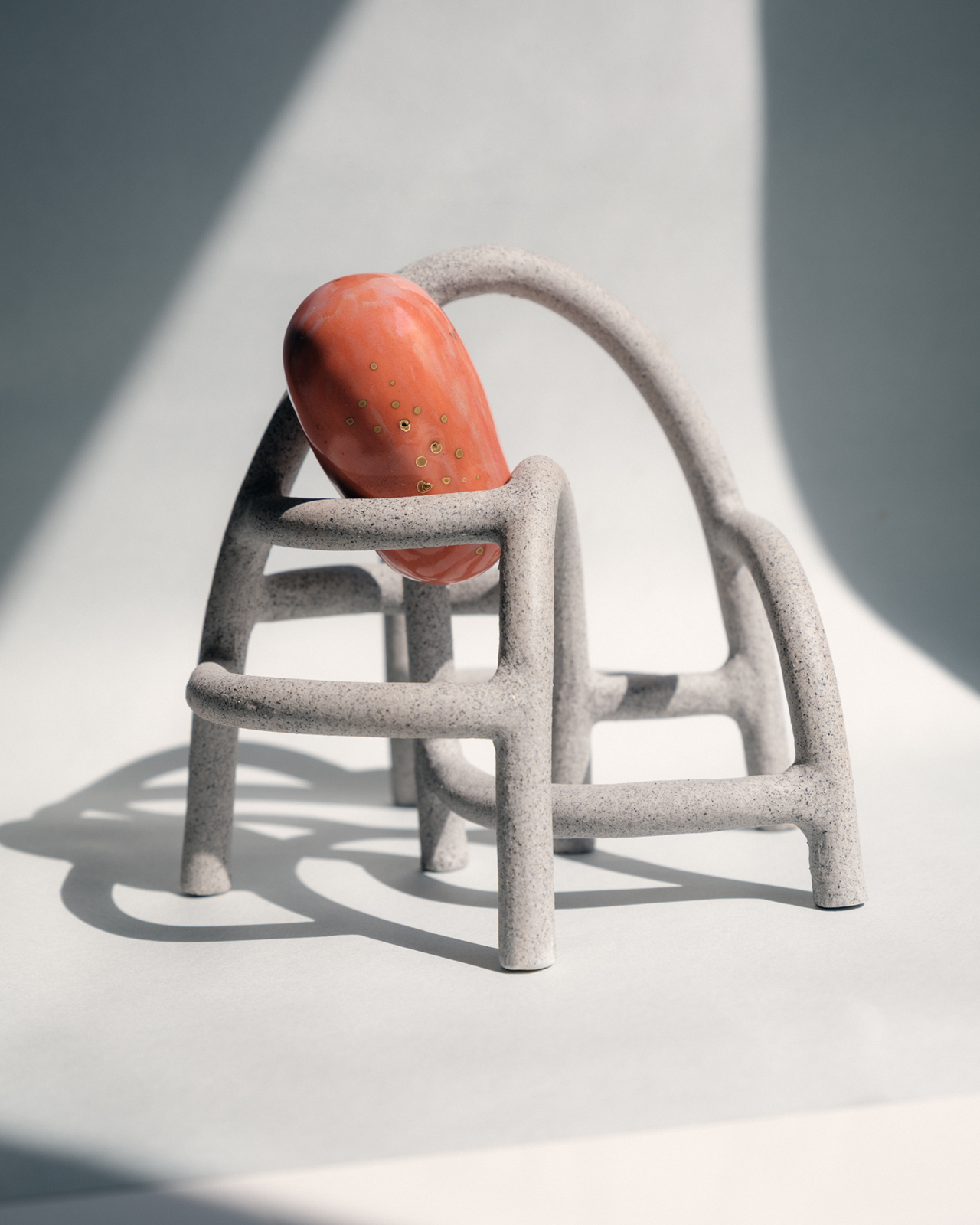
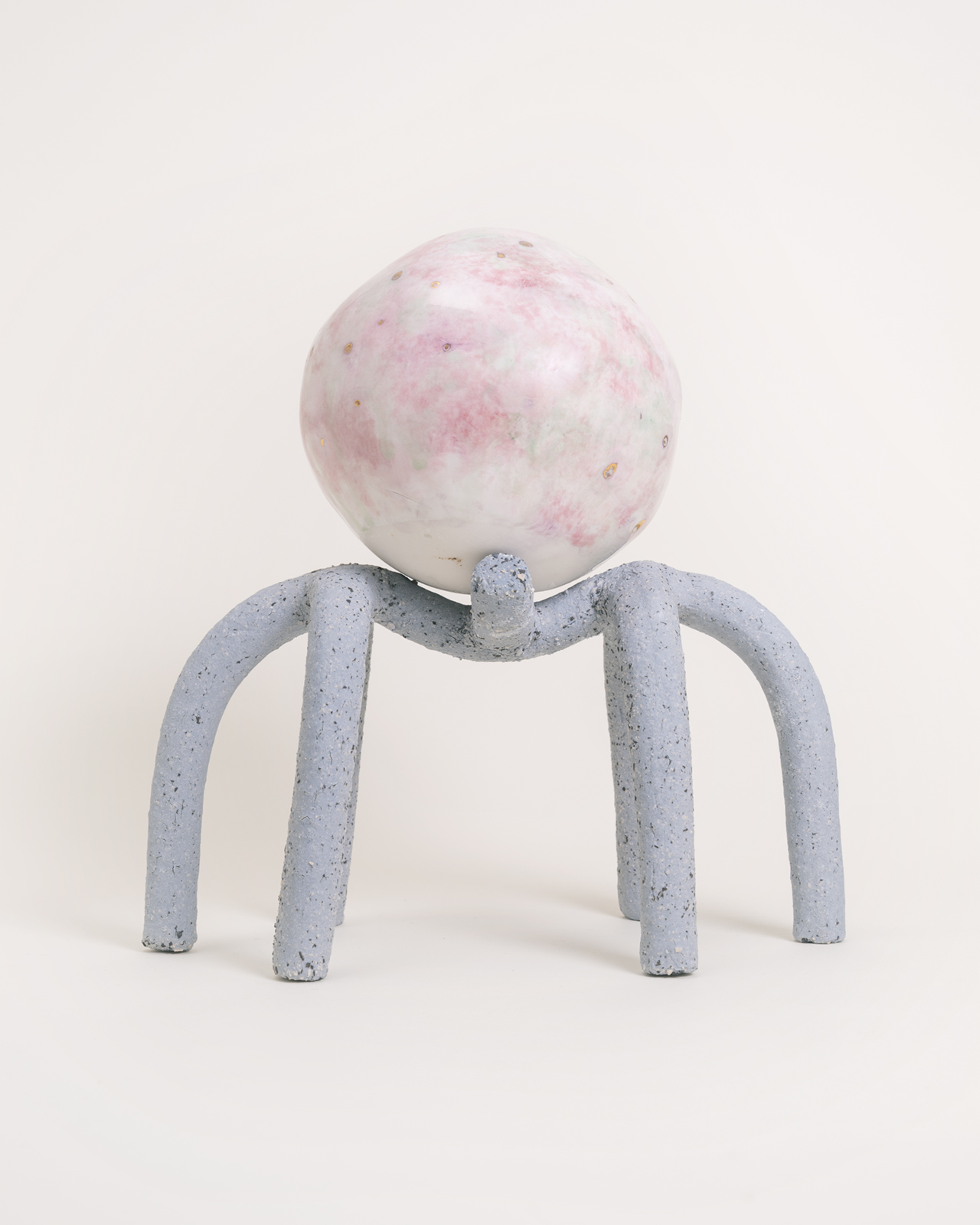

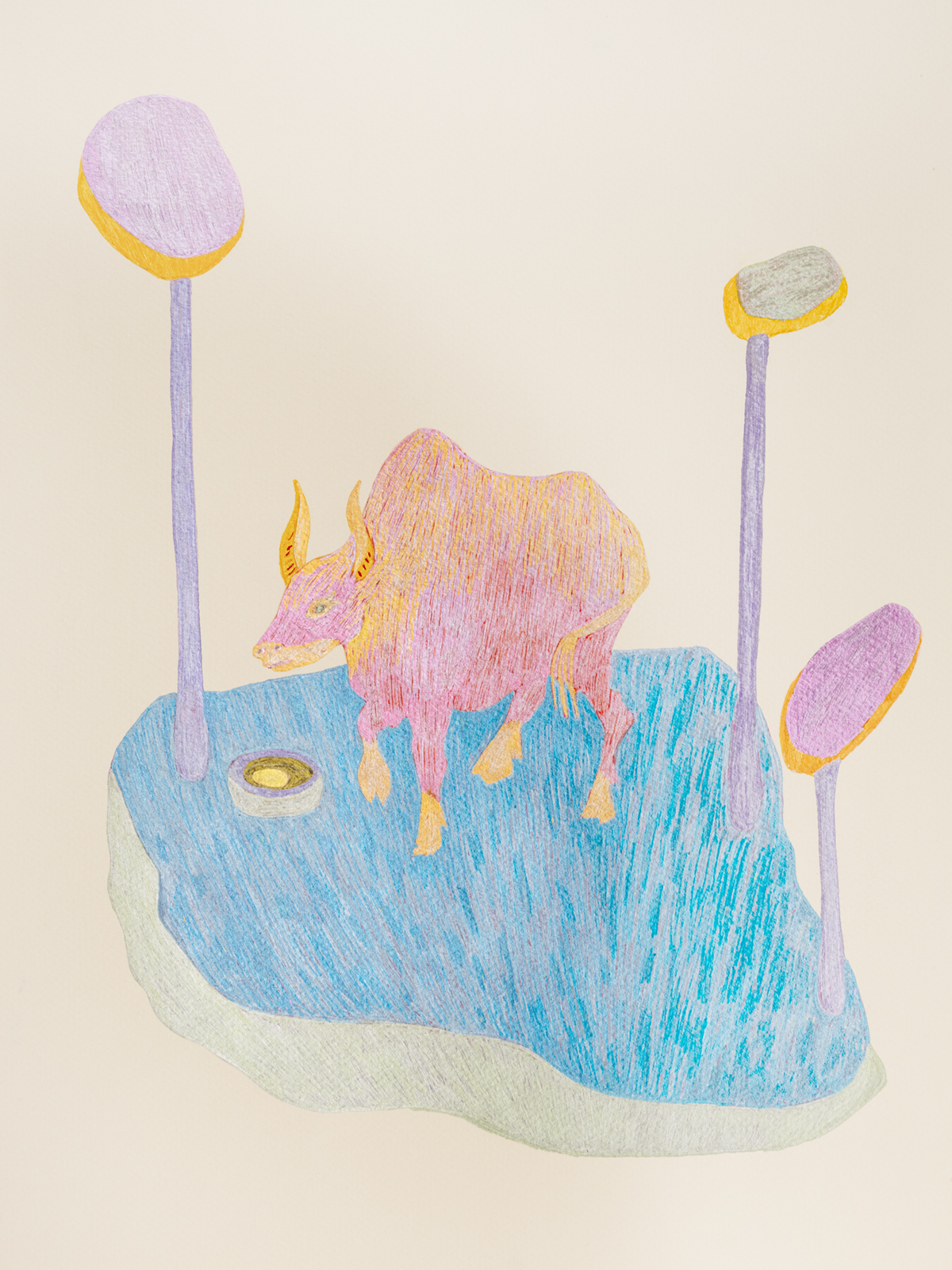

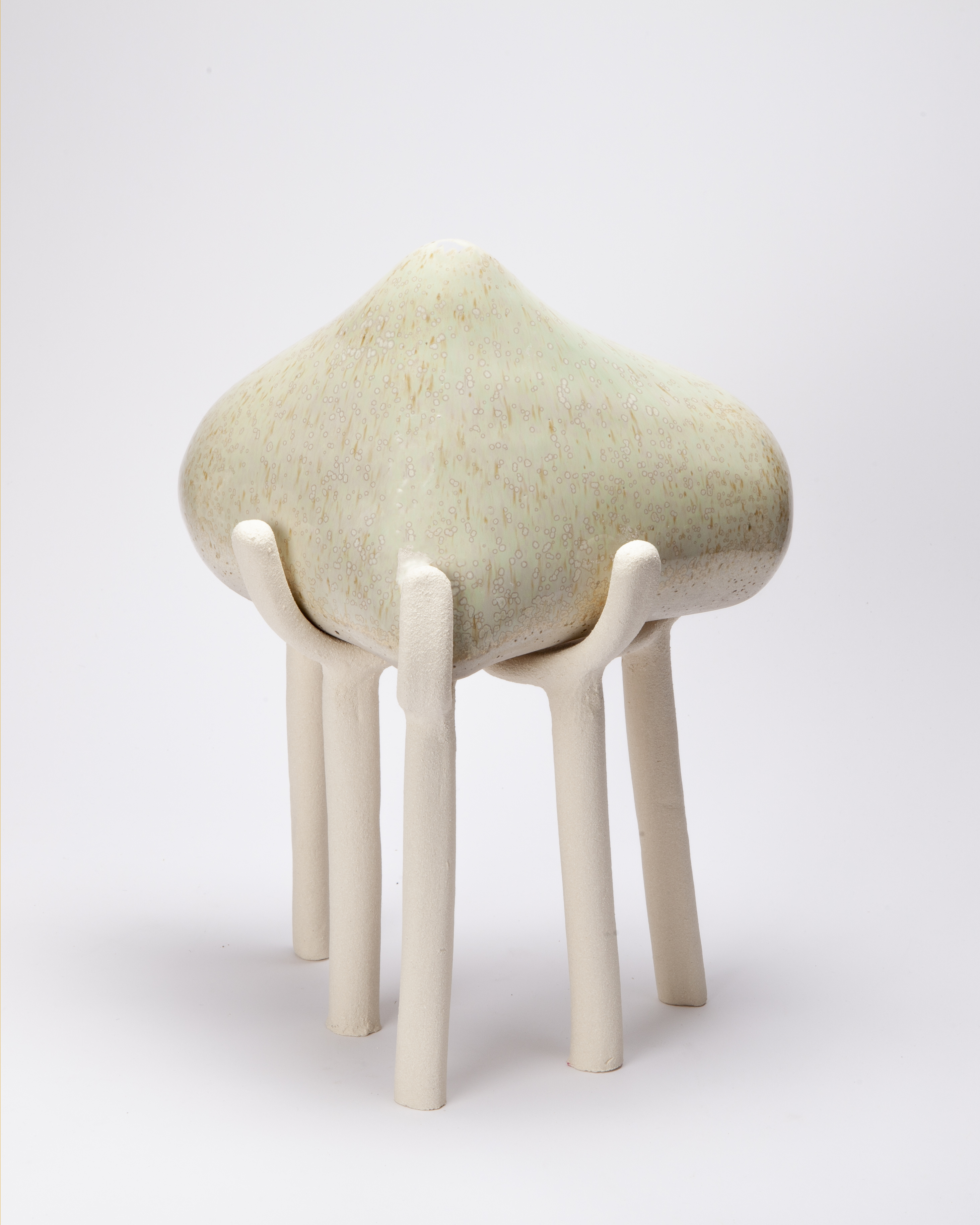
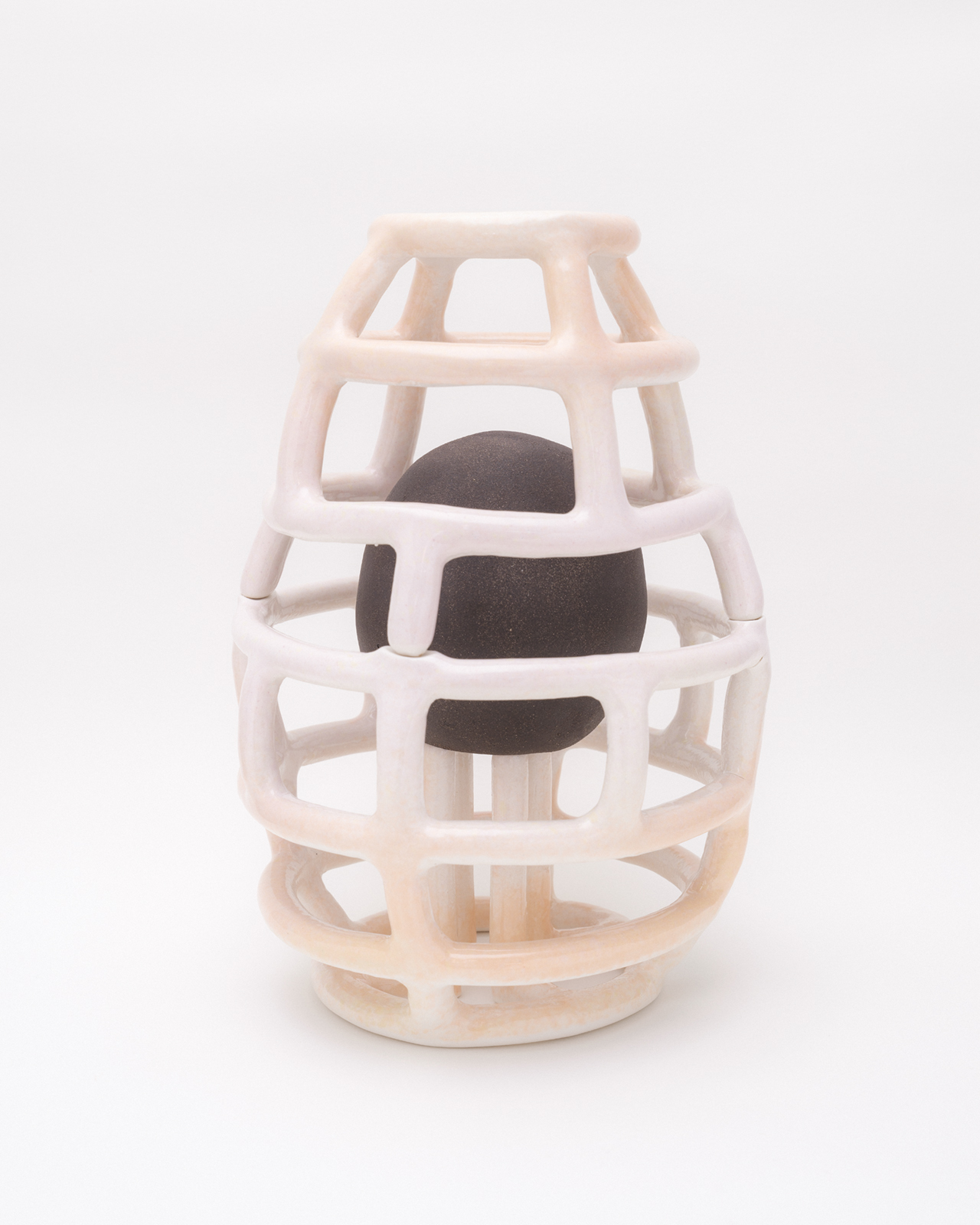
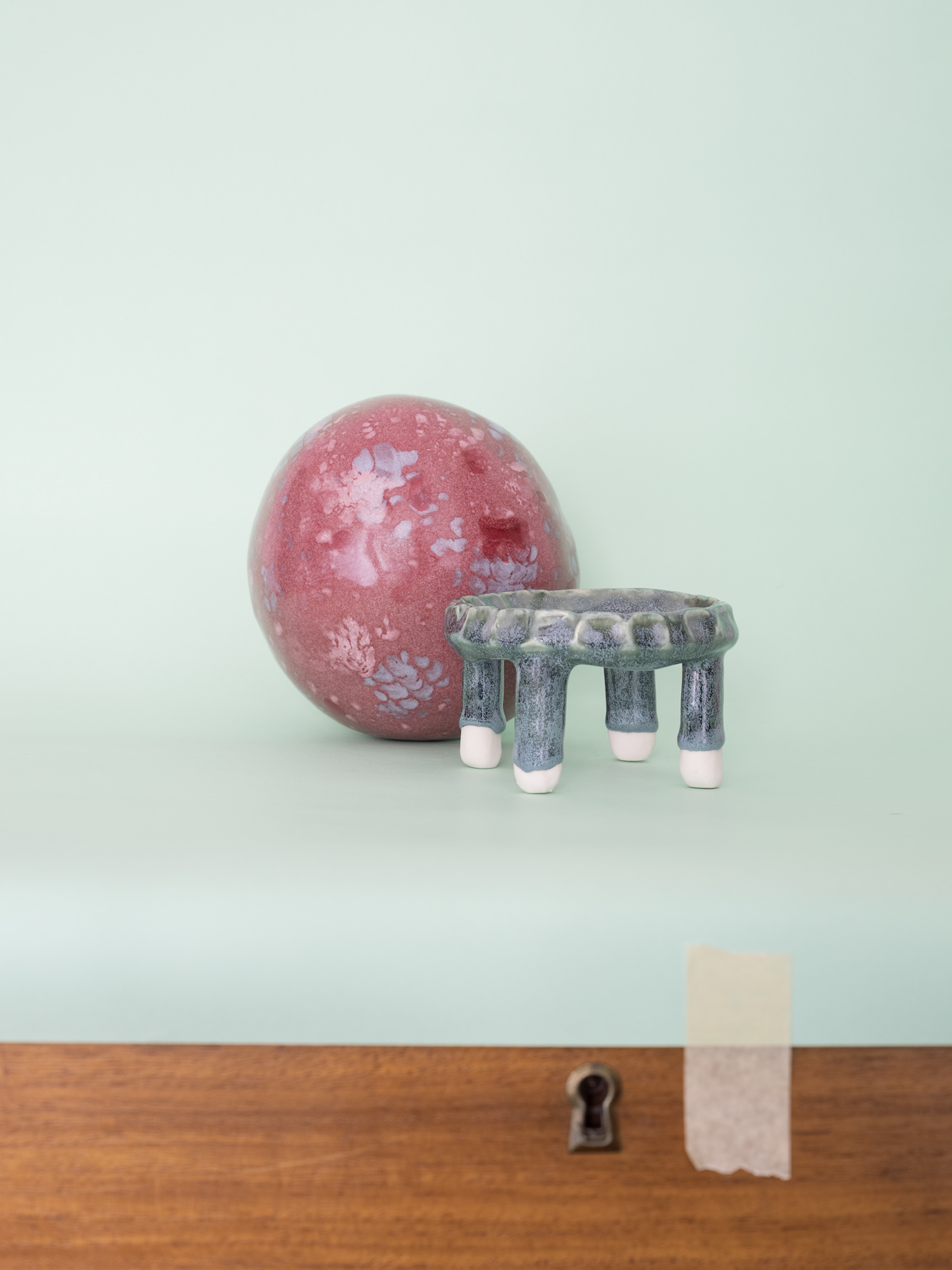




from French bezoard, based on Arabic bāzahr, bādizahr, from Persian pādzahr or “antidote”. Magic stones, power games, alchemical faith and fetichism. Transcultural works made with black and blue clay, porcelain, stoneware, glass, resin and gold.

Project for a Bezoar Cabinet
︎Inventory (2023)
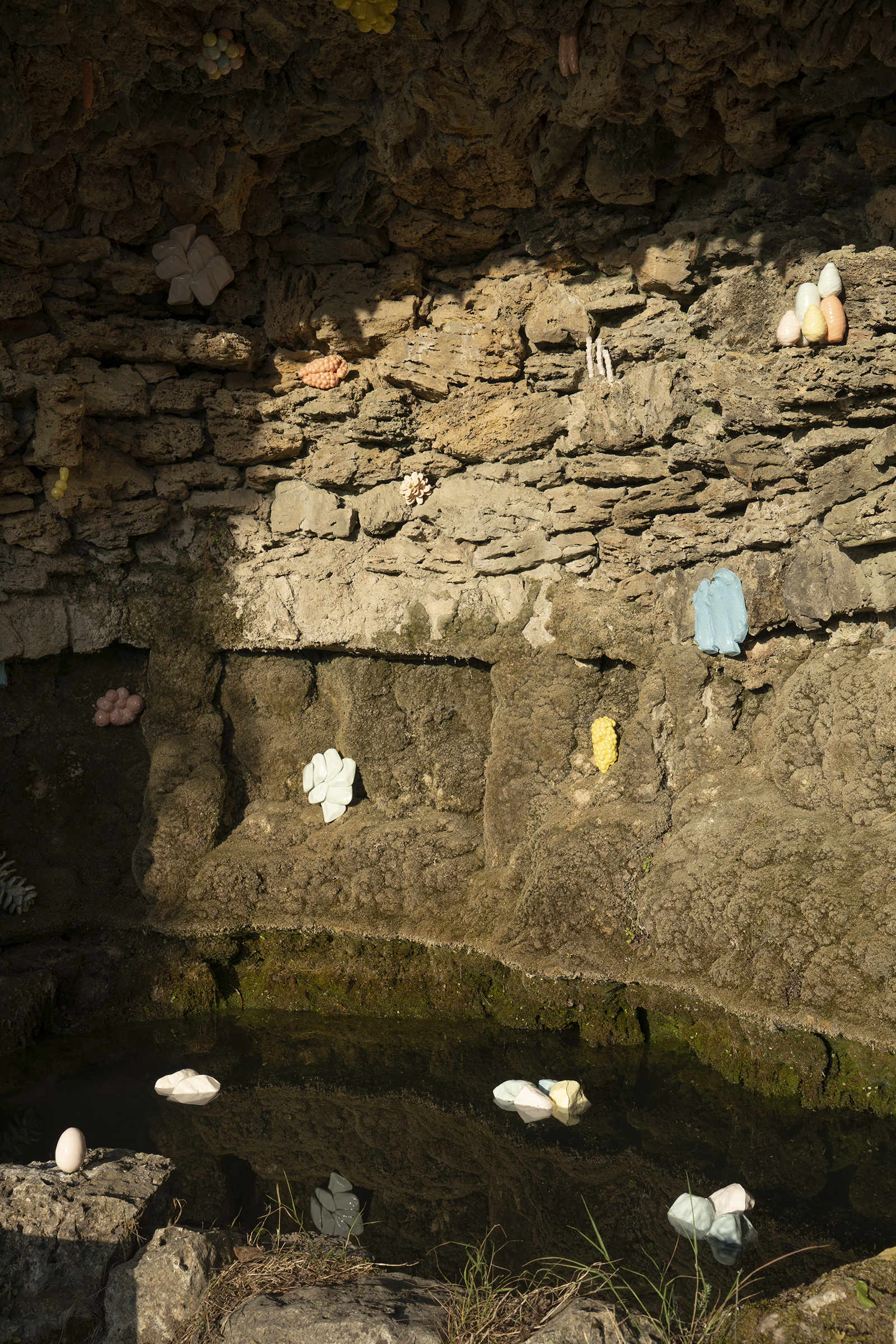
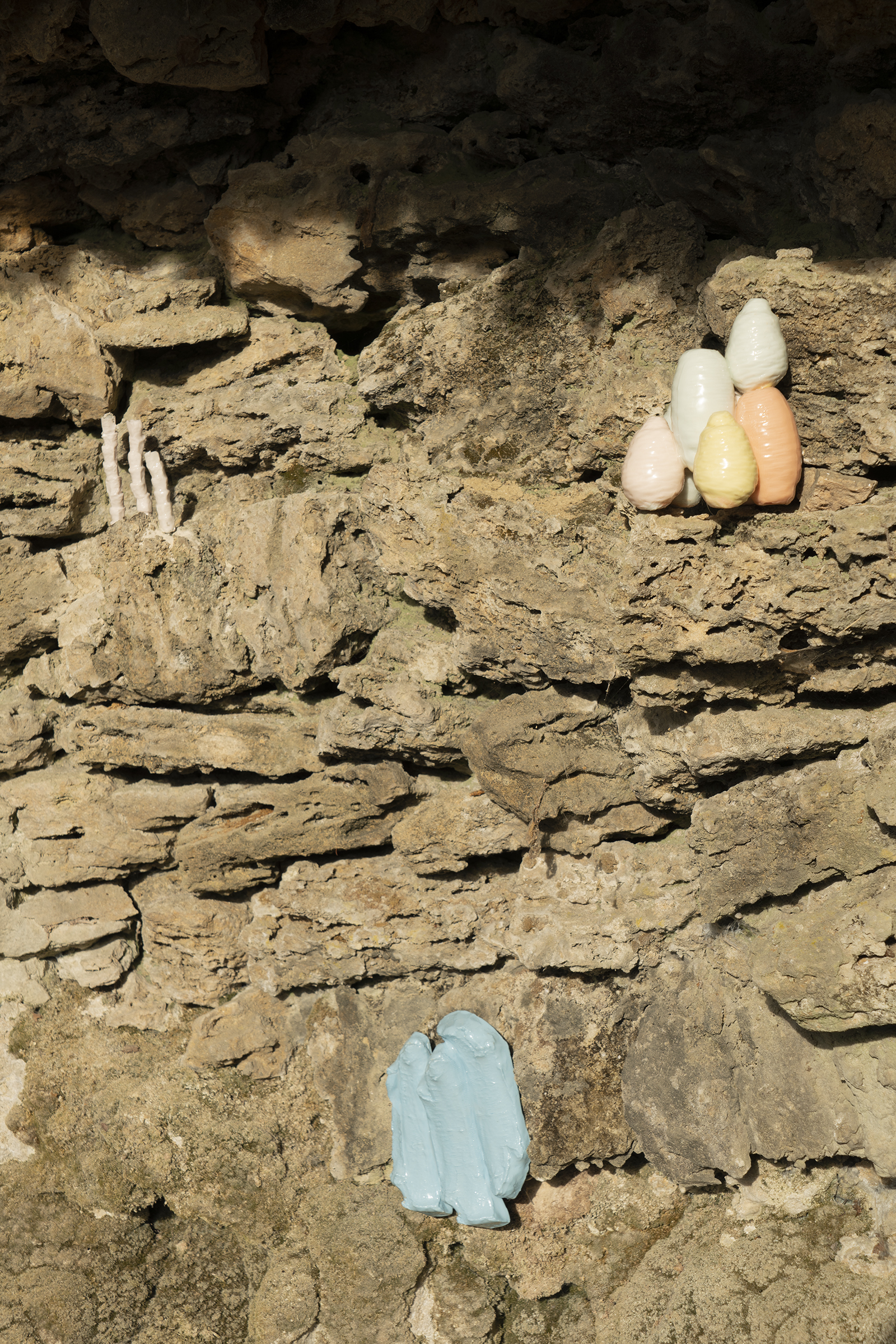
Site-specific permanent installation at Fondazione La Raia for its 10th anniversary. 32 porcelain sculptures embedded in a man-made grotto and three floating sculptures.
For a video of the WIP and the soundscape created for the work click here.
︎Light Forms (2023-ongoing)
By exploring the transluscent quality of porcelain, in this series I look at the relationship between sculpture and light. Without removing the functional aspect of the latter, all these pieces can be traced back to natural elements, be them plants or minerals, and which have a dual nature as they change aspect when they’re switched off or on. As porcelain is a material closer to glass than to ceramics, these unique pieces become sculptures during the day and glowing lamps at night. Their glazing in some cases, or pigmentation in others is also visually altered by this change, becoming a filter that is activated by the light that shines through them.


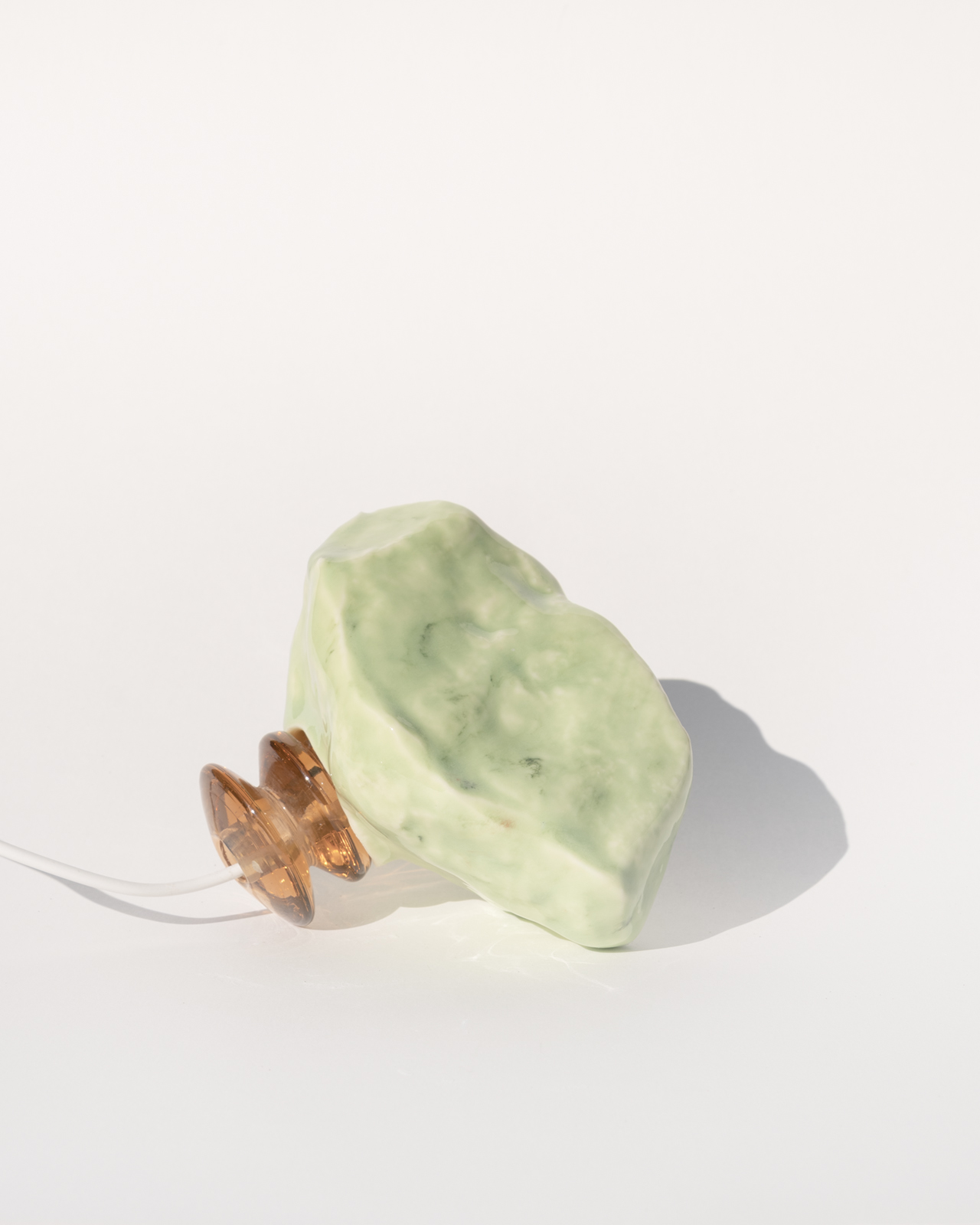





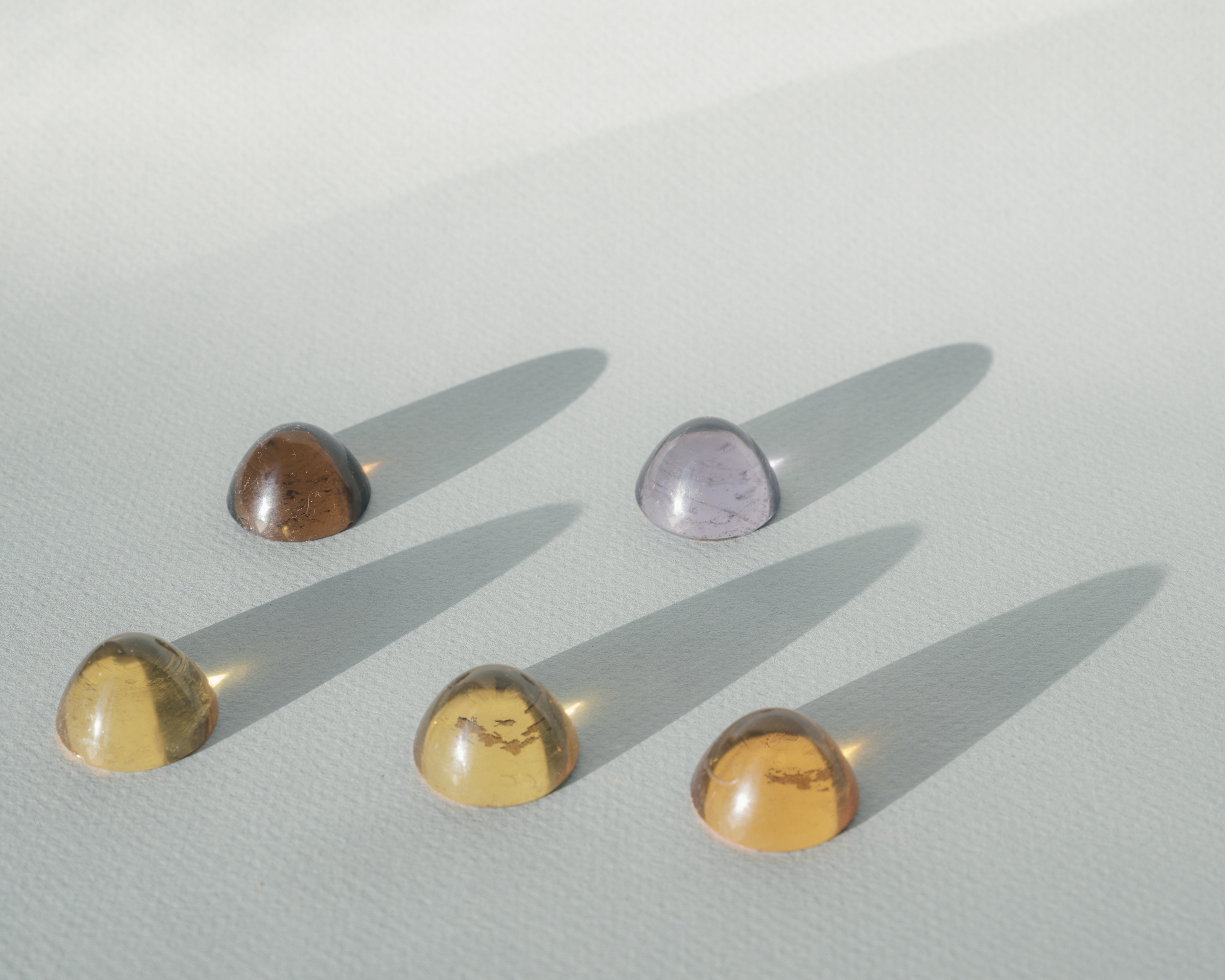
︎Via Spaventa (2021-2022)
For two years, photographer Federico Clavarino and I walked down the same street several times a day to get to our studio. It was the fastest route, but not the prettiest. The section of it that we traversed had been turned into a dump, where people from the area left their broken furniture, clothes and garbage to accumulate until the wind and those passing by reshuffled it. The walls of the street were full of colorful graffiti. The sun hit the concrete so hard that on hot days it was a true torture to walk past there, without any trees to give some shade.
Its name, translated in English, would be something along the lines of The Scary Road. We made it a goal to find a way to enjoy our daily walks on that street. I built my own porcelain palaces resembling those on the street and glazed them with the same colors and shapes of the graffiti on the wall. I also used the images that Federico took there, with its people, its light and its forms, to construct my pieces. The result of this work, Via Spaventa, brings together his images and my sculptures.
This project is part of a larger research we started in 2022 called The Crab’s House, in which we explore our migrations and the ways we have of inhabiting the space as we look into alternative models of dwelling.
︎ Commute
![]()
A man twists his soaking blue scarf on a rainy winter day. The drops of water shine and shake on the floor.
(Tuesday, 10am, Bethnal Green)

A man twists his soaking blue scarf on a rainy winter day. The drops of water shine and shake on the floor.
(Tuesday, 10am, Bethnal Green)

I hear a woman saying to her friend that Munro has died. She then quotes her, “the constant happiness is curiosity”. They both smile and look back into their phones.
(Friday, 11am, Marble Arch)

The dog sits quietly next to the woman, undisturbed by the erratic movements of the overground. Something shines on its muzzle, and it guides me towards its gentle eyes. I remove the straps of its cage in my mind.
(Monday, 4pm, Hammersmith)
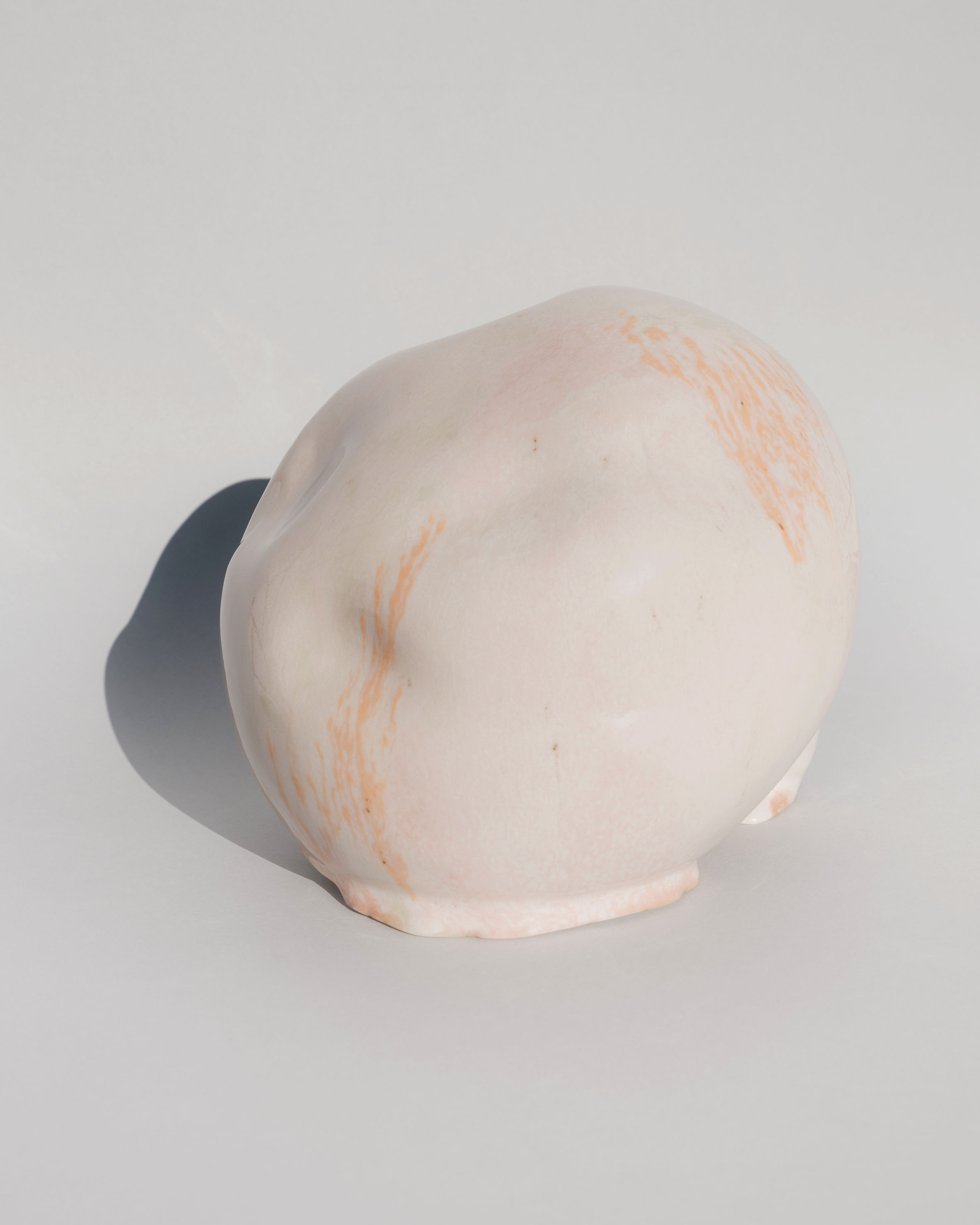
I see a face in the tube that I think I recognize. People avoid staring at each other and that’s how the commute goes. But I see a face I think I know and I stare. The eyes on it look away. So the face ends up blurred in overflowing glaze.
(Tuesday, 10am, Sheperd’s Bush)
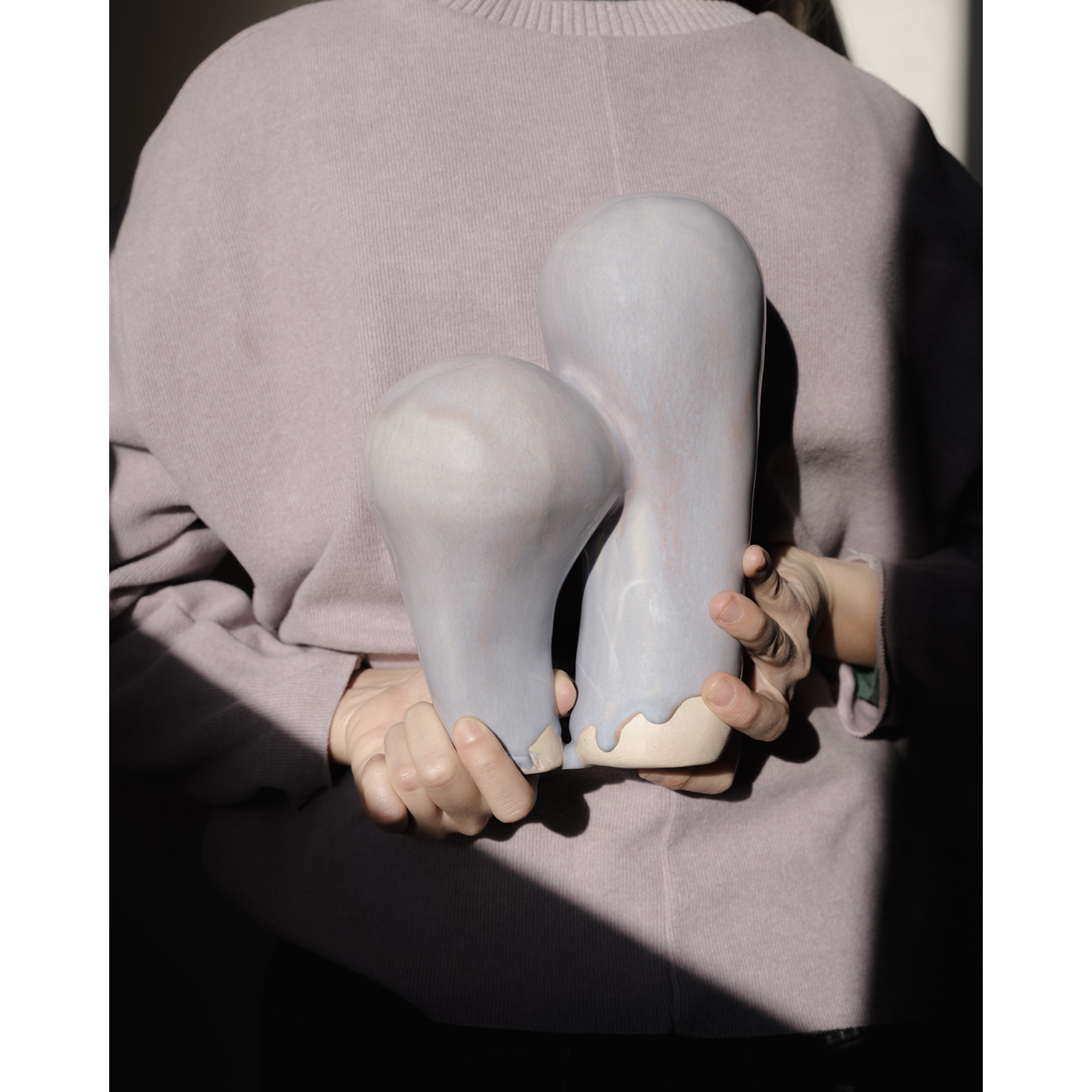
She holds her kid’s hand as the train makes a sudden stop, and keeps him from falling. I often forget how touch can be a saviour.
(Wednesday, 9m, Liverpool Street)
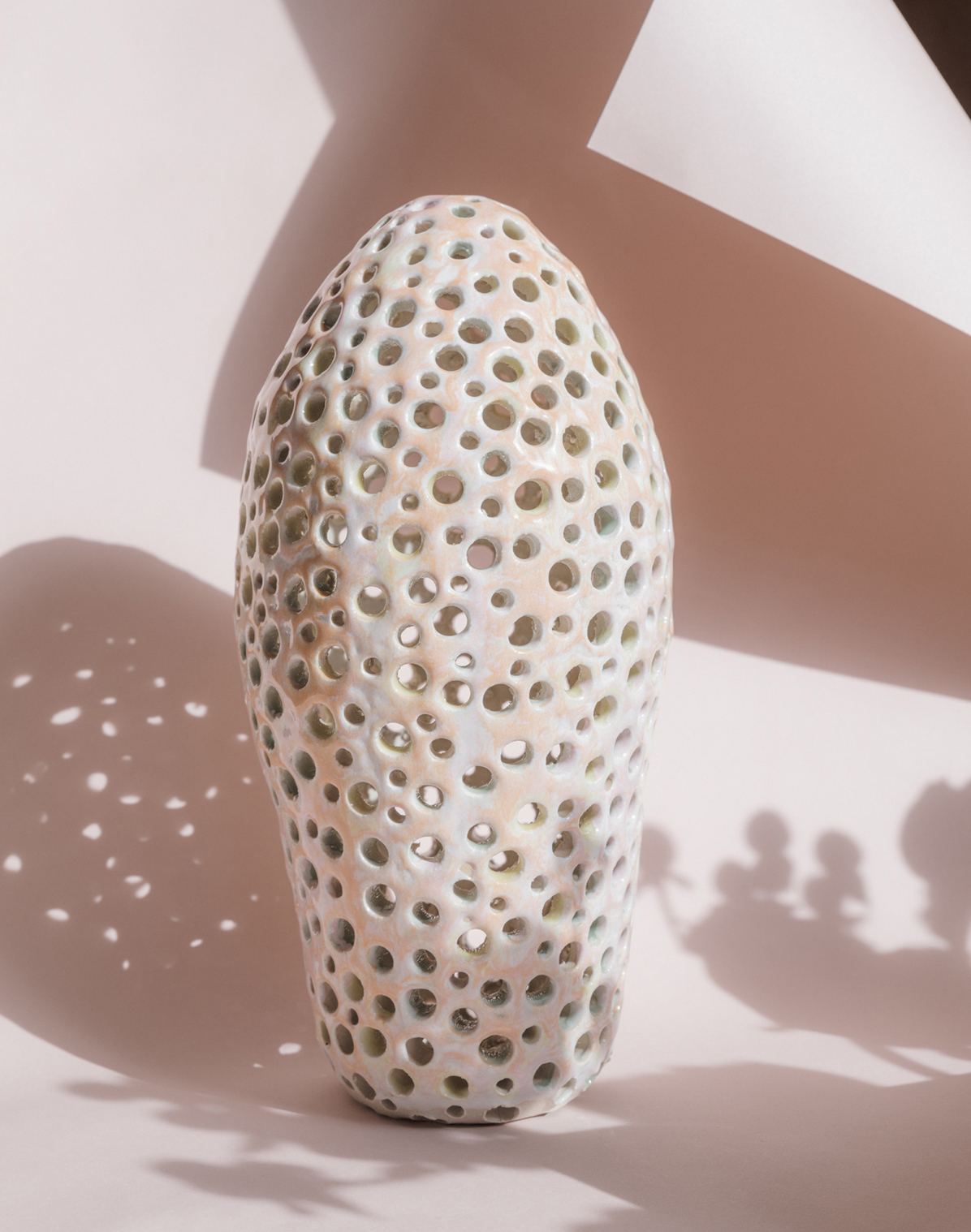
Mental images collected from an hour long commute from my home to my studio, then turned into conversations and finally sculptures, which feed back into images and eventually turn the long daily journey into a different, less alienating experience.
︎Are people flowers? (2021)
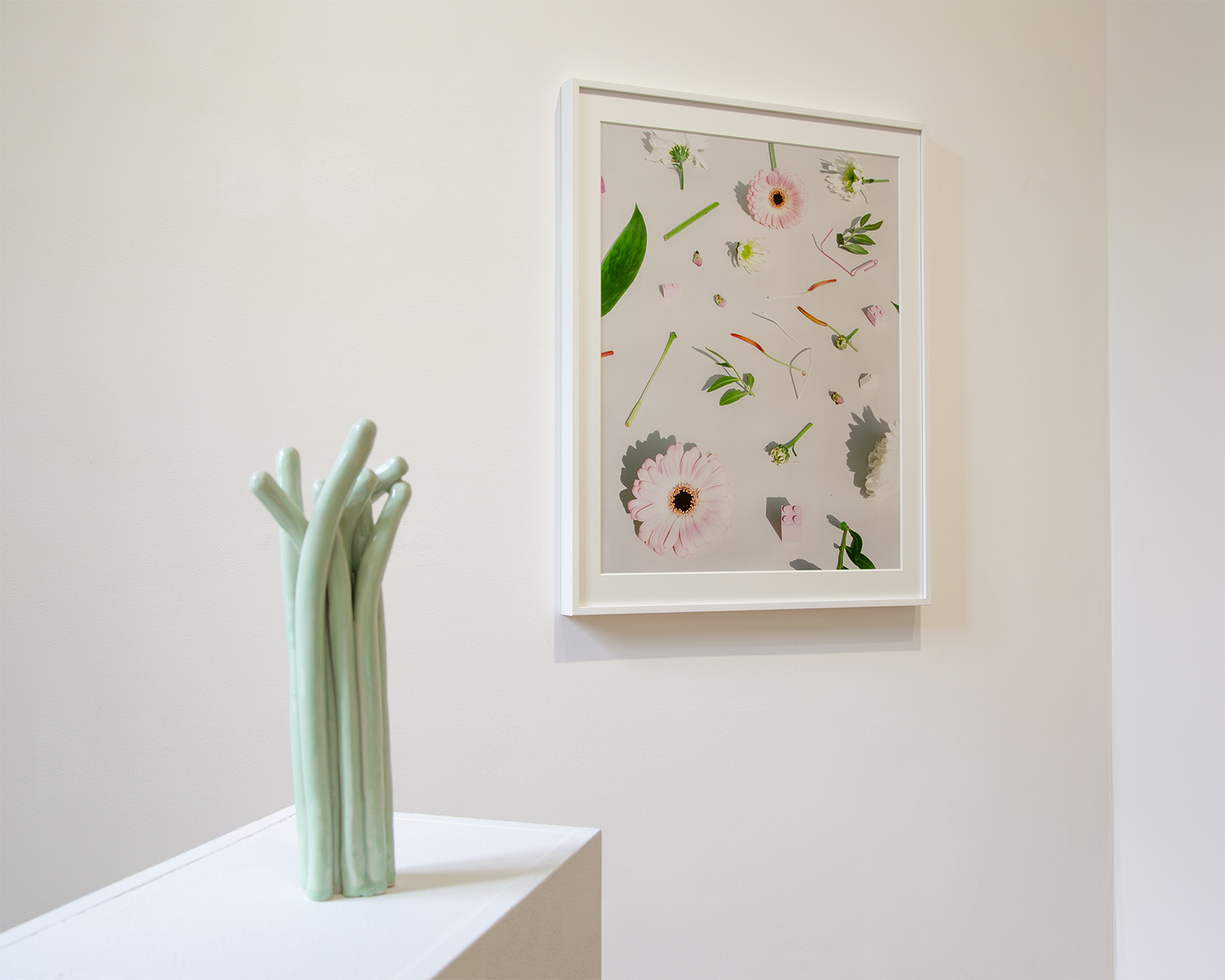
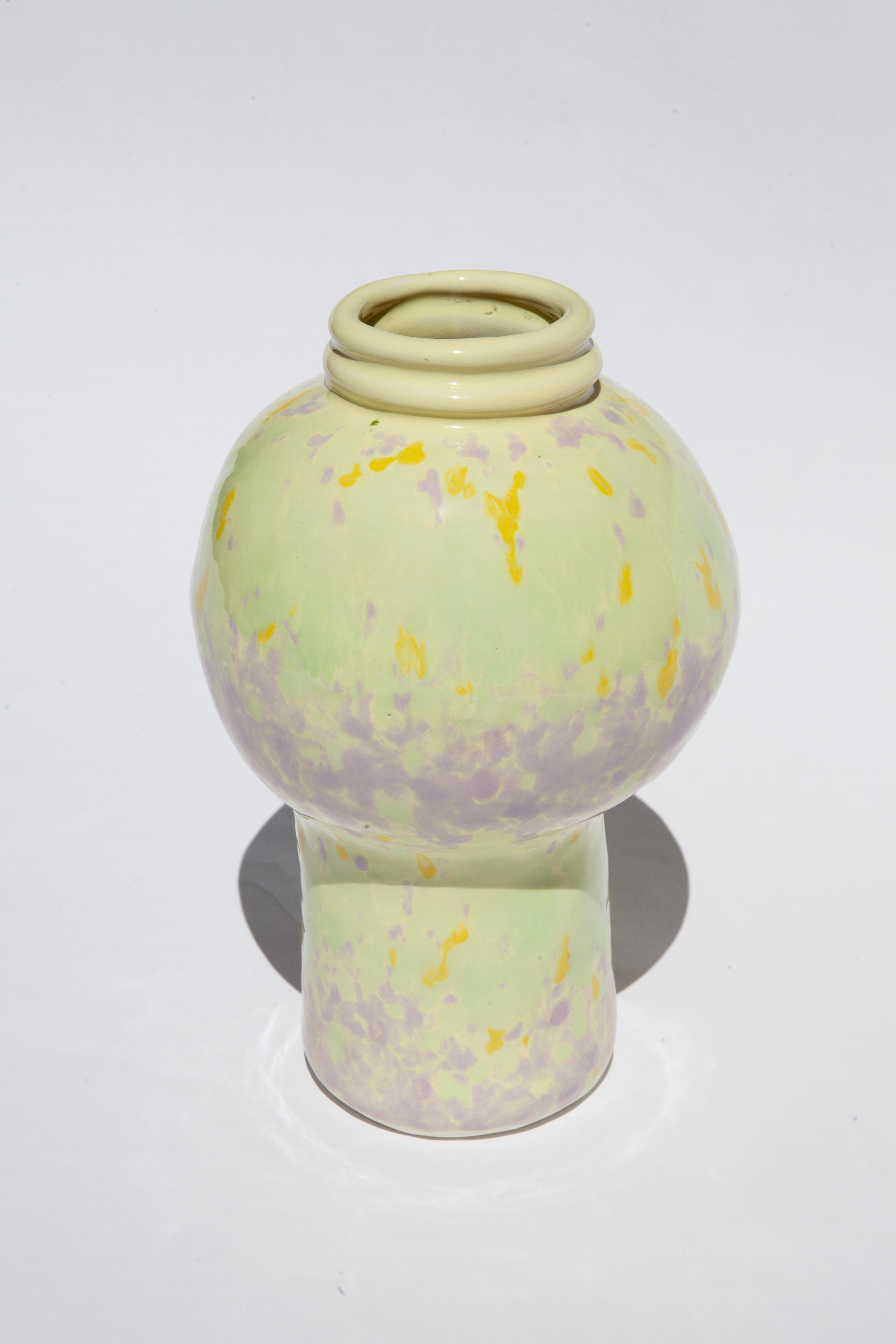
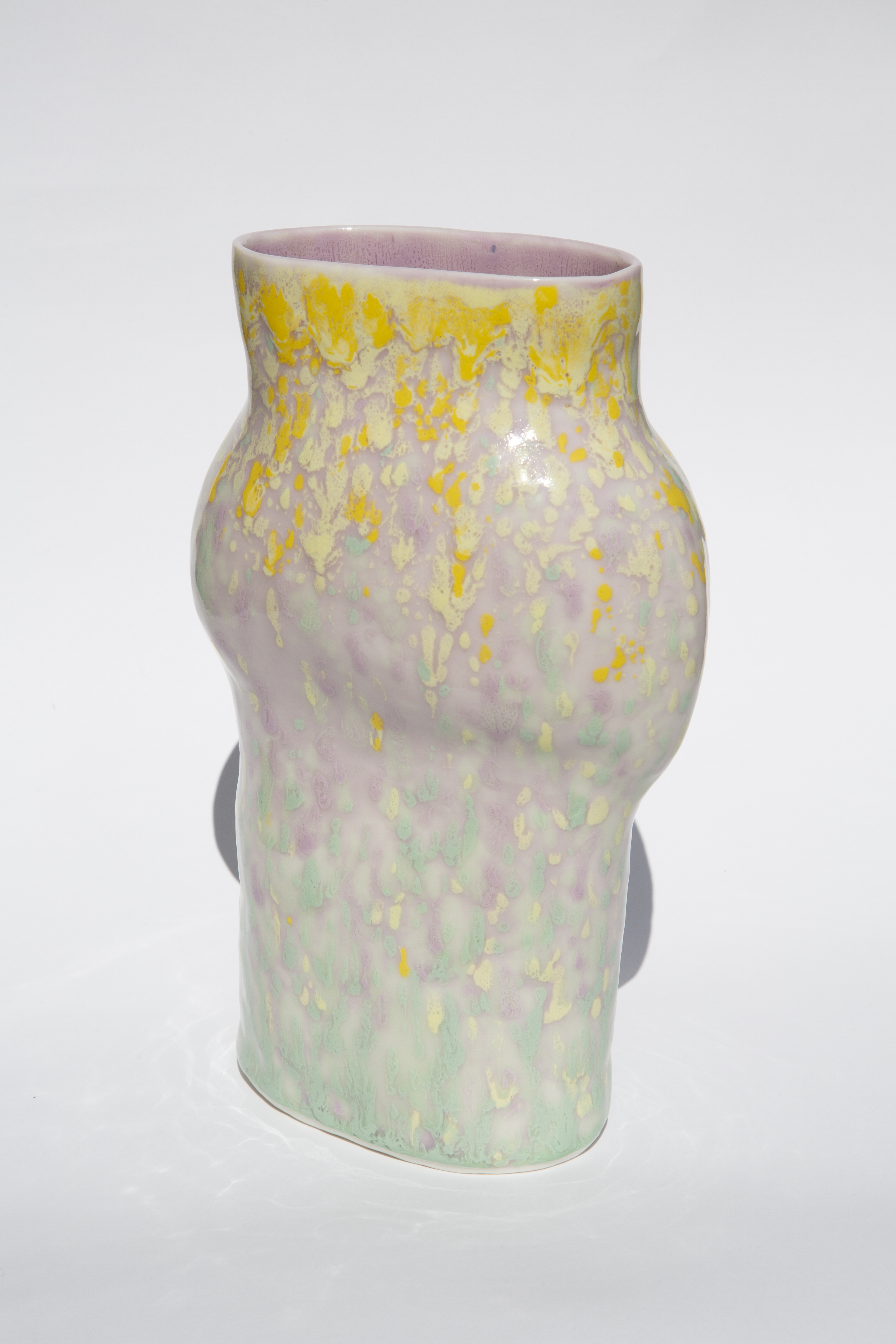
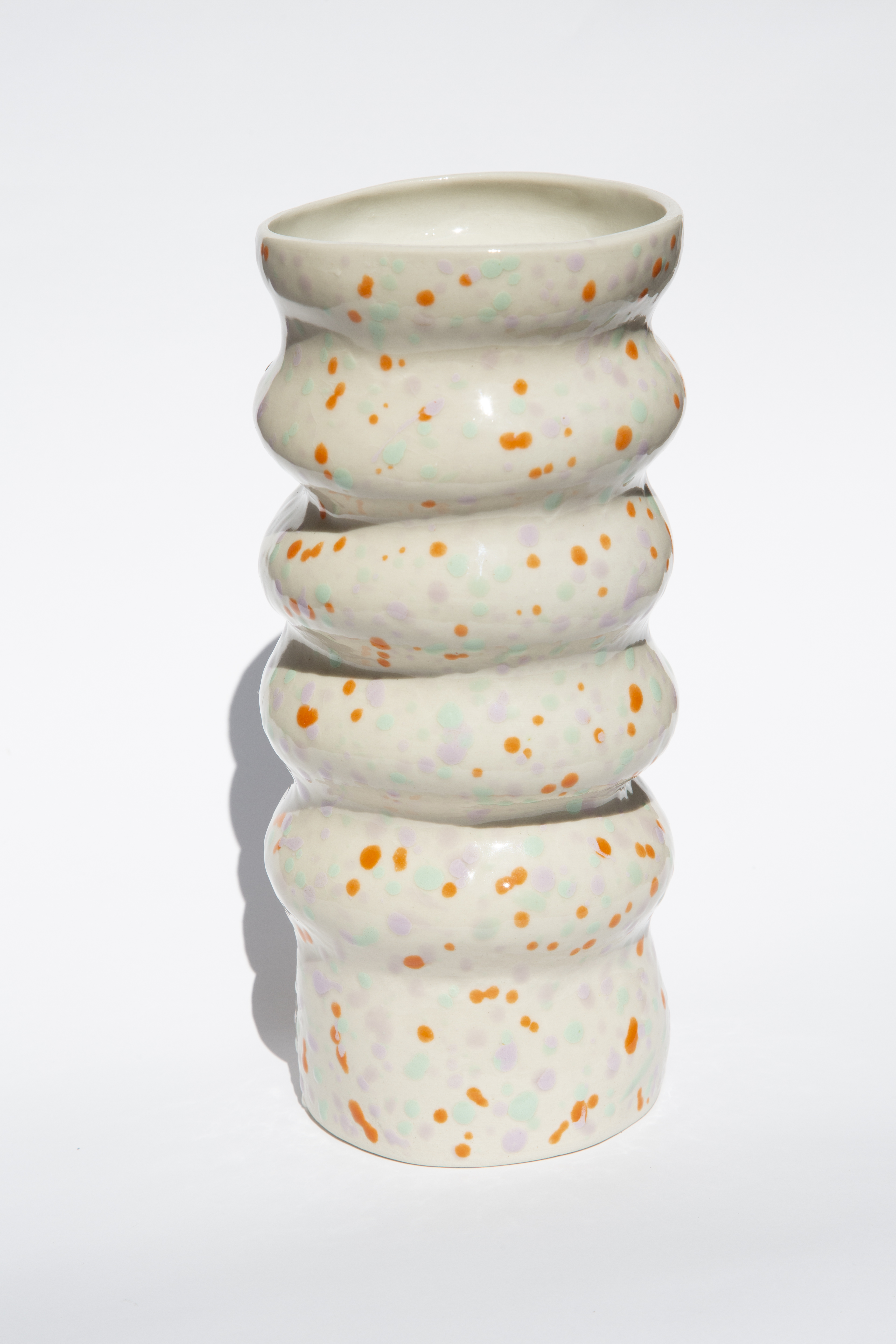

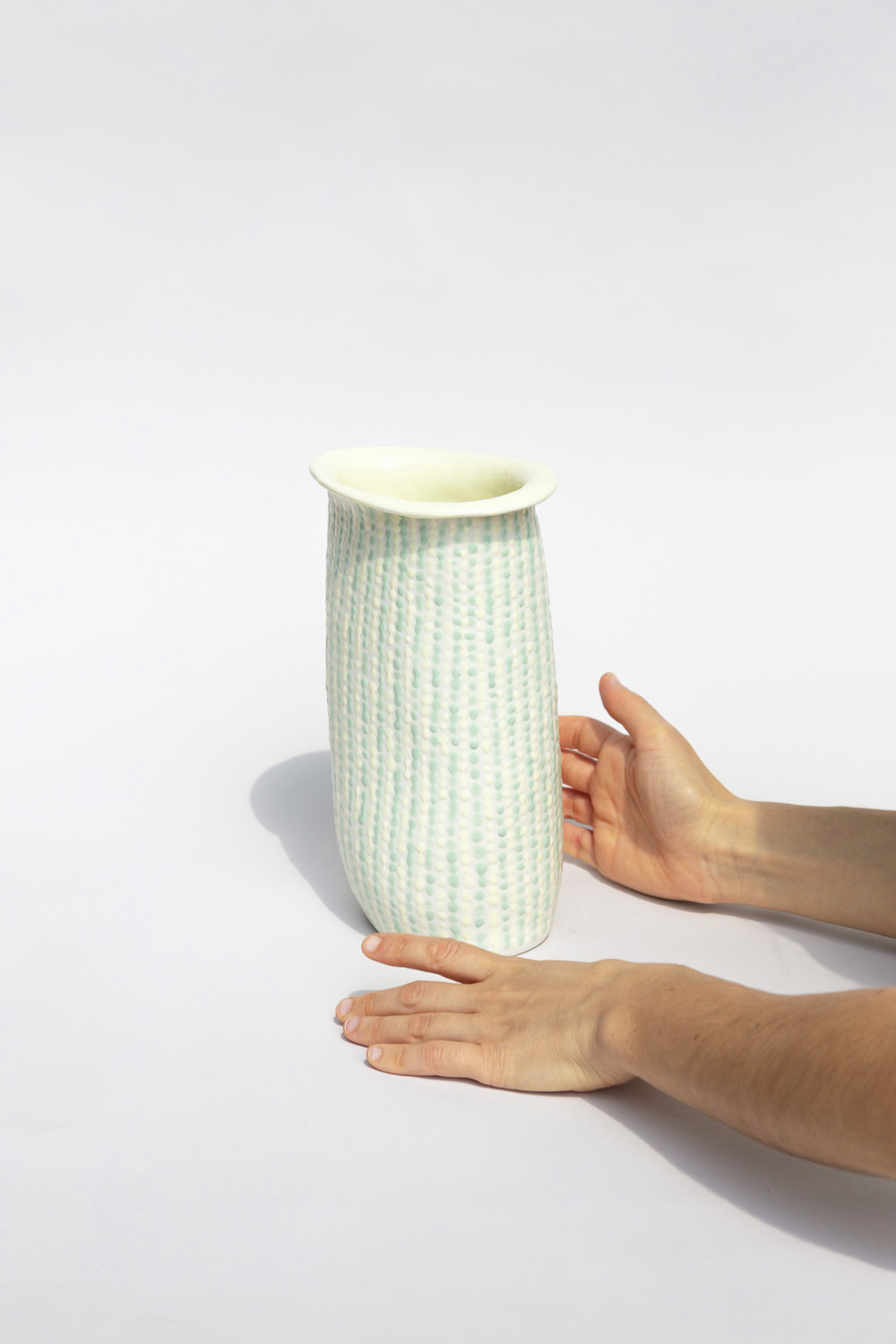
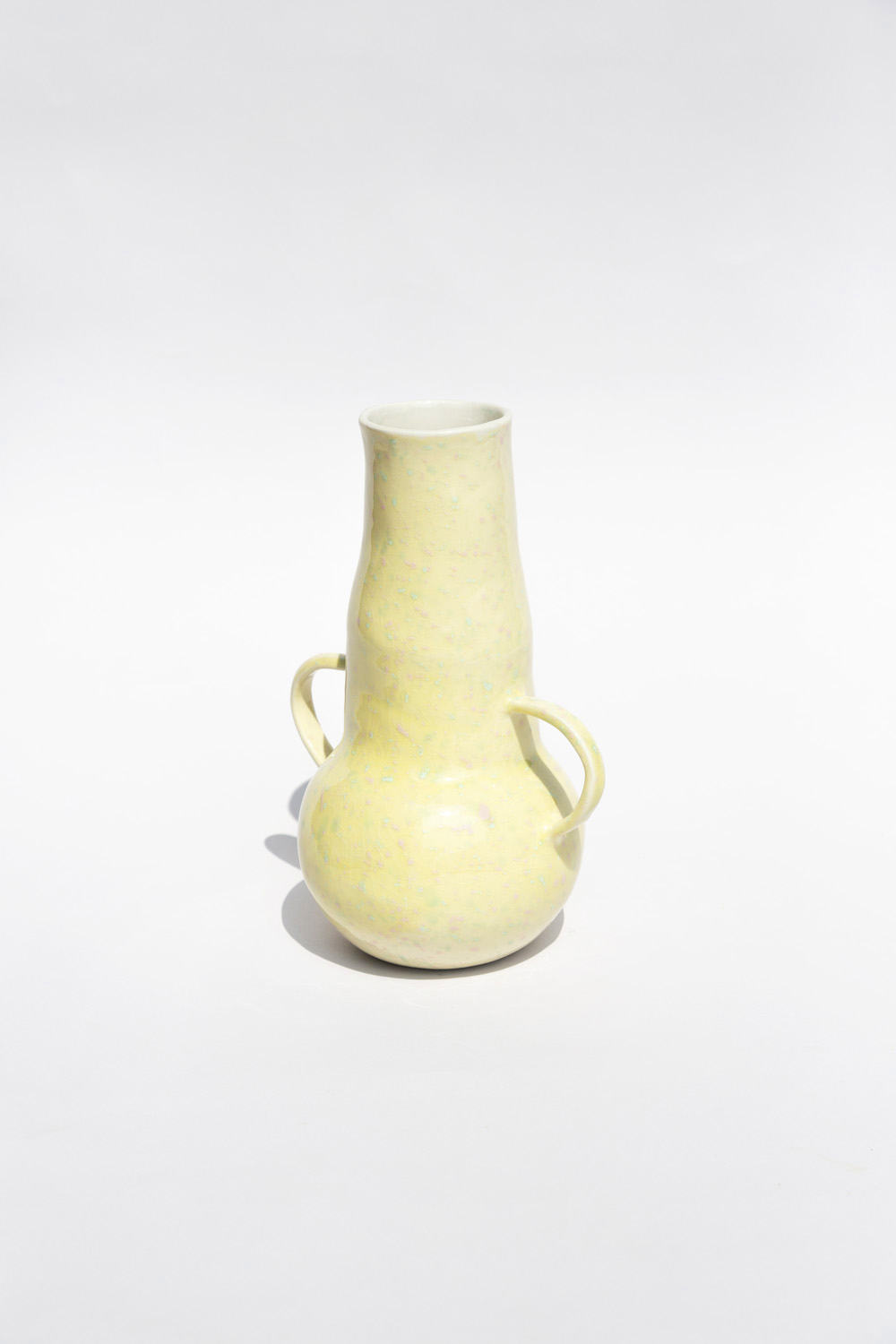

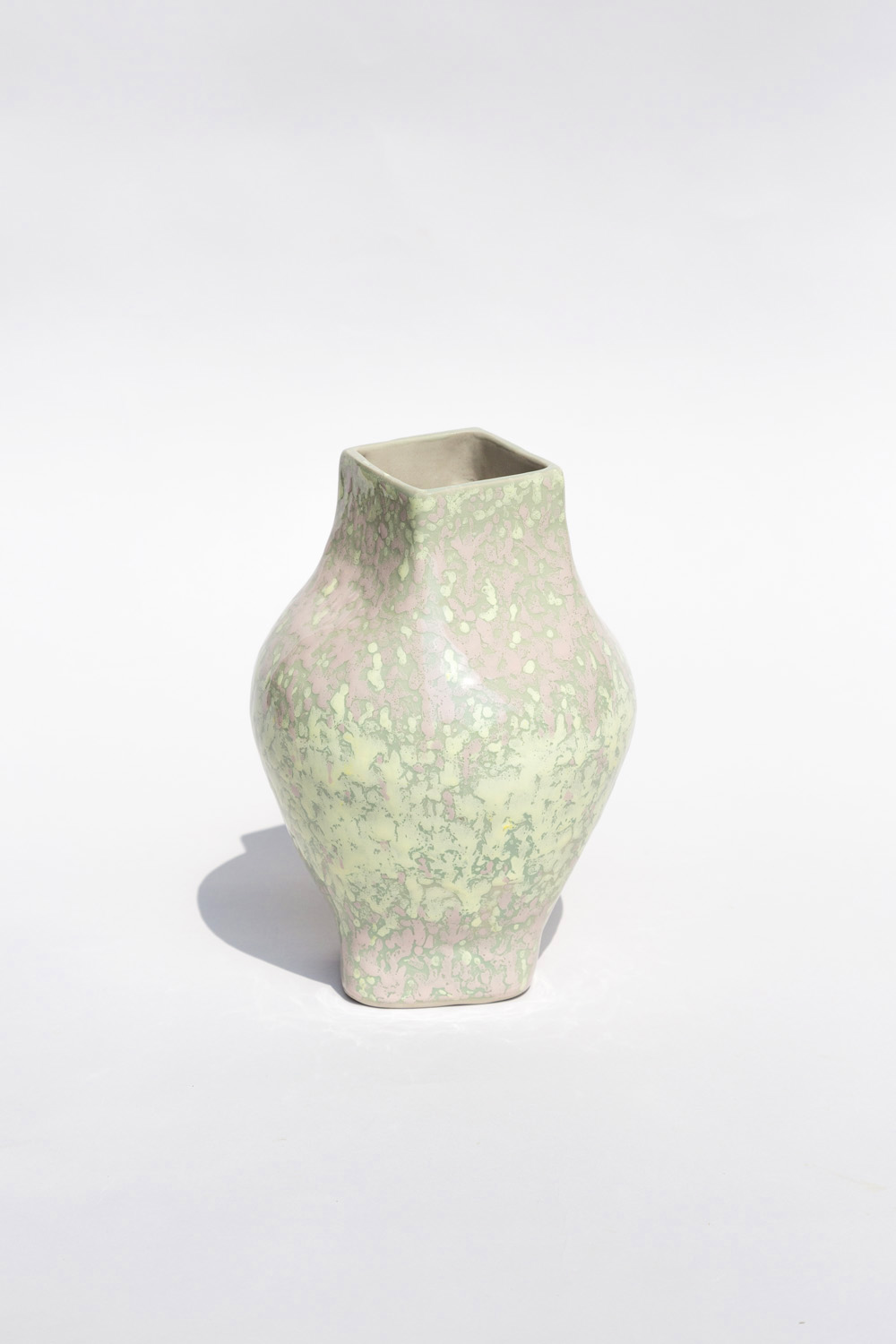

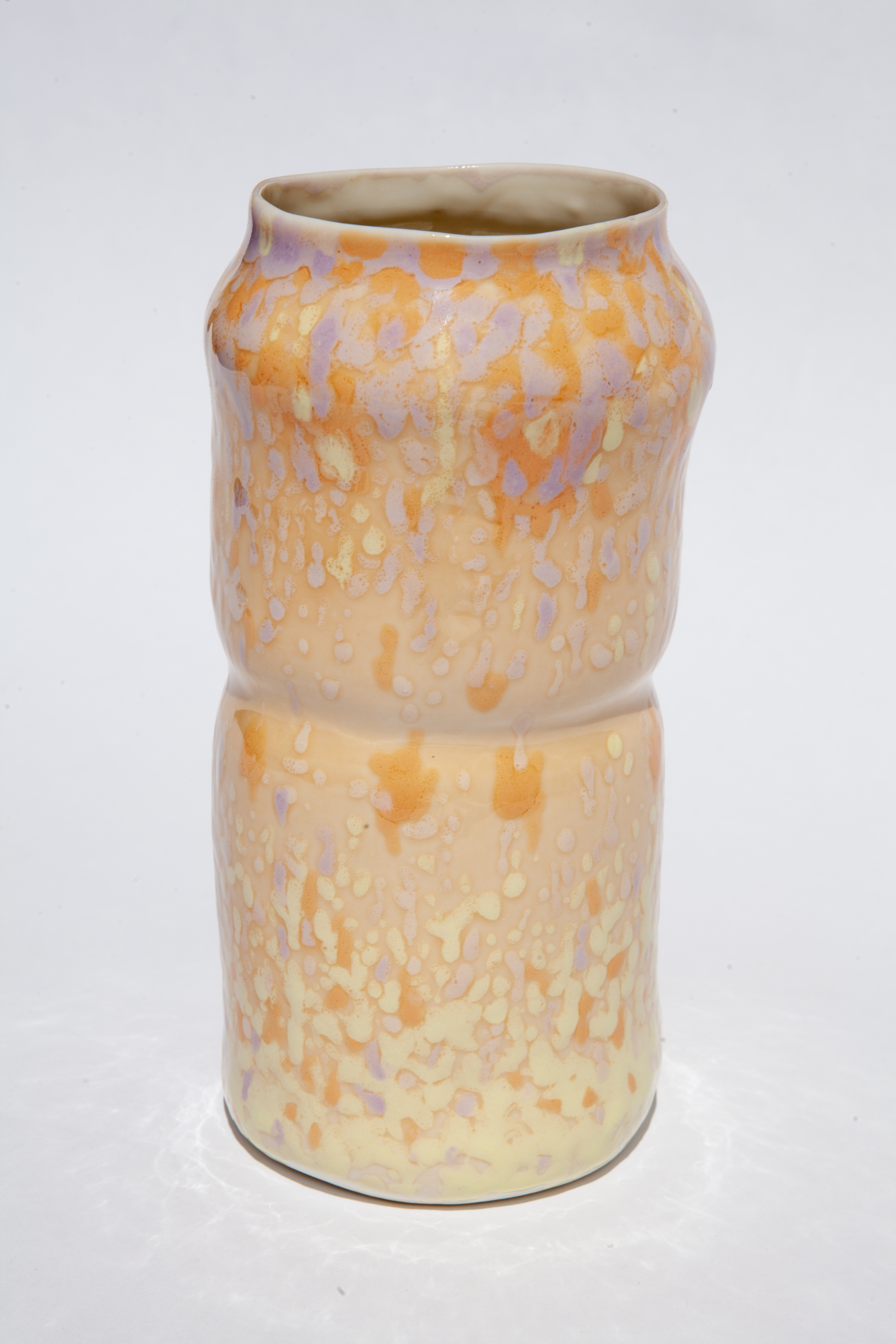
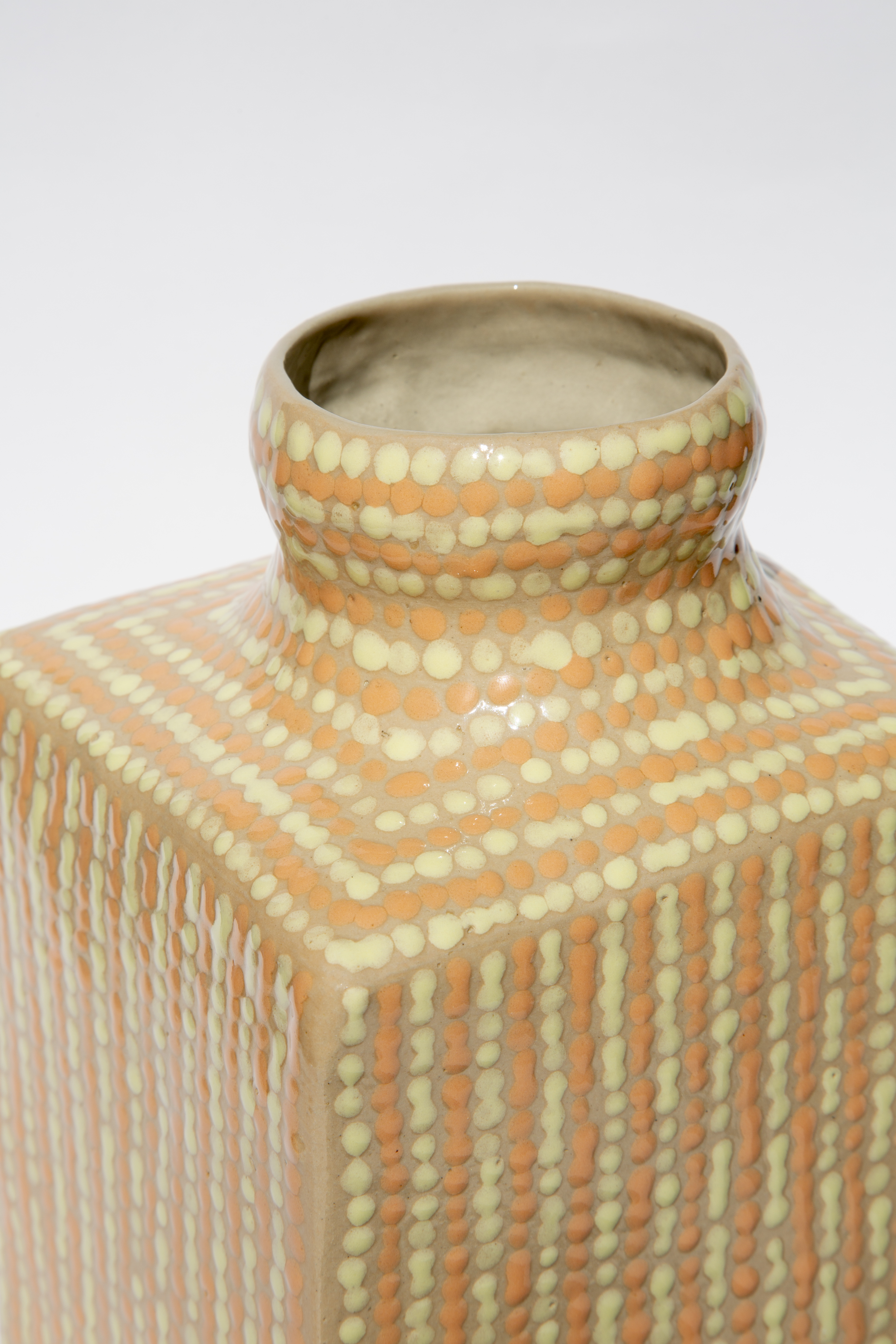
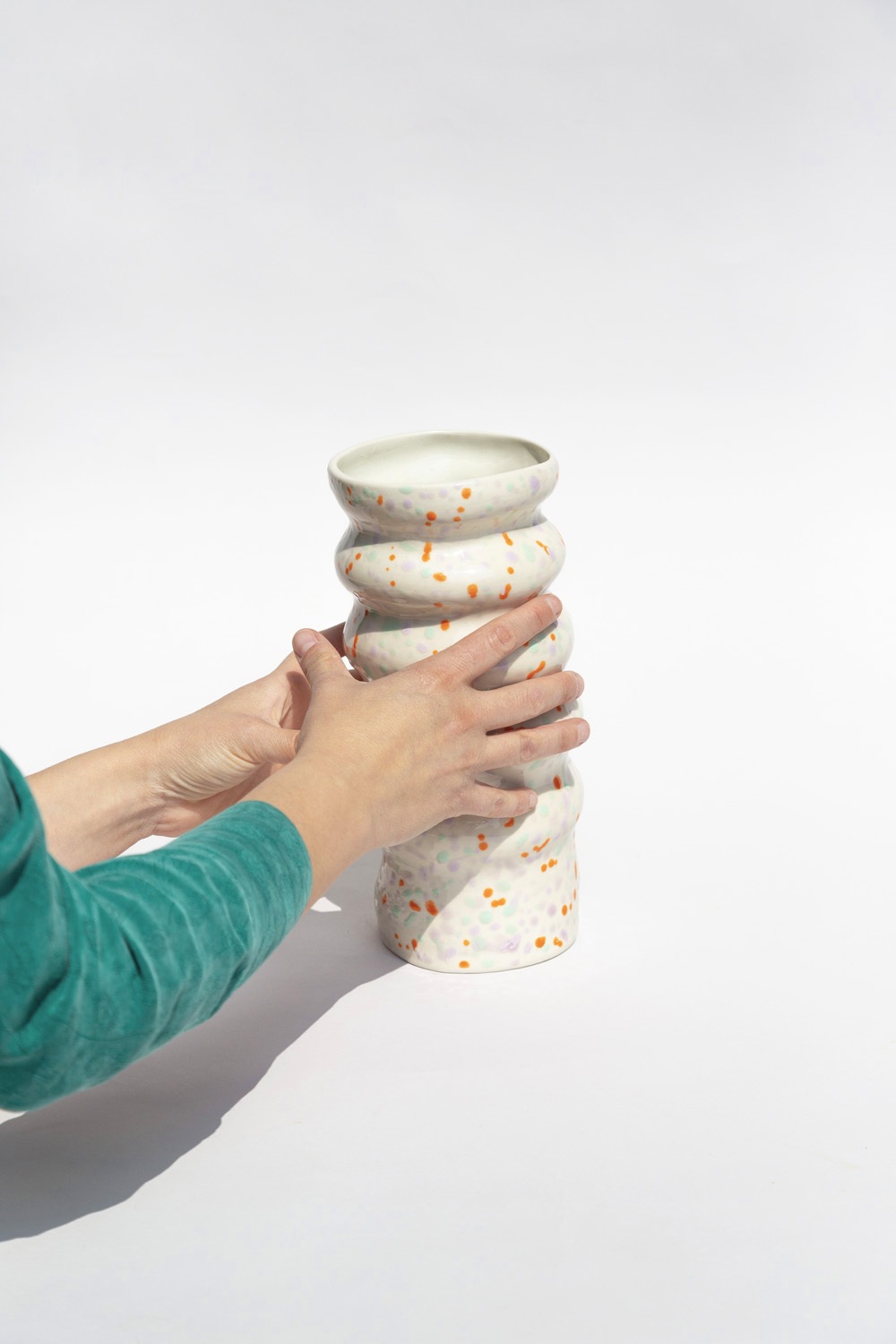
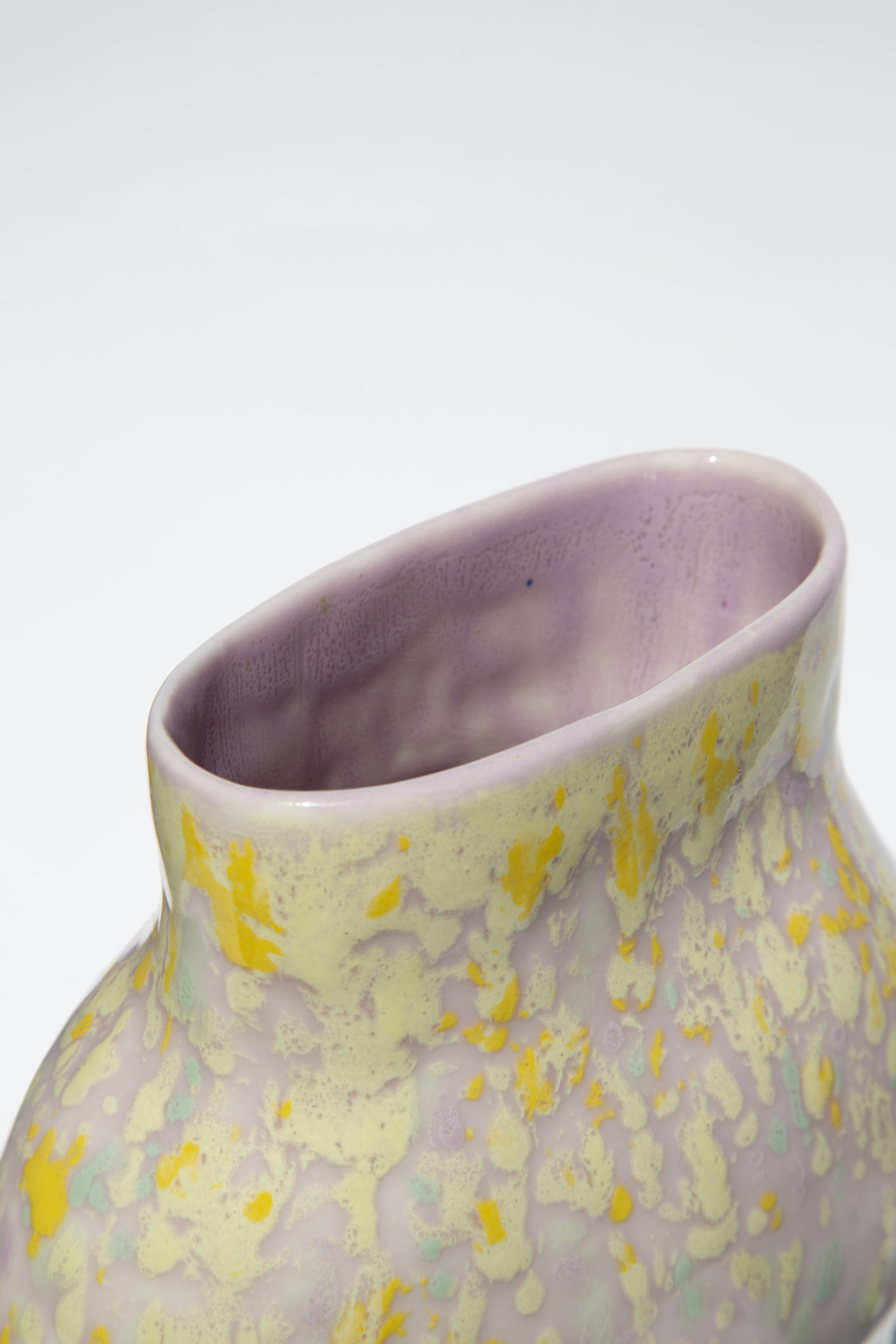
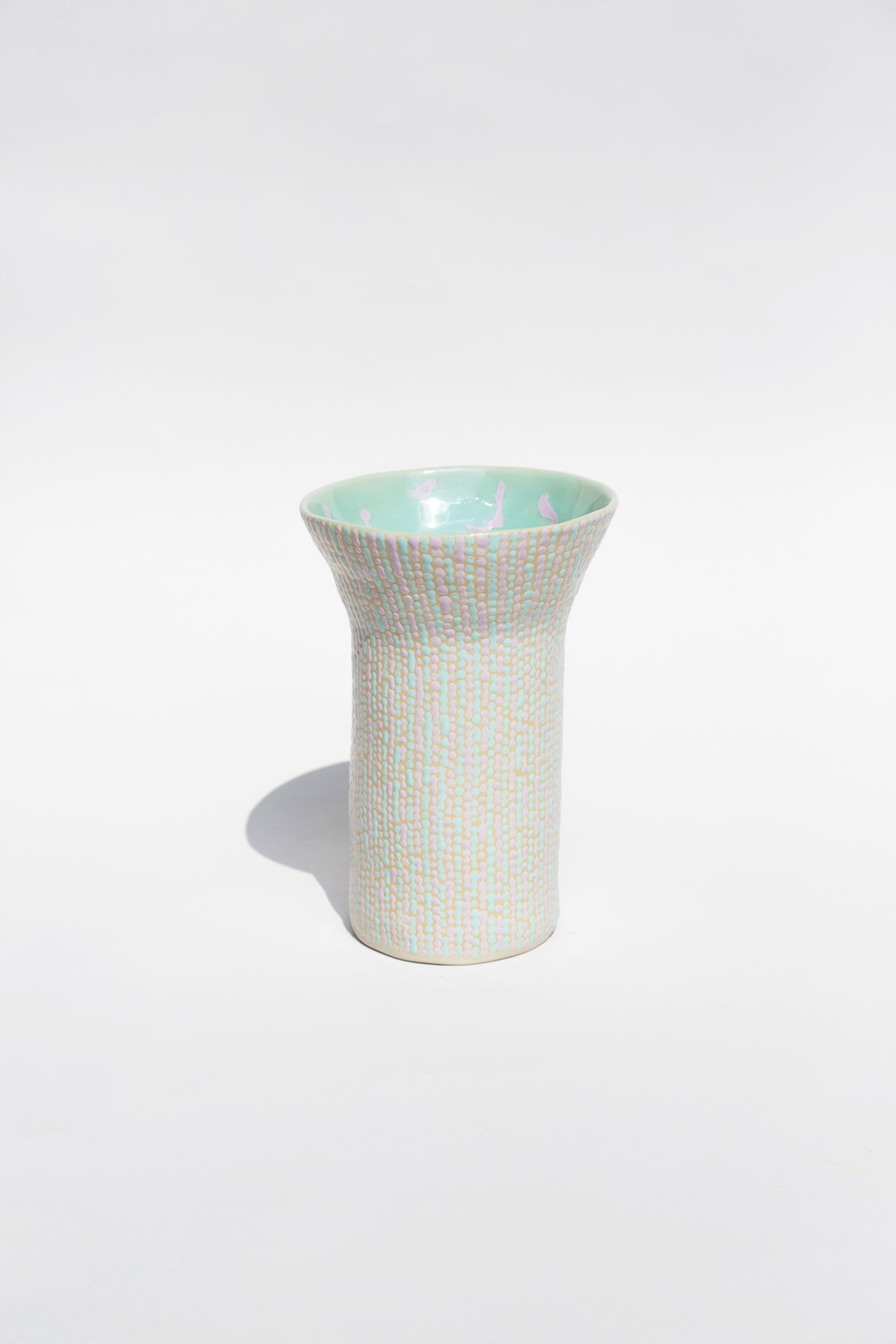
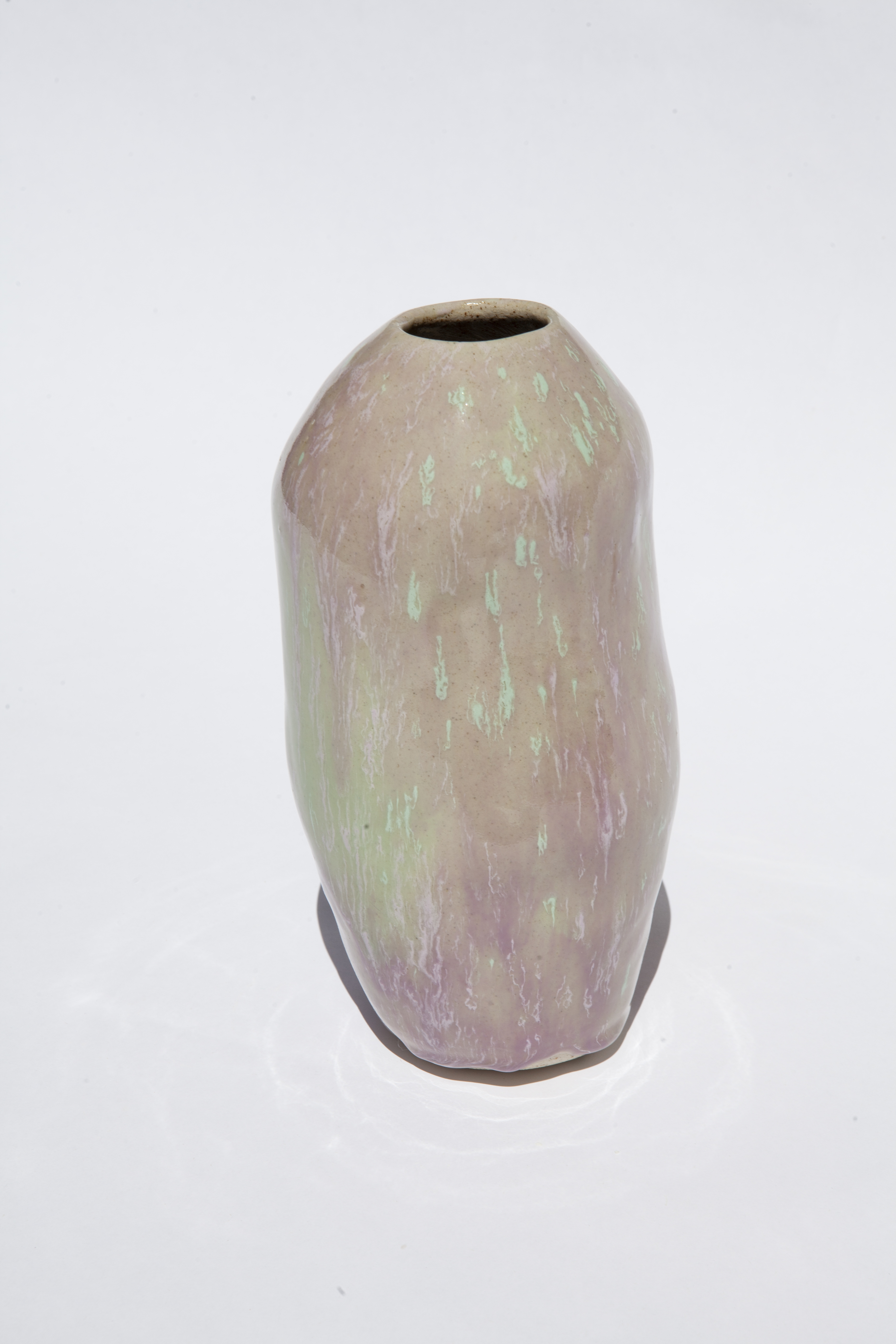
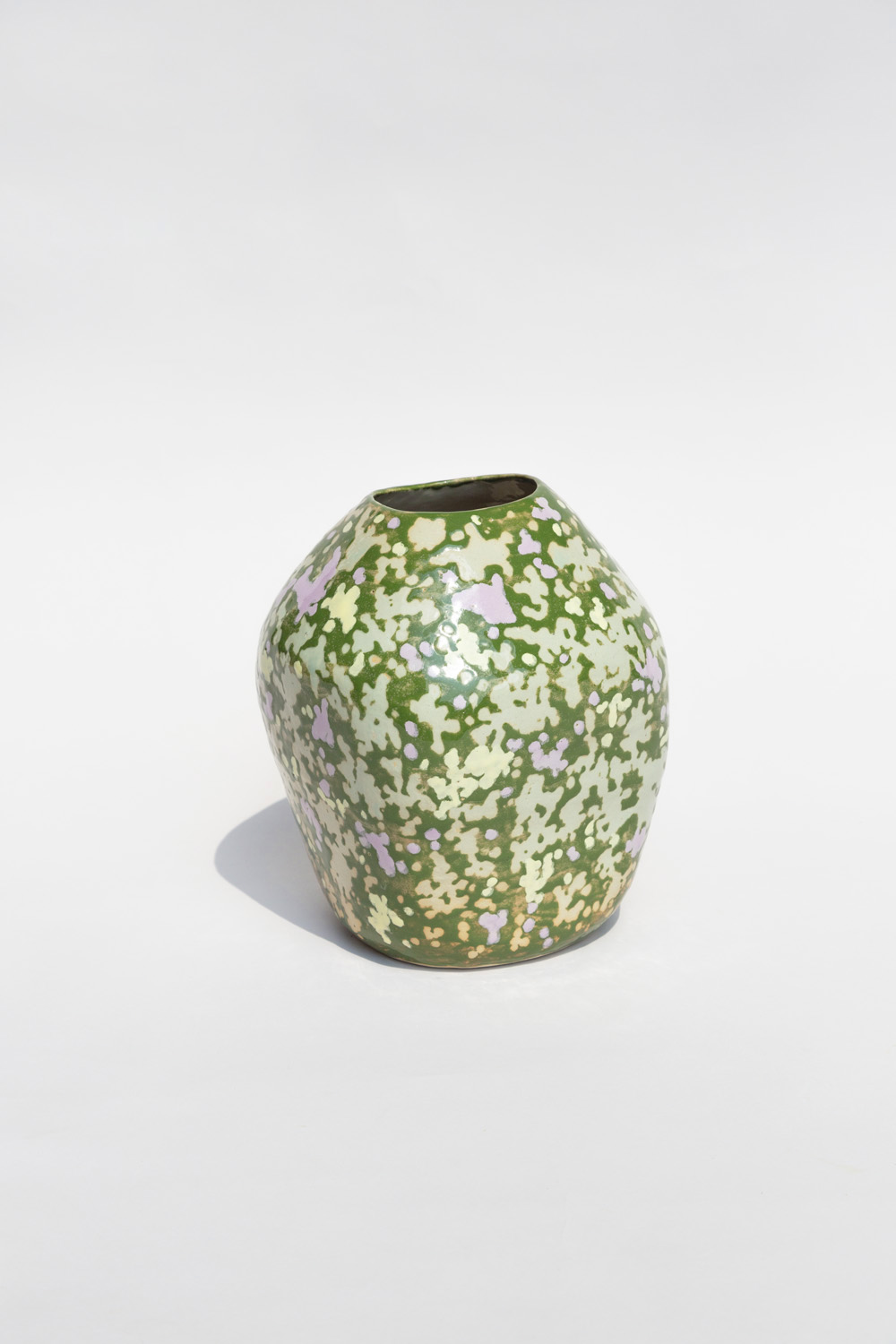
A collaboration with Caterina Gabelli, Alessandro Calabrese and Federico Clavarino staged on April 2021 in Milan.
︎Wounds (2020-2022)

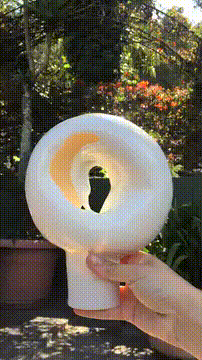

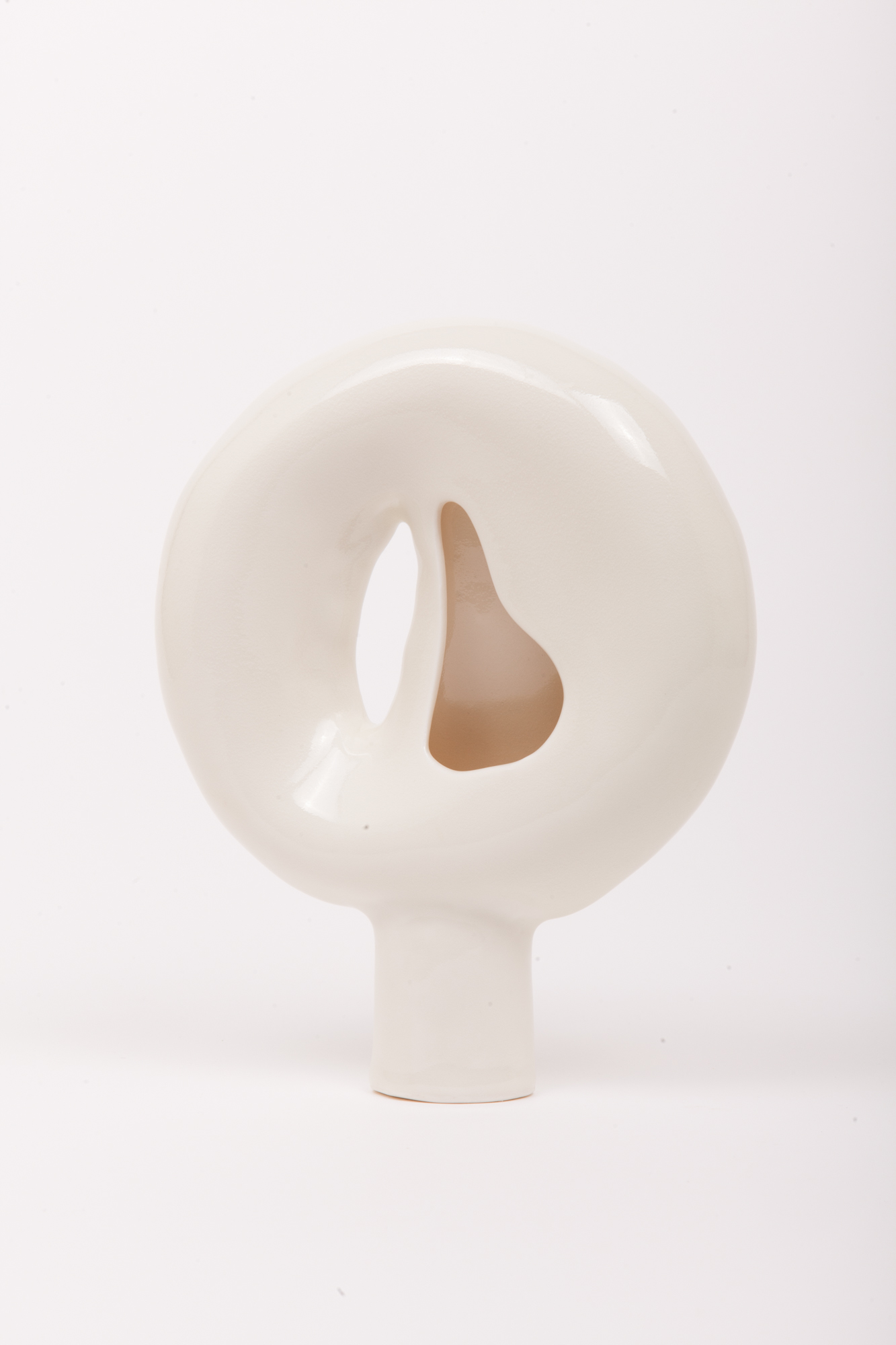
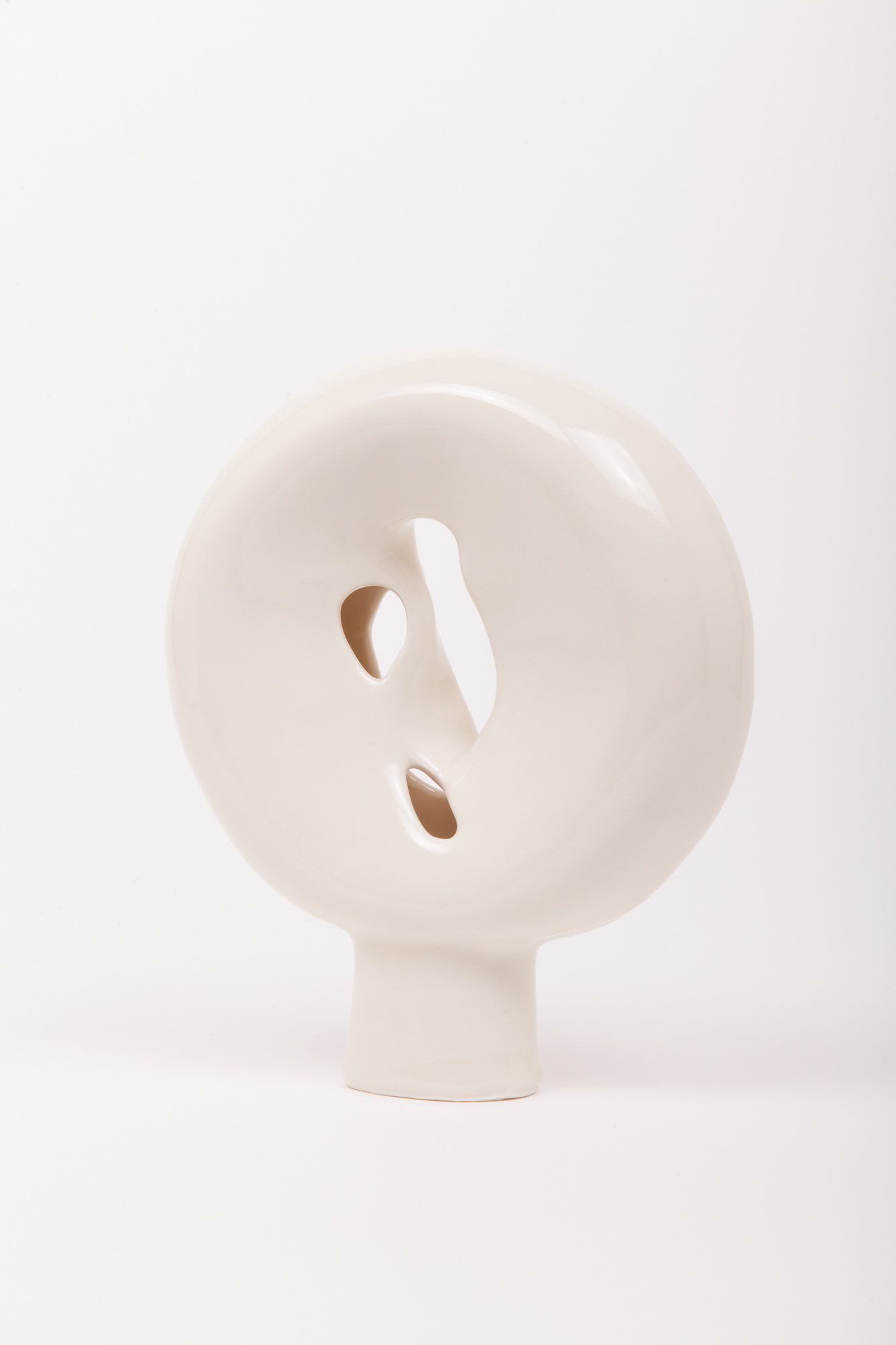
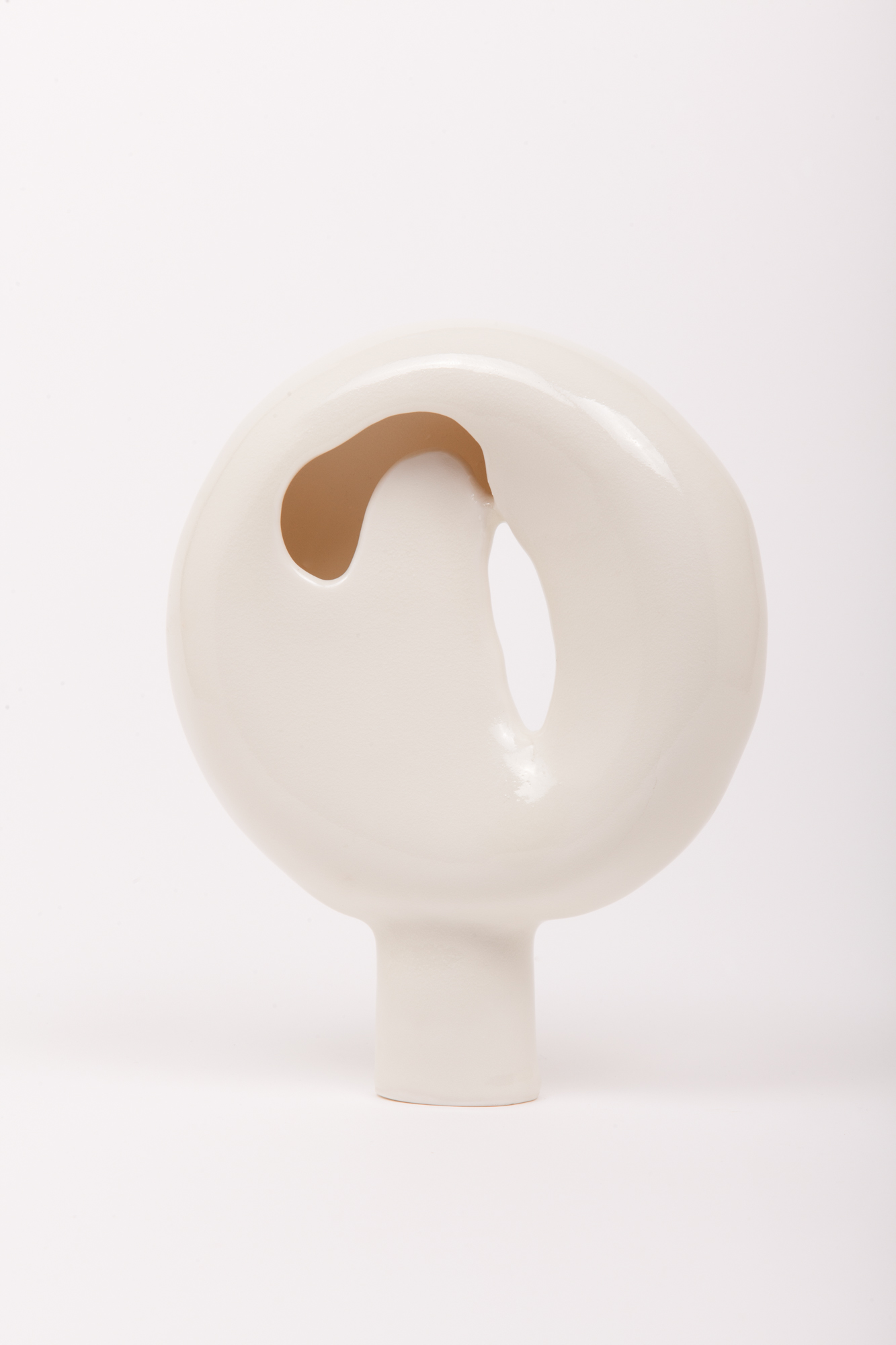
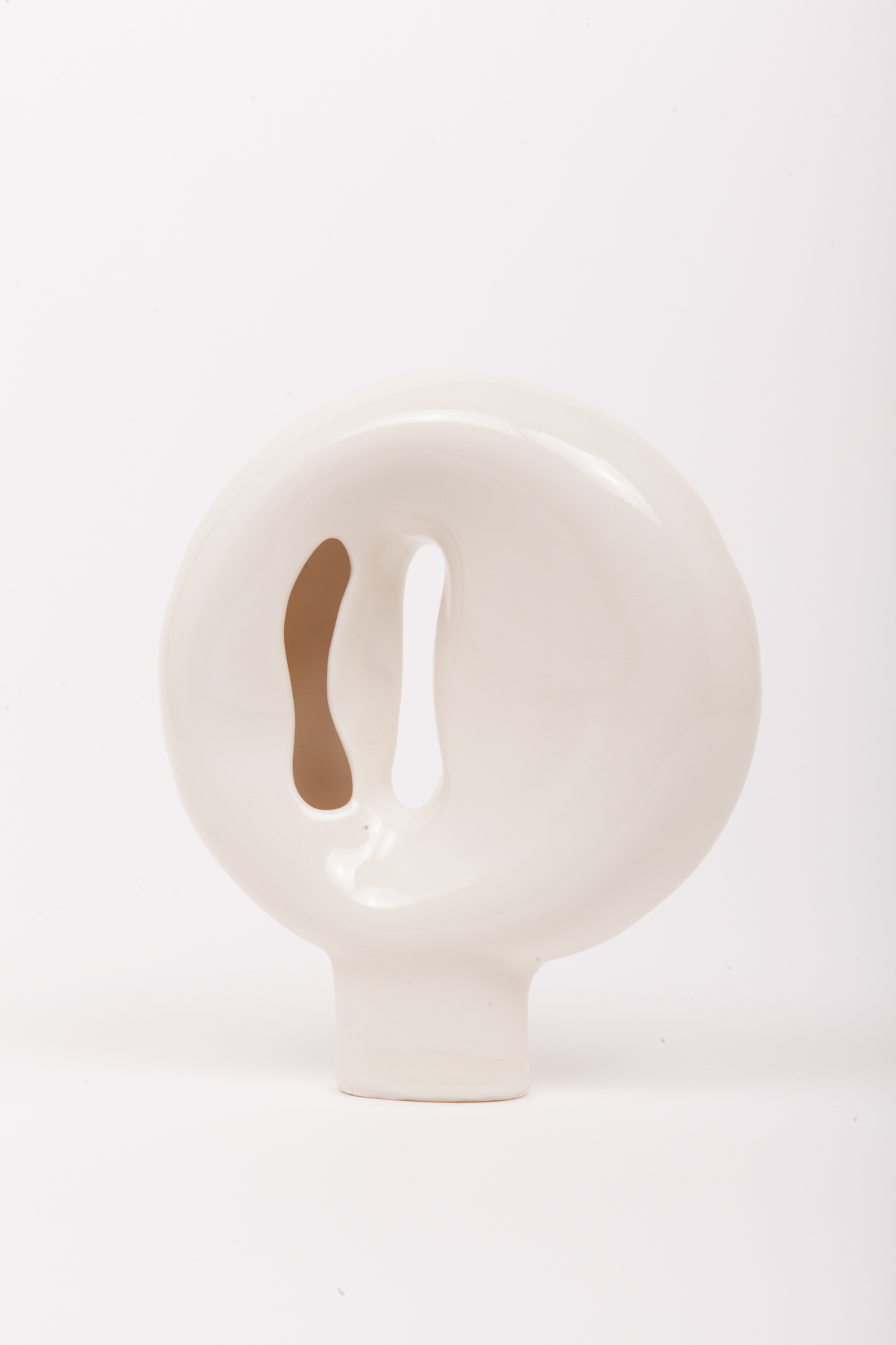
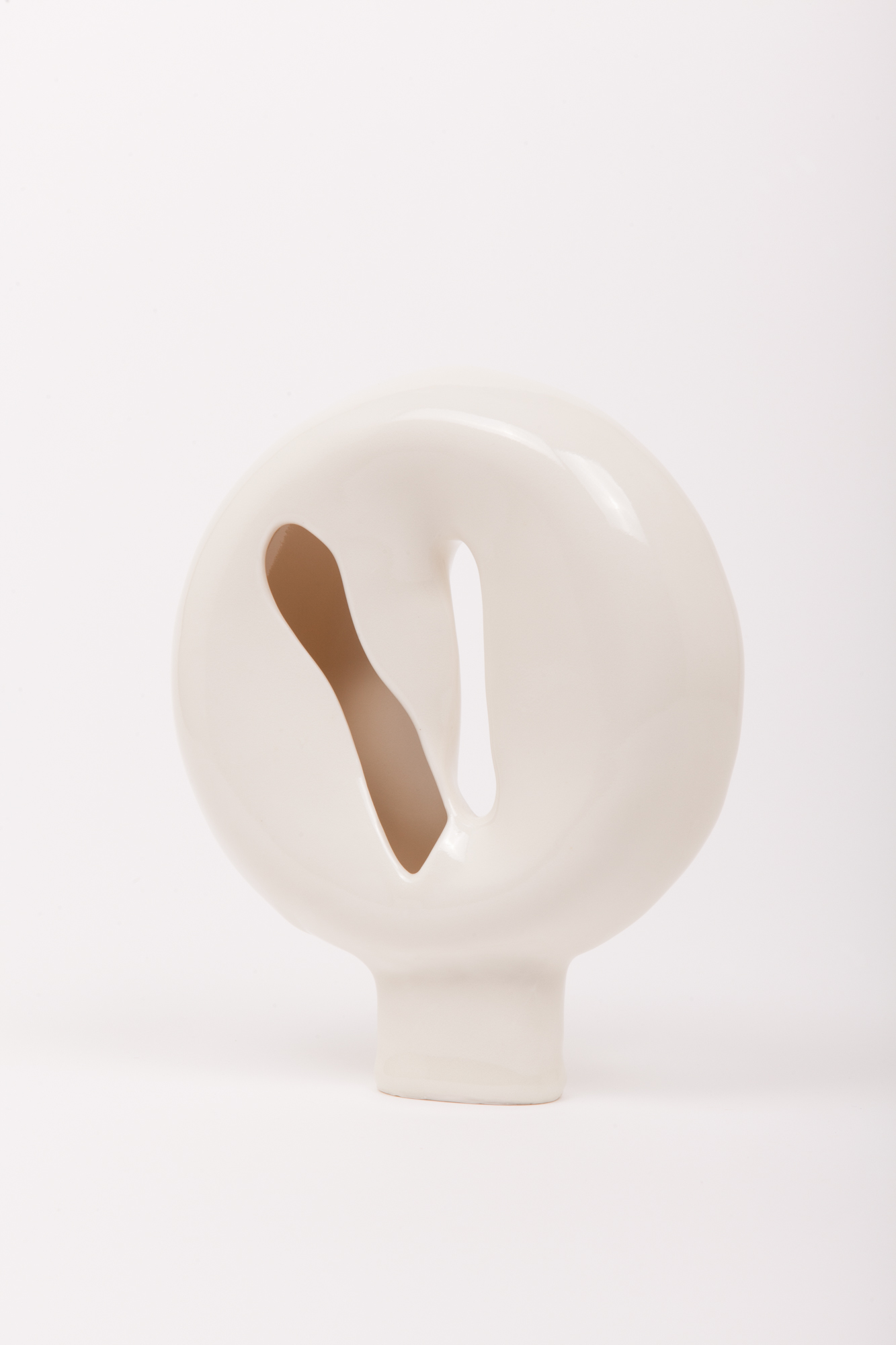
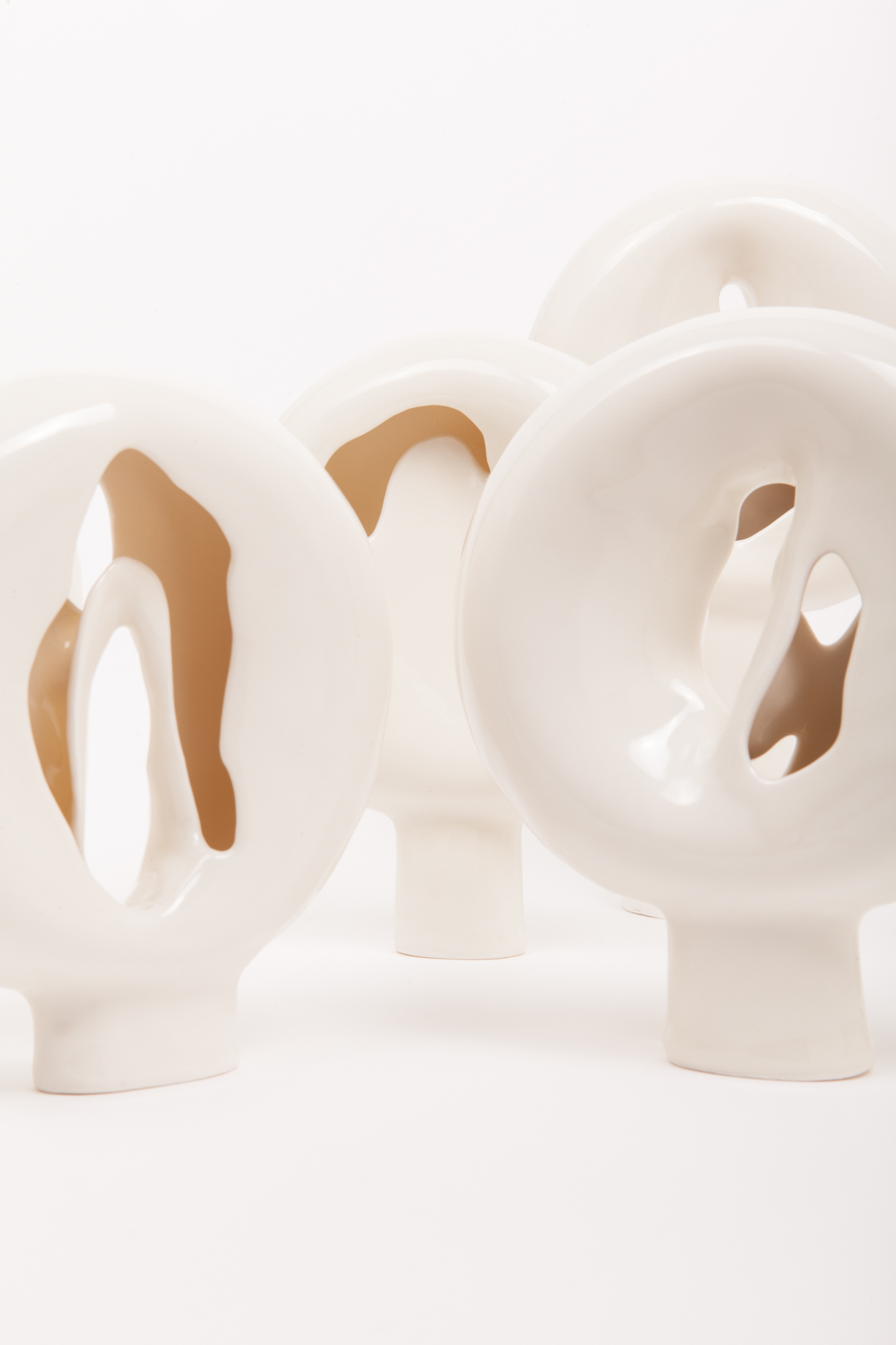
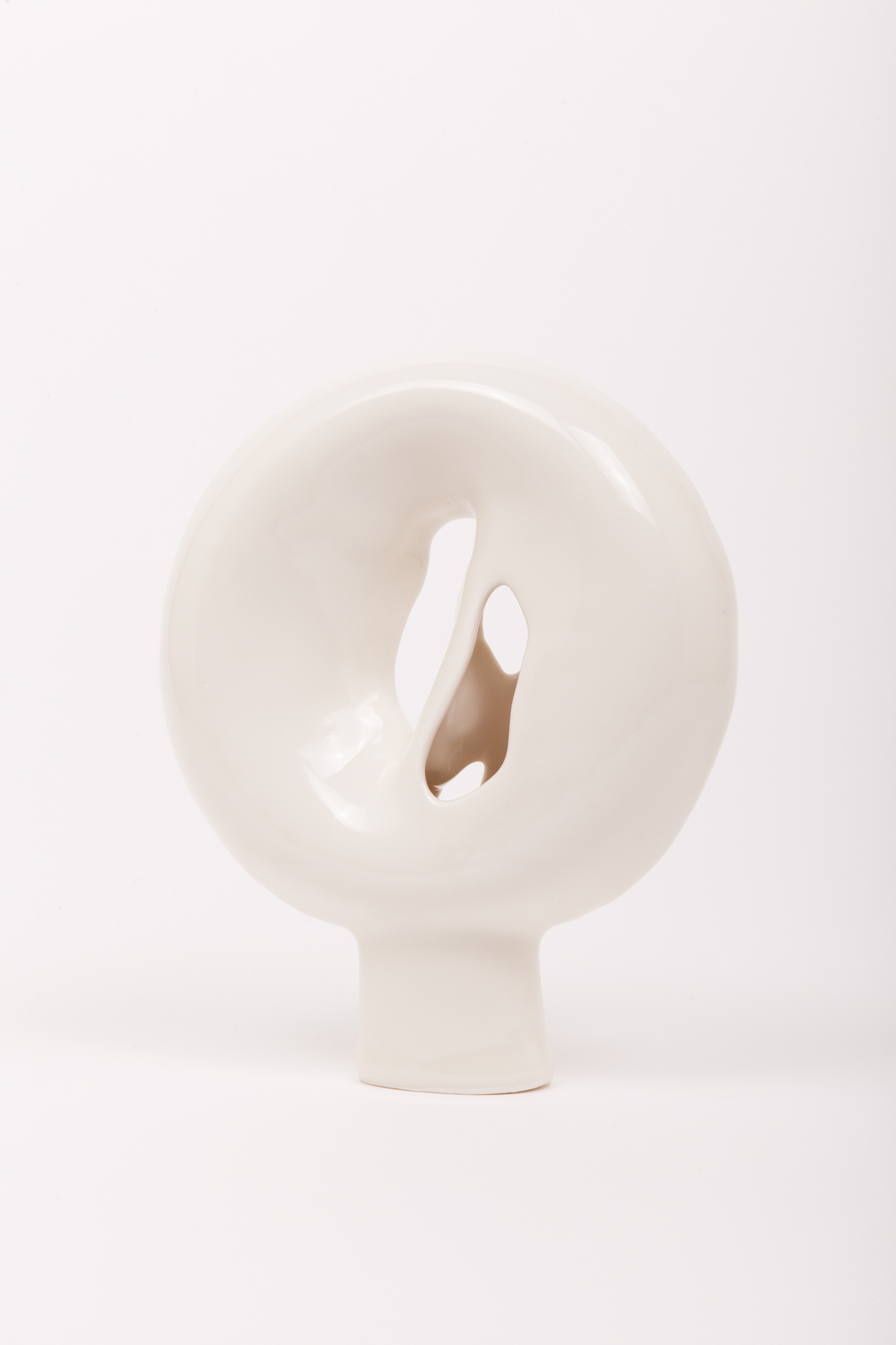
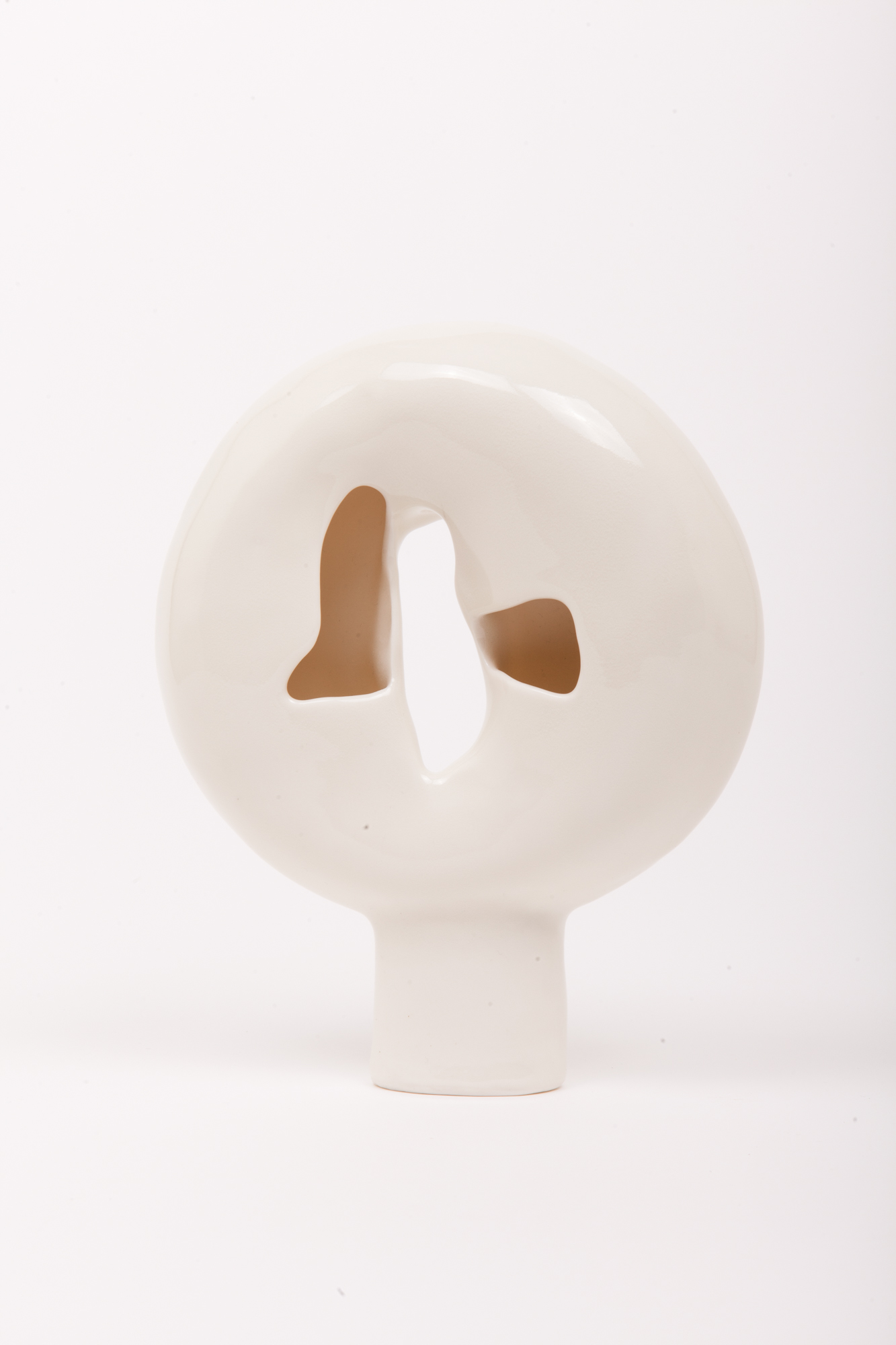

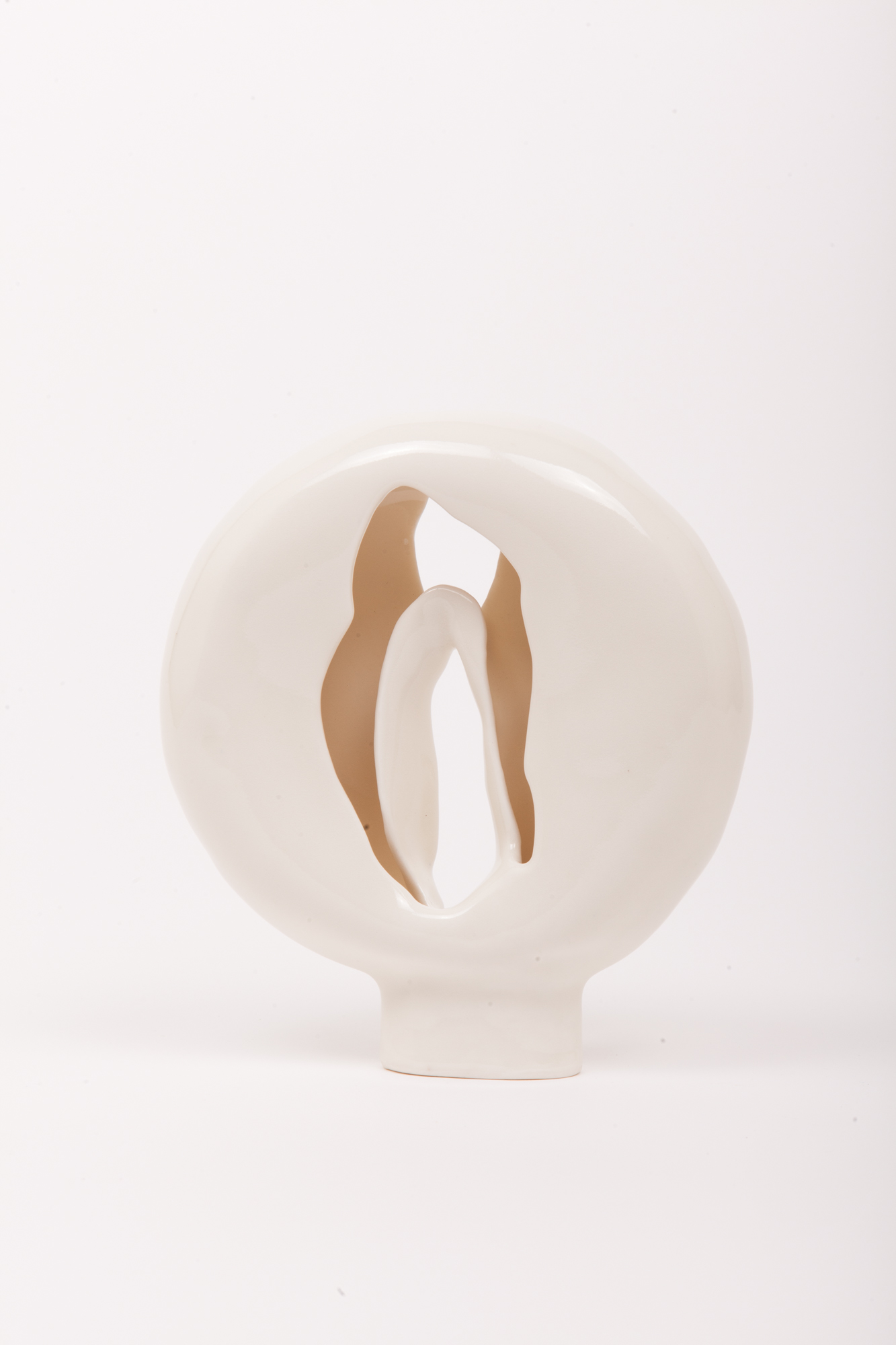
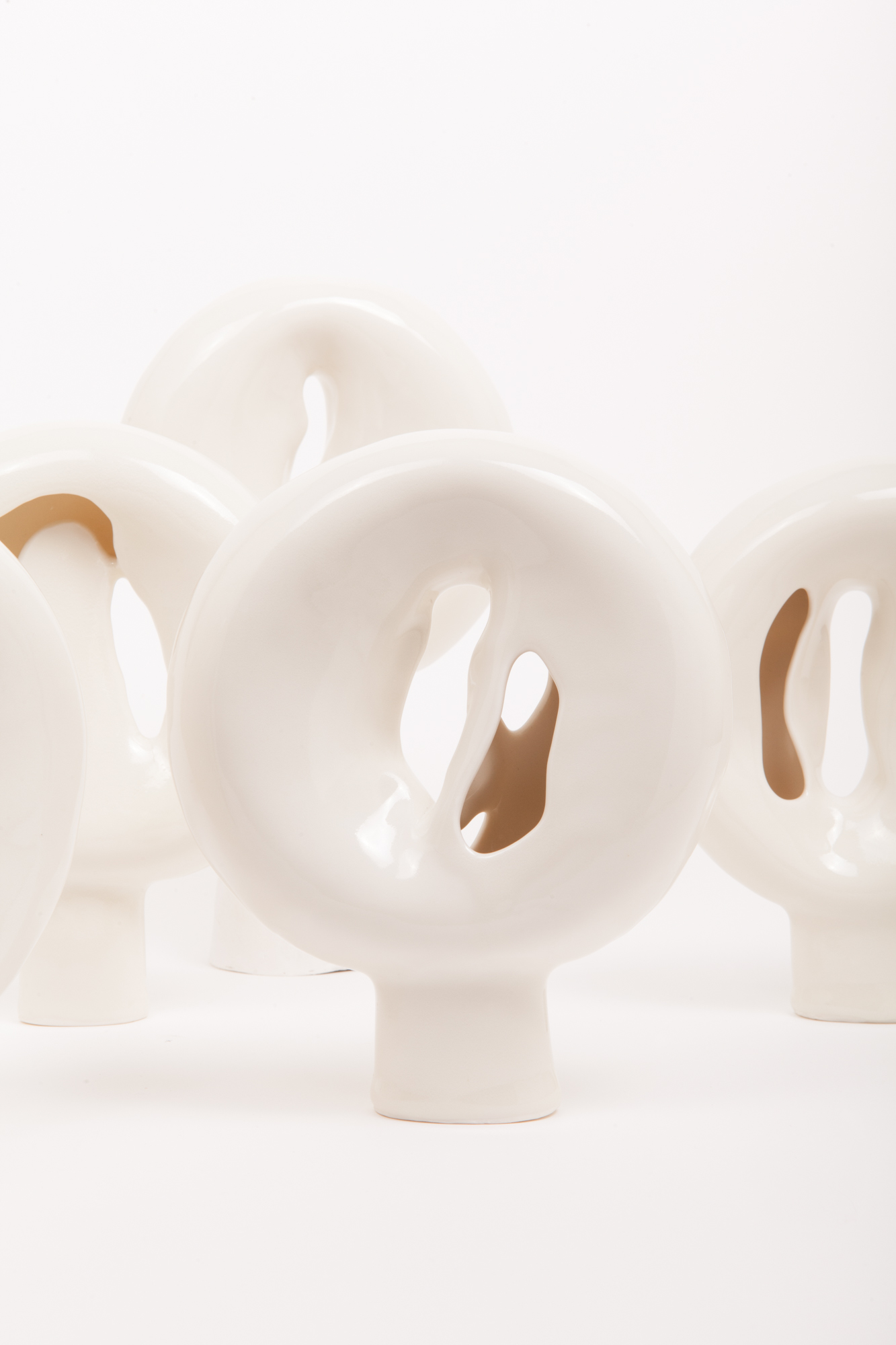
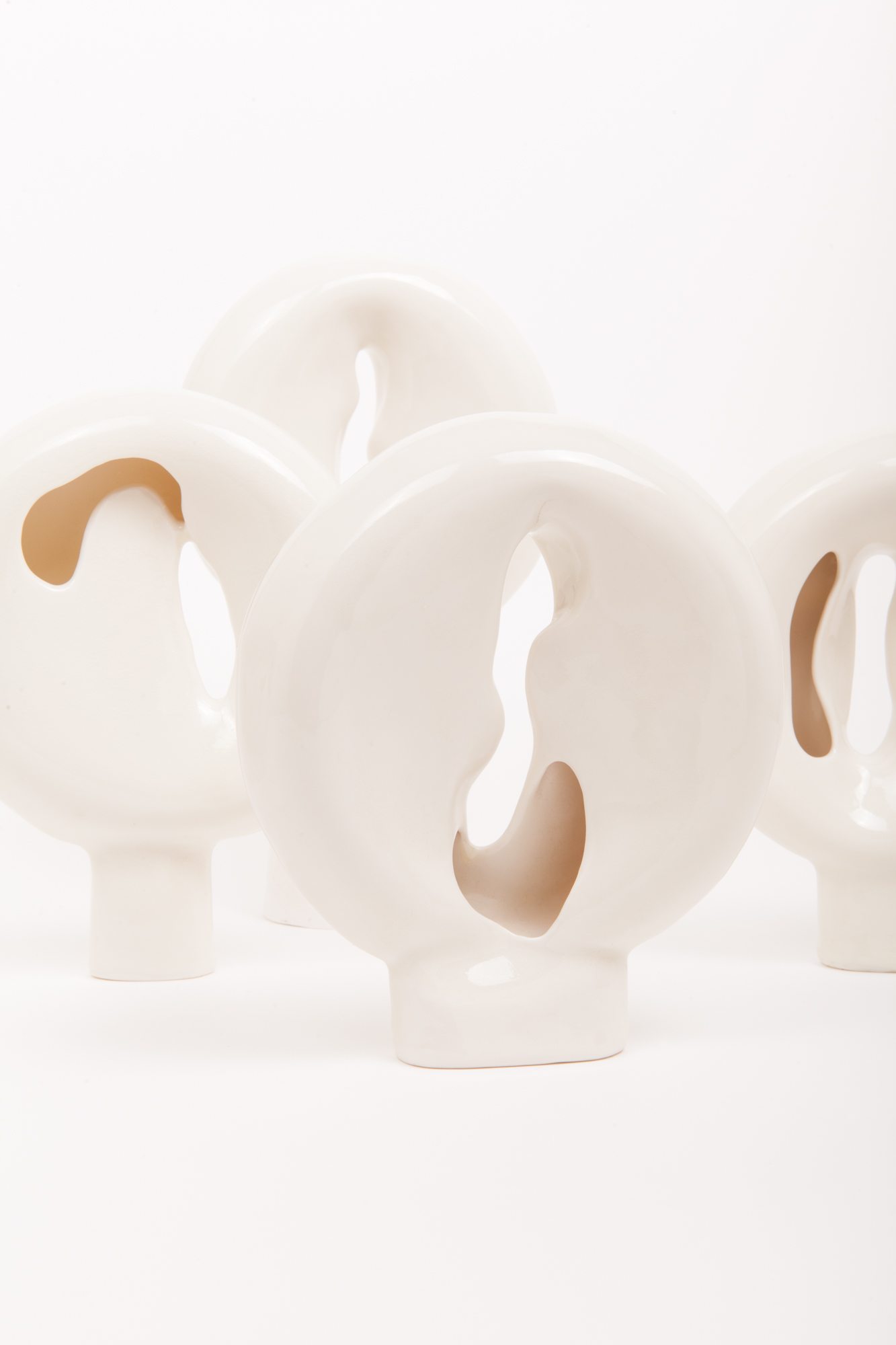
Porcelain is a material with memory. This means that no matter how many changes it undergoes, the initial transformations or interventions it is subjected to keep coming back. The holes seen in these works follow the cracks that showed up when the pieces were dry, further exposing the “error” instead of trying to conceal it.
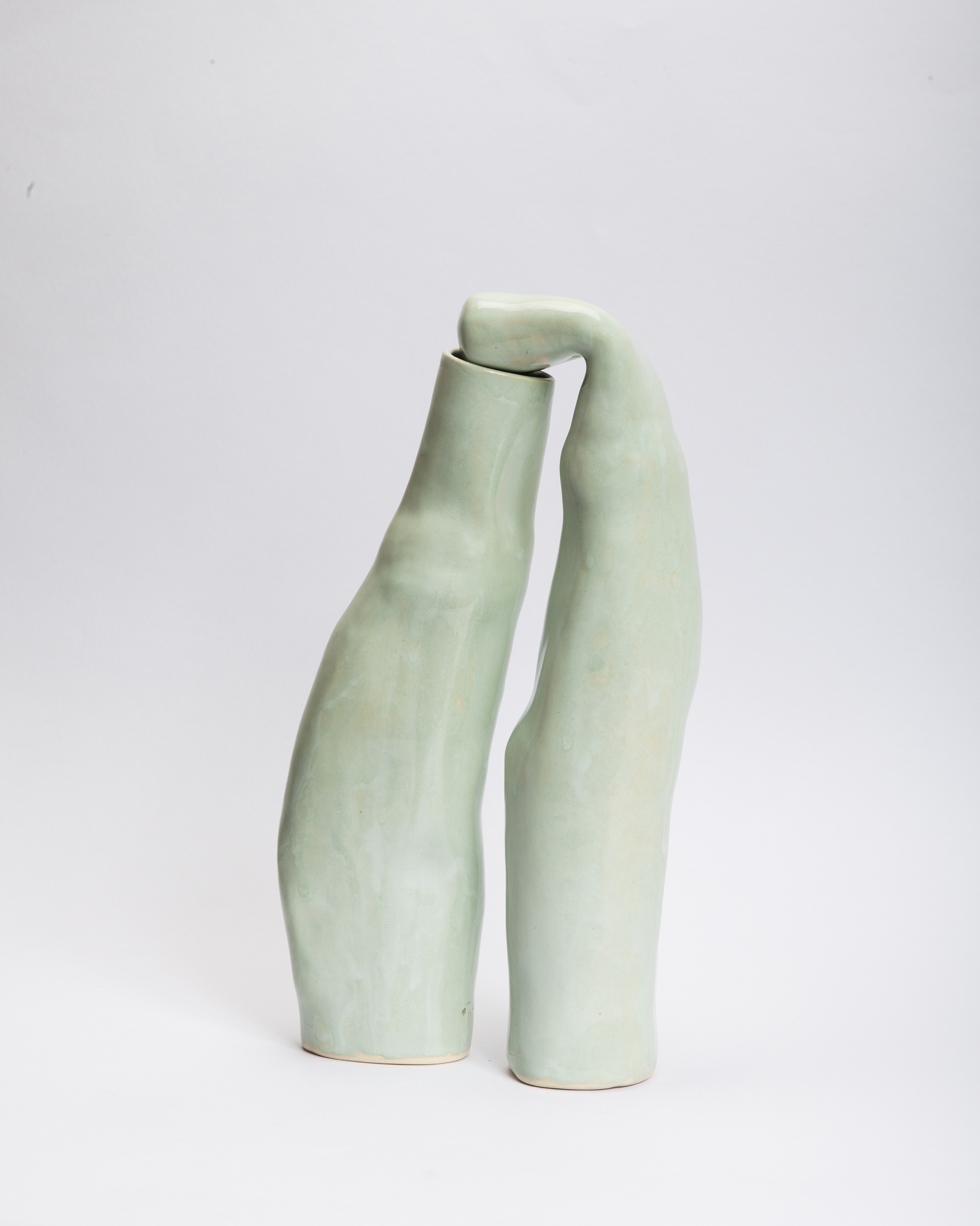
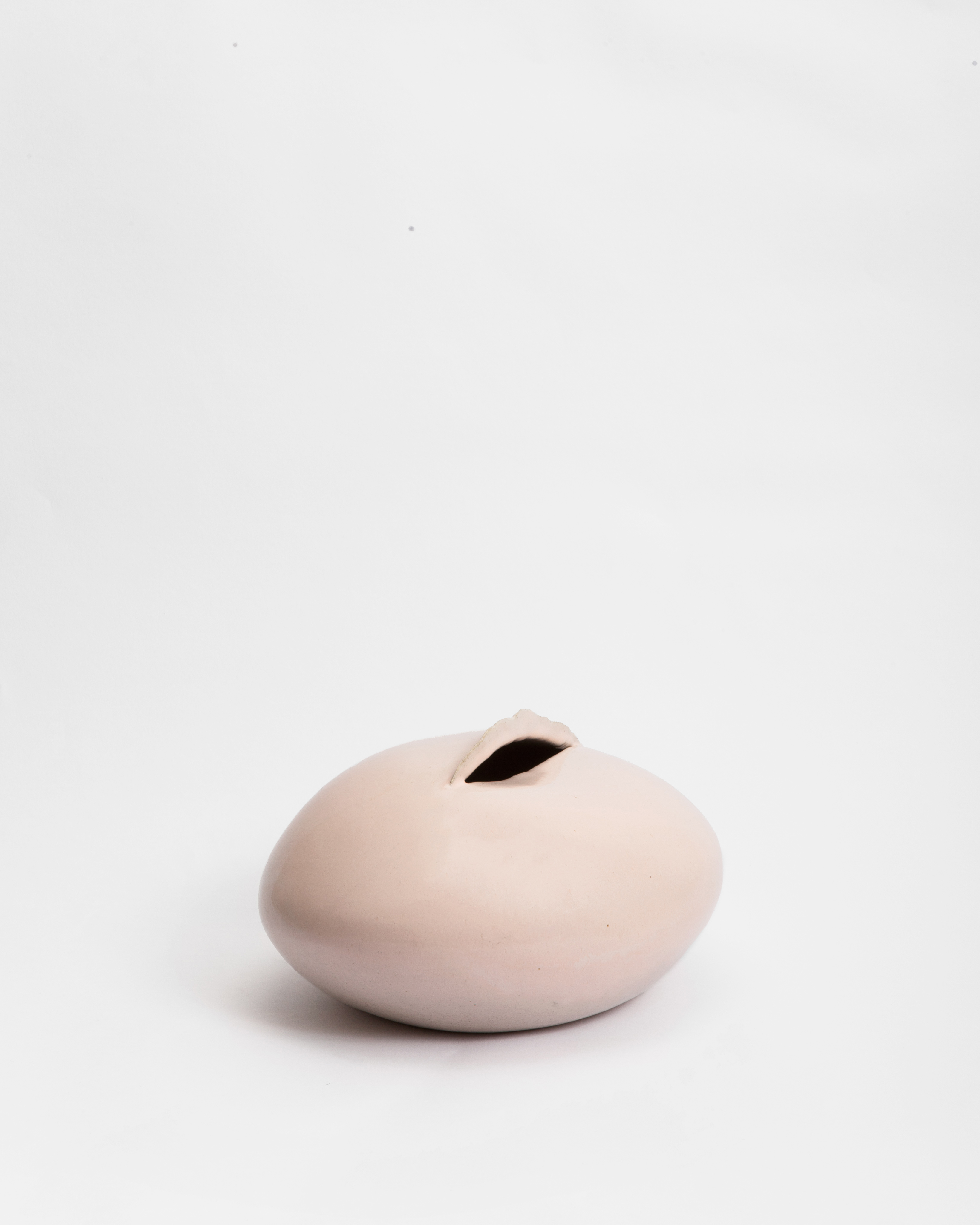
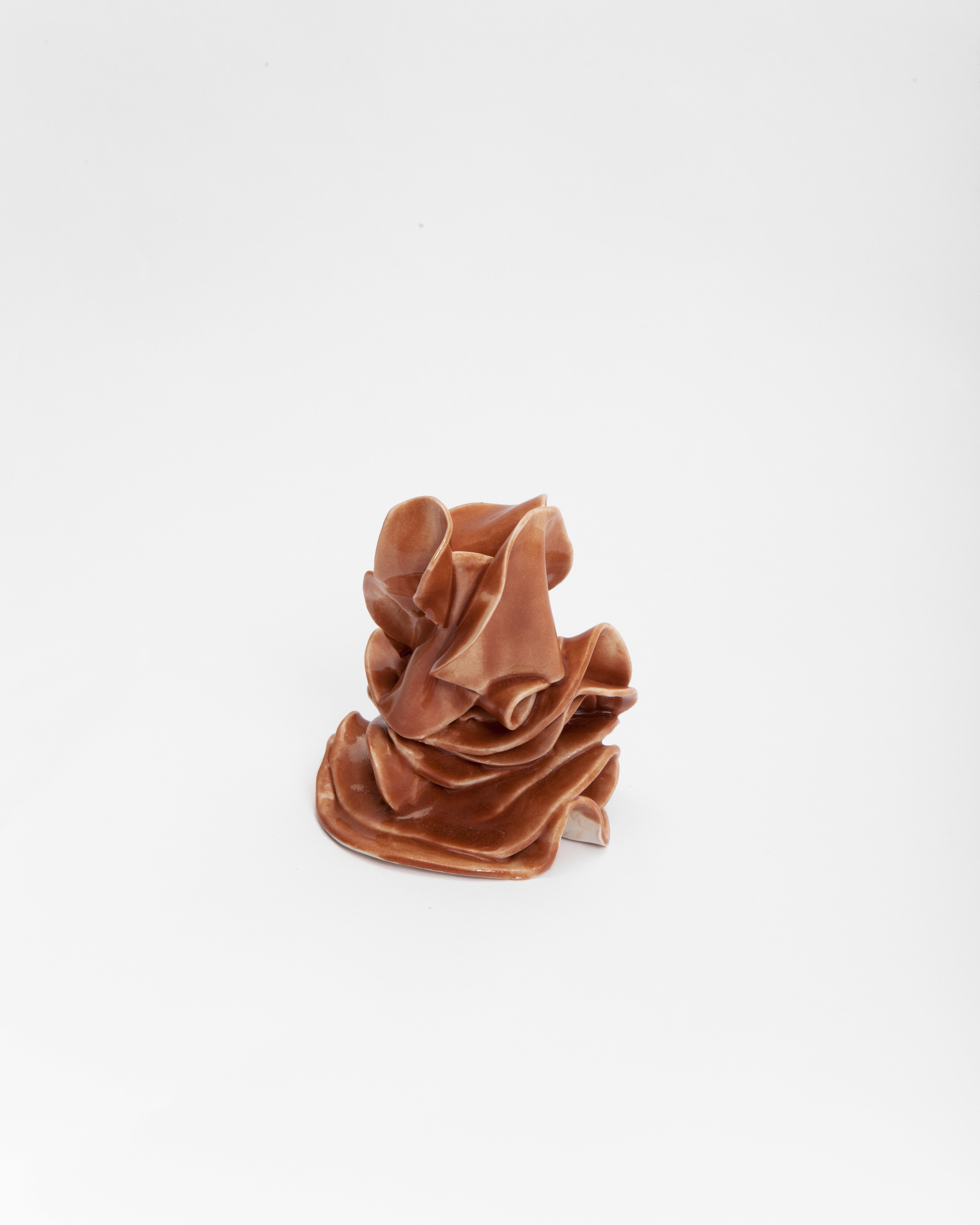
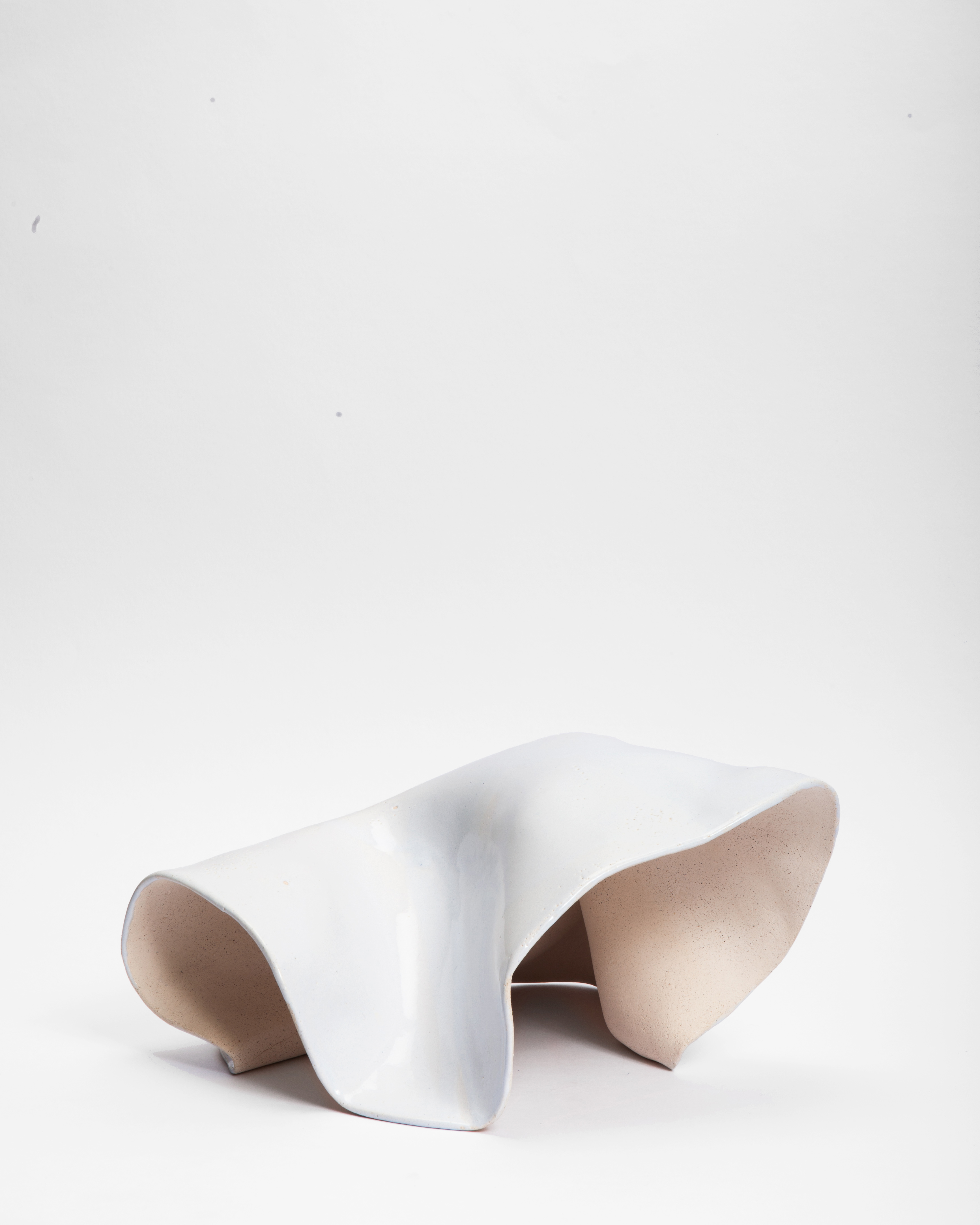


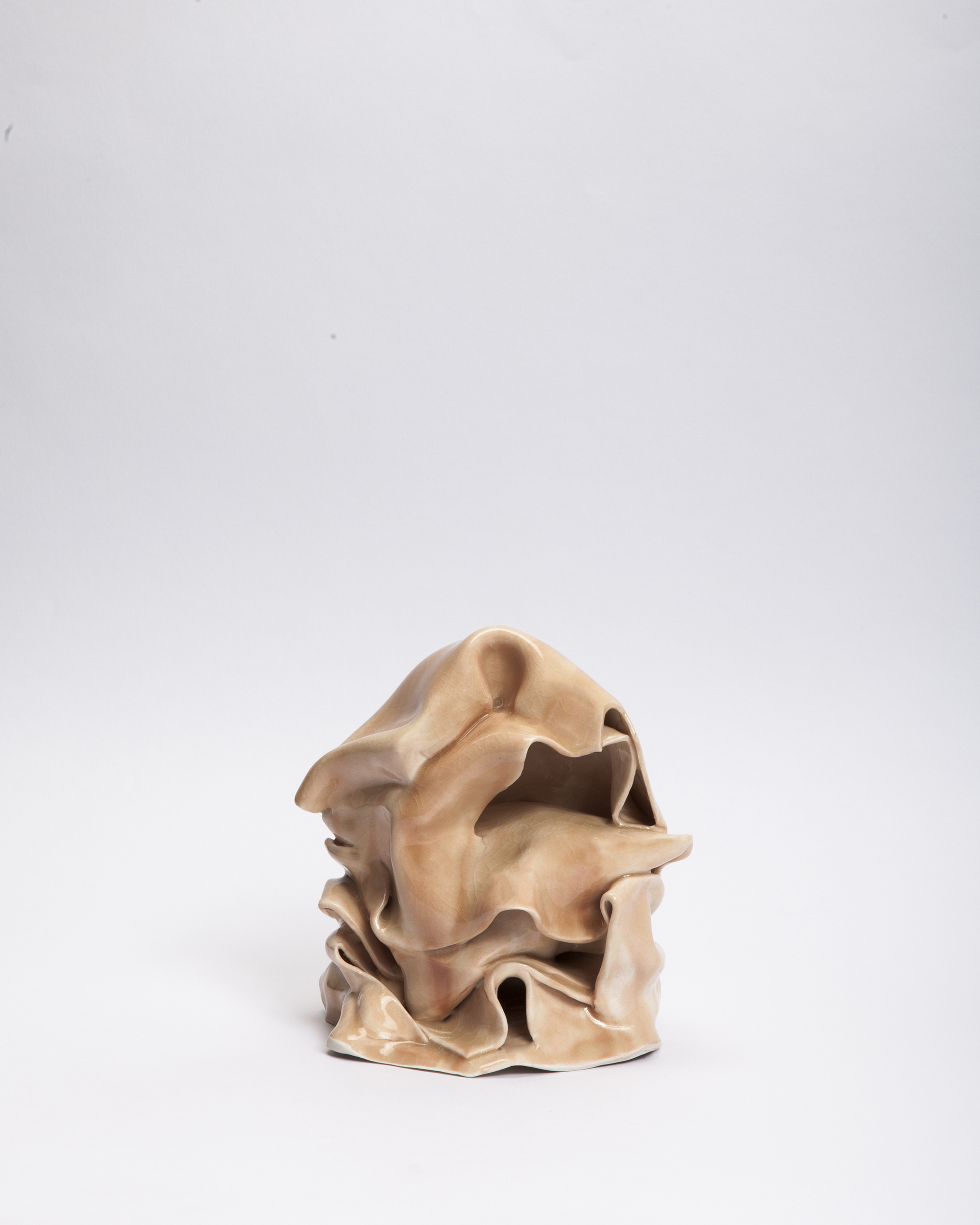
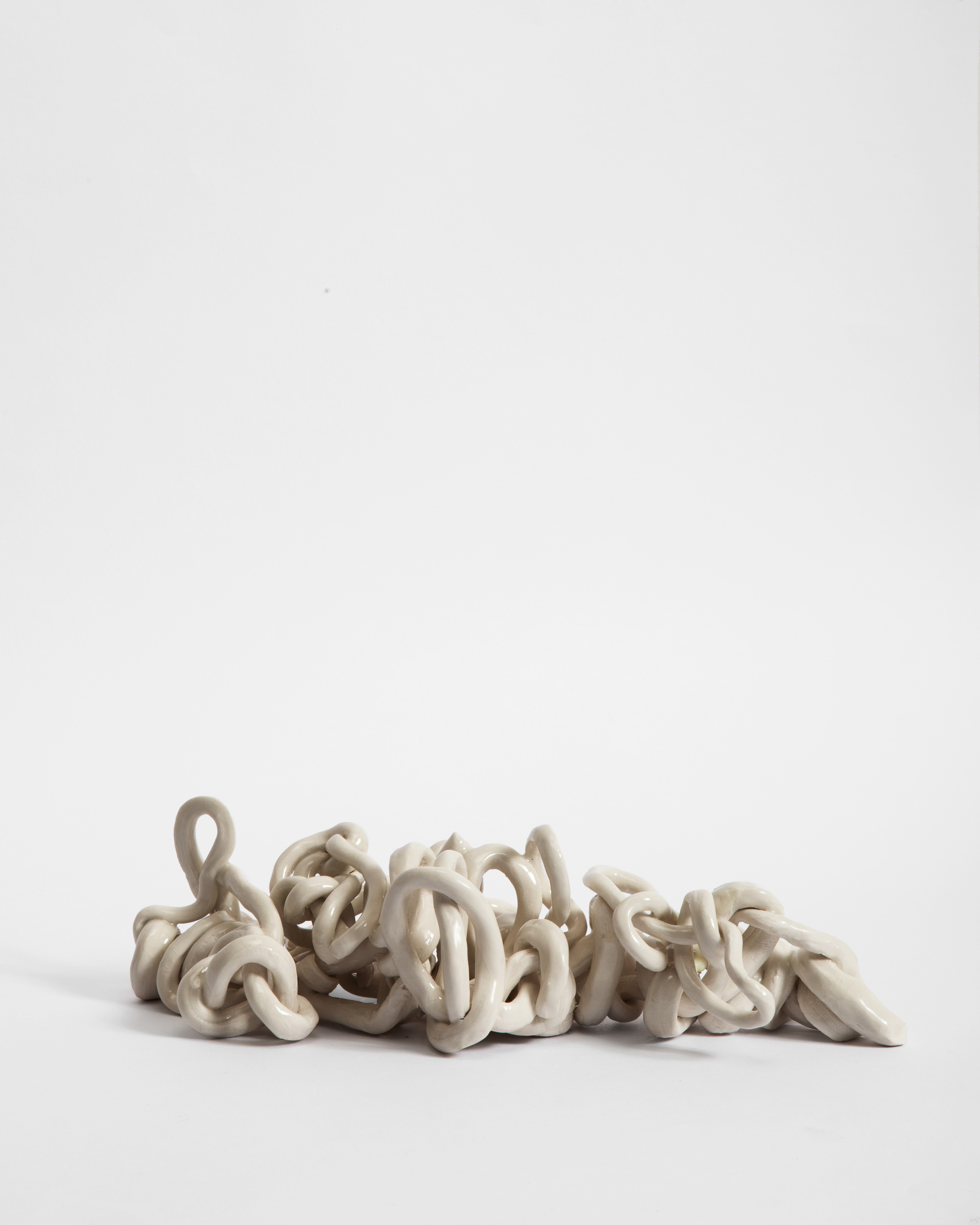
Imagine an eel soup: a wriggling mass of creatures whose ends and beginnings can be swapped in the human eye, trapped in a limited space, their bodies entangled below the surface or floating on top of it, half submerged in the liquid that now holds them. Like the visible bits of the viscous animals you have just pictured, the objects I present here are fragments of an ephemeral reality. In a collaboration with photographer Federico Clavarino, by carefully observing spaces and body parts as they twist, press, open, close, bend and touch, photography and ceramic have become our means to reinterpret a series of meaningful connections. The resulting series of reconfigurations ultimately tells a story of coexistence, one that is largely built around the lingering images left behind by otherwise vanishing intersections.
![Black Twine, stoneware, 30x10x10cm, 2021 / ph. Mattia Greghi]()
![ph. Federico Clavarino]()
︎Shows
Eel Soup @ Volvo Studios Milano, September 2023 (edible sculptures edition)
![]()
![]()
![]()
![]()
The Crab’s House Installation pt 3, with Federico Clavarino (SIC Space with the support of Art Futures Amsterdam, June 2023)
![]()
![]()
![]()
![]()
![]()
![]()
![]()
The Crab’s House Installation pt 2, with Federico Clavarino (Ville Empain, March 2023)
![]()
![]()
![]()
![]()
![]()
![]()
![]()
![]()
![]()
![]()
The Crab’s House Installation pt 1, with Federico Clavarino (Stiftung Kunstlerdorf Schöppingen, November 2022)
![]()
![]()
![]()
![]()
Bezoar + Wounds @ Miart with Viasaterna, September 2021
![]()
![]()
![]()
![]()
![]()
![]()
Wounds @ Artissima, November 2020
![Perottino-Piva / Artissima 2020]()
![Perottino-Piva / Artissima 2020]()
Eel Soup @ Viasaterna, December 2019
![ph. Giorgio Di Noto]()
![ph. Giorgio Di Noto]()
![ph. Giorgio Di Noto]()
![ph. Giorgio Di Noto]()
![]()
![ph. Giorgio Di Noto]()
![ph. Giorgio Di Noto]()
Eel Soup @ Fotofestiwal, June 2019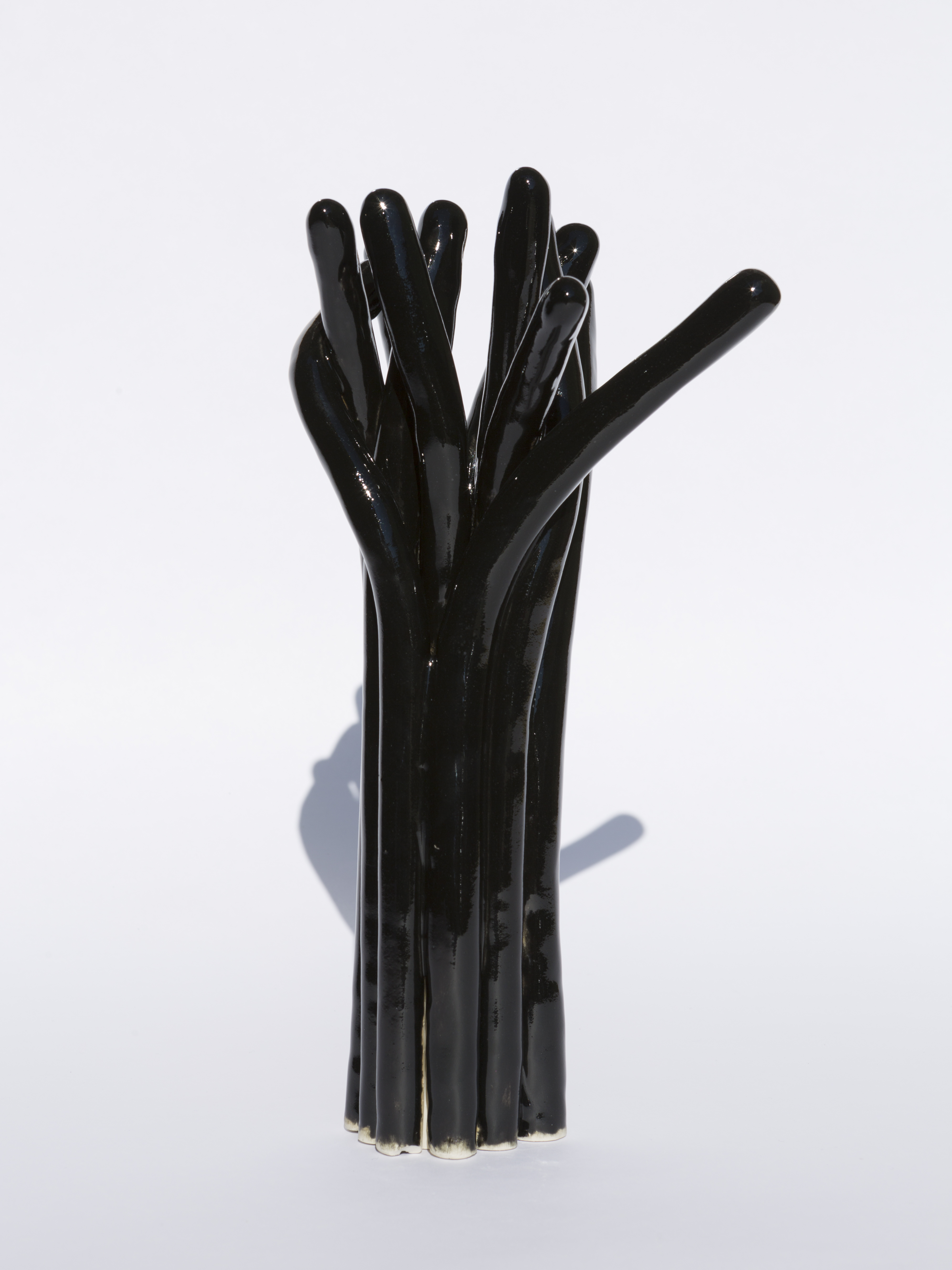
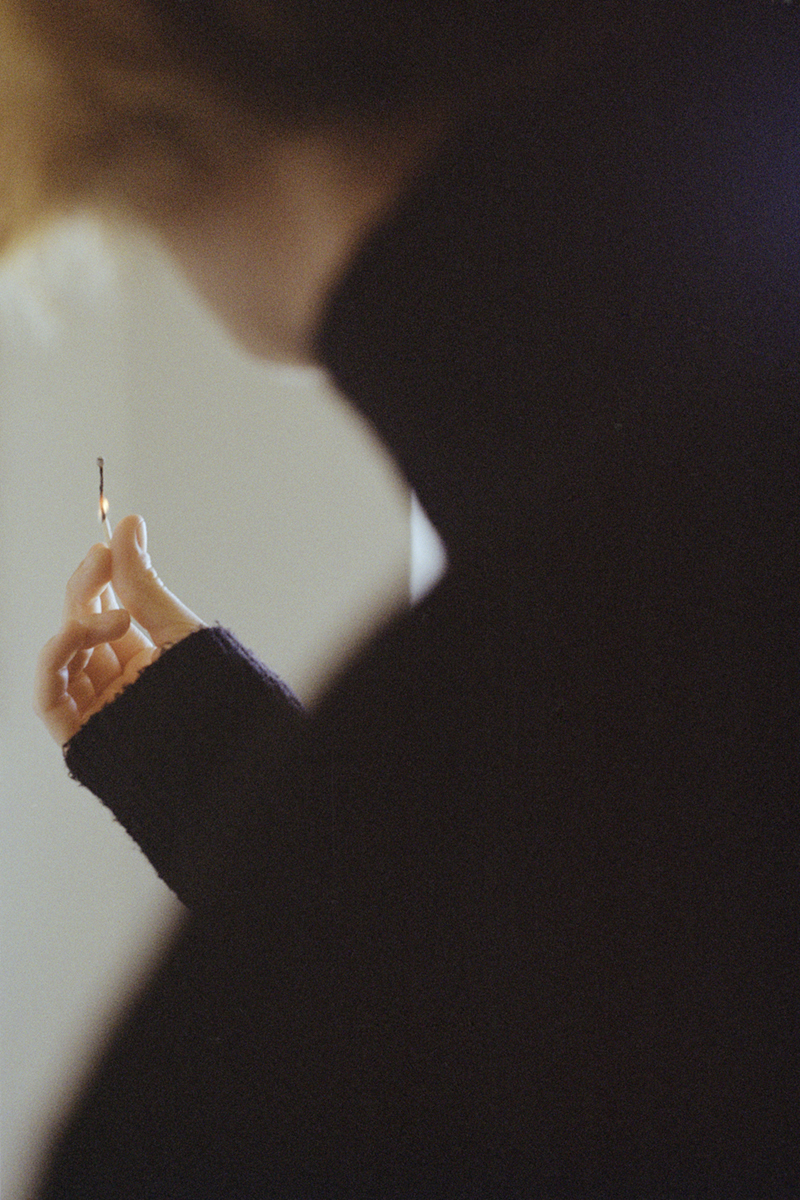
︎Shows
Eel Soup @ Volvo Studios Milano, September 2023 (edible sculptures edition)




The Crab’s House Installation pt 3, with Federico Clavarino (SIC Space with the support of Art Futures Amsterdam, June 2023)
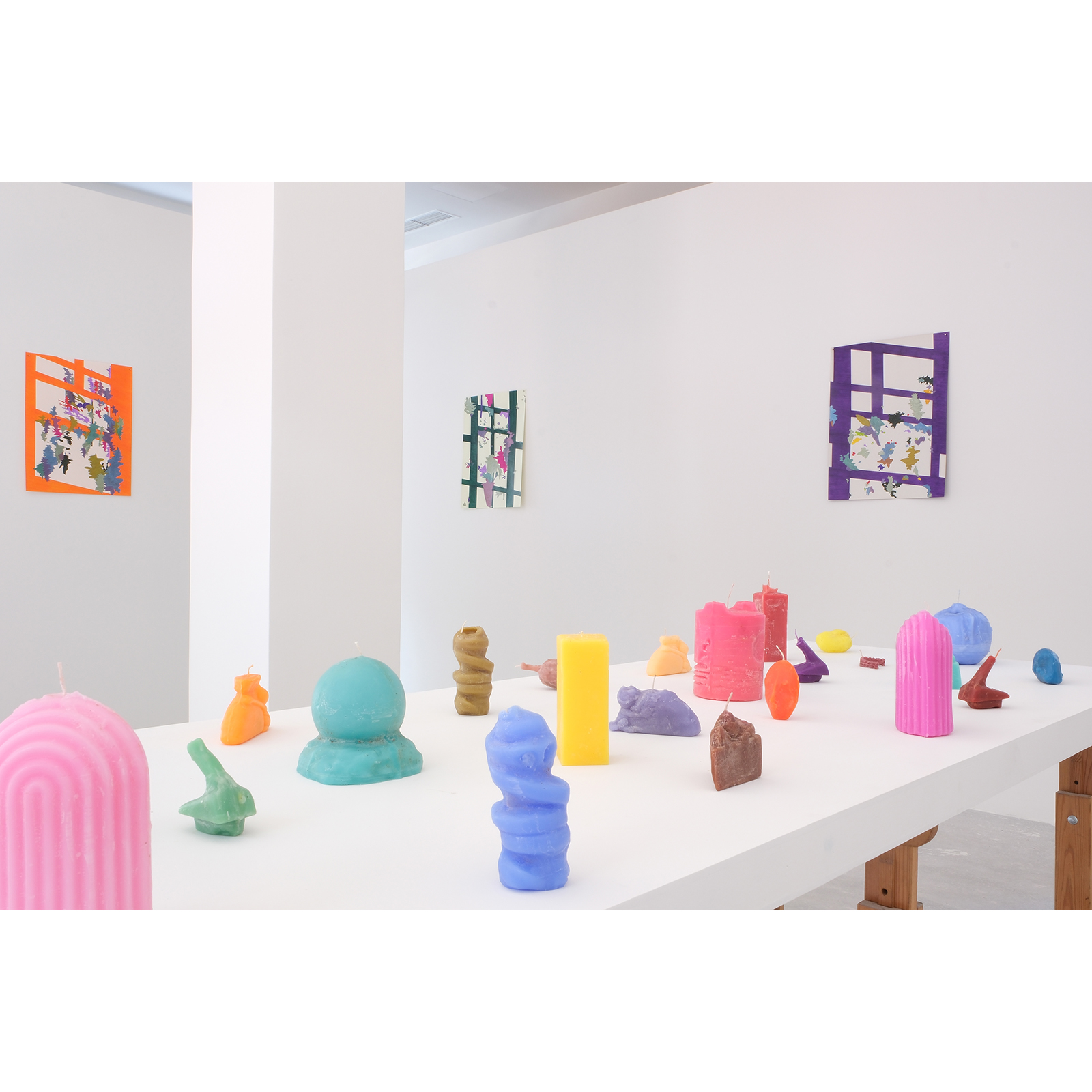
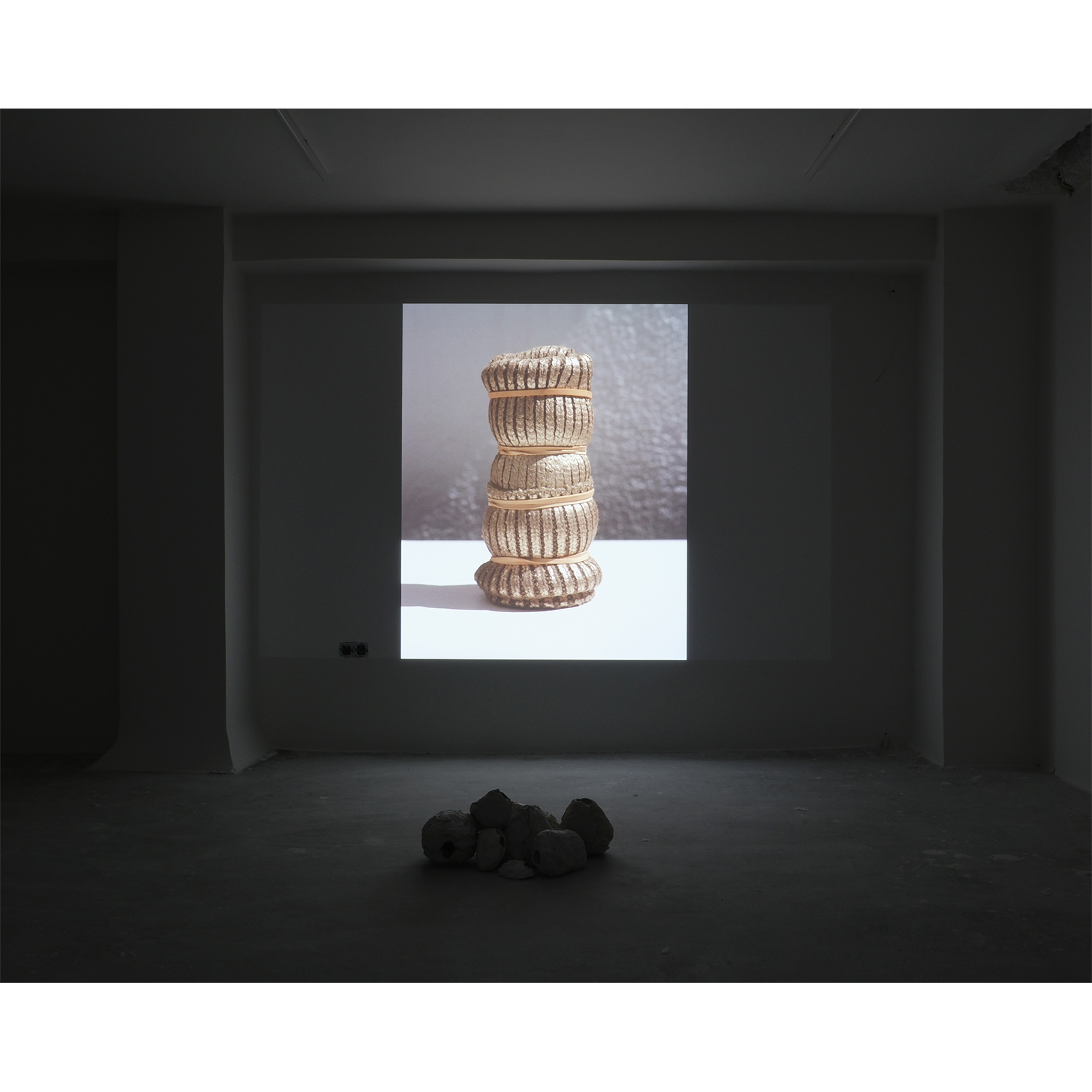
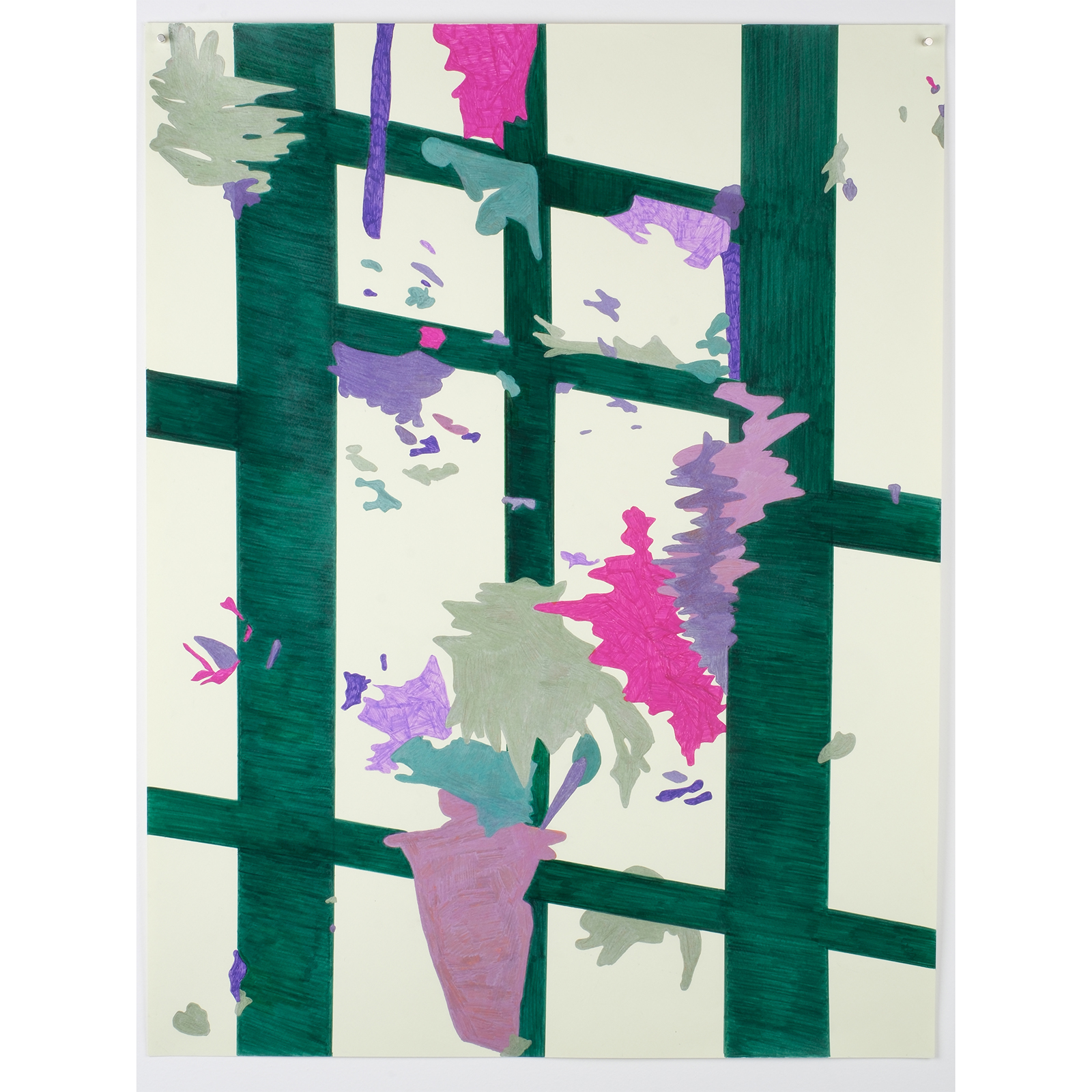
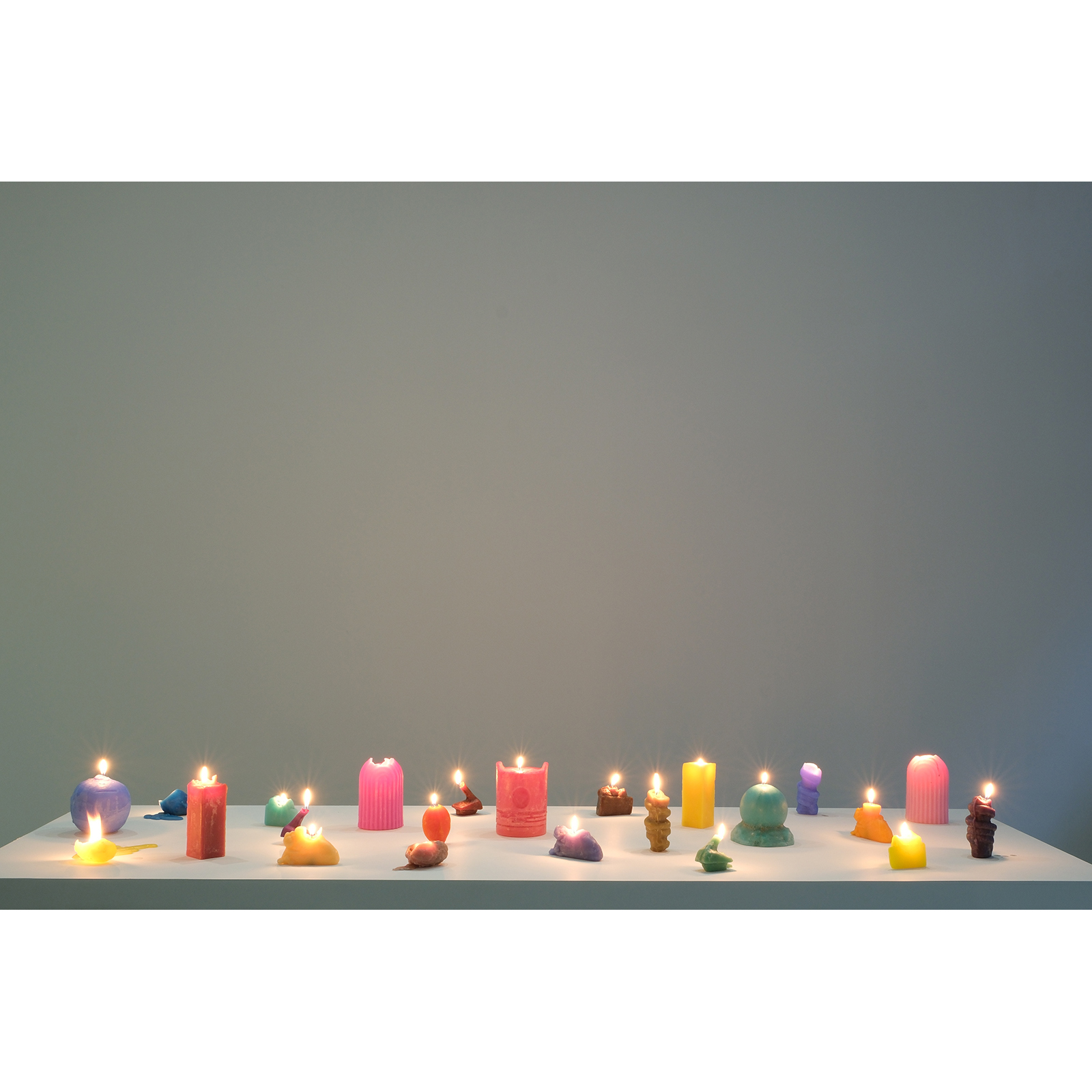
The Crab’s House Installation pt 2, with Federico Clavarino (Ville Empain, March 2023)
The Crab’s House Installation pt 1, with Federico Clavarino (Stiftung Kunstlerdorf Schöppingen, November 2022)
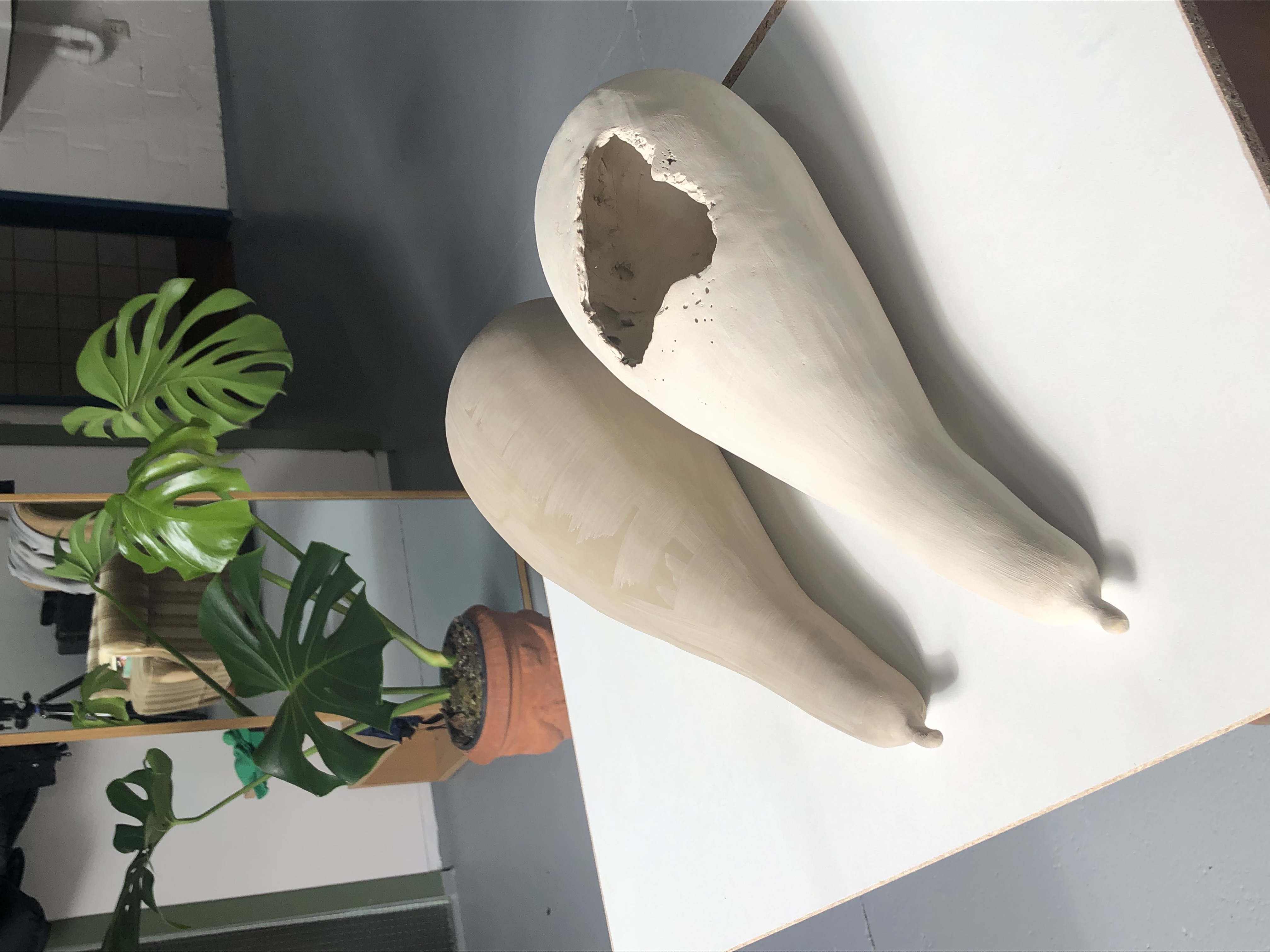
Bezoar + Wounds @ Miart with Viasaterna, September 2021

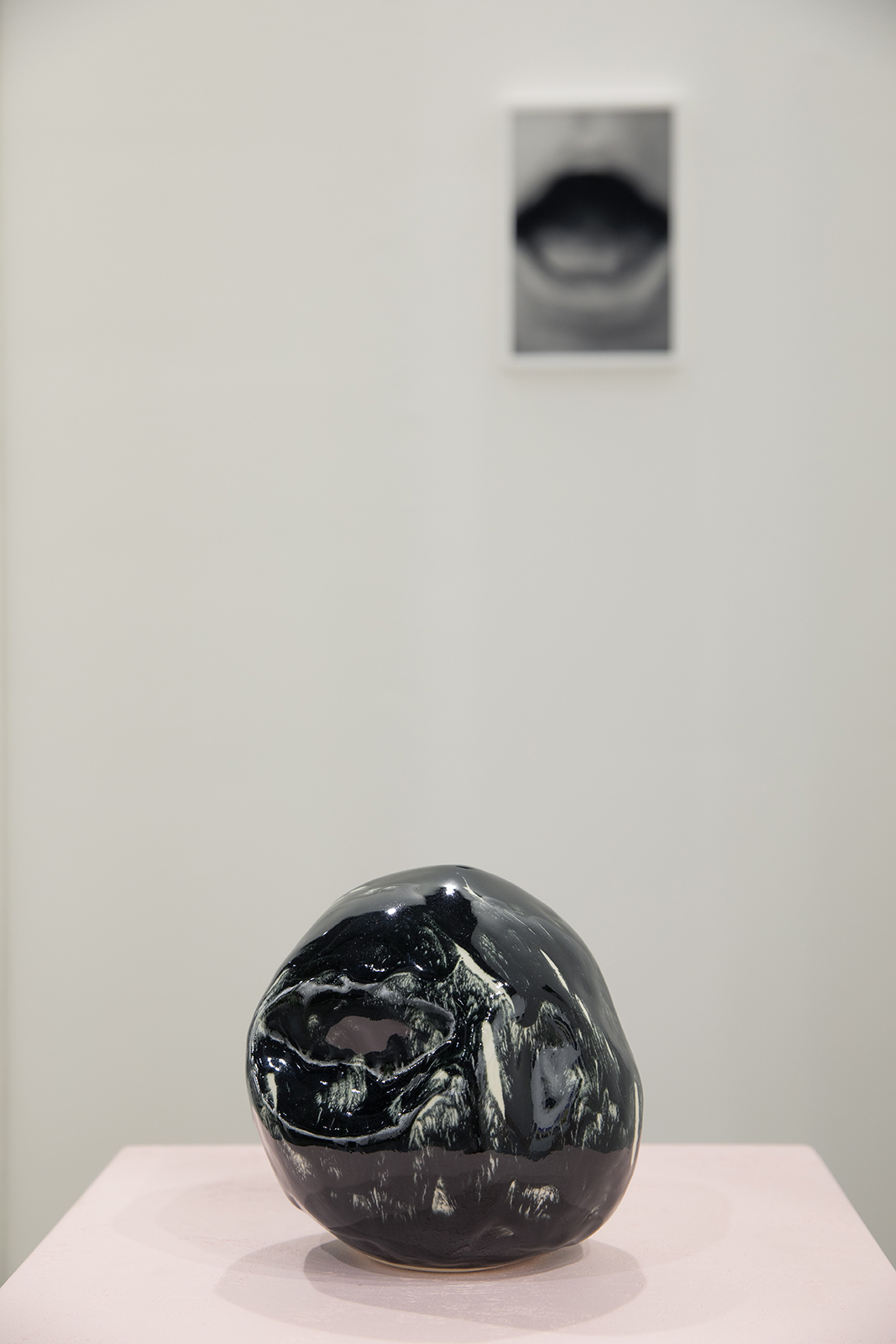
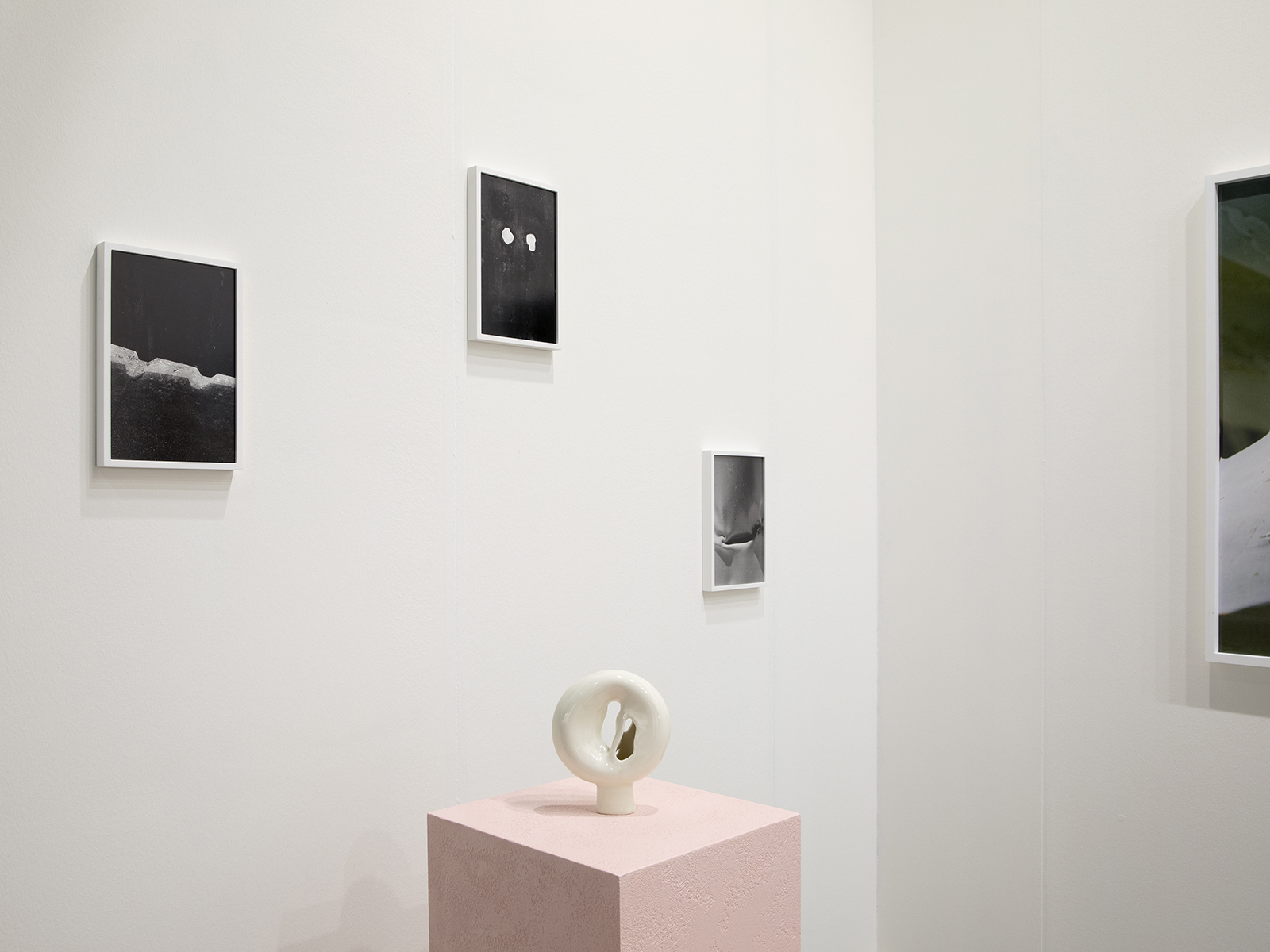
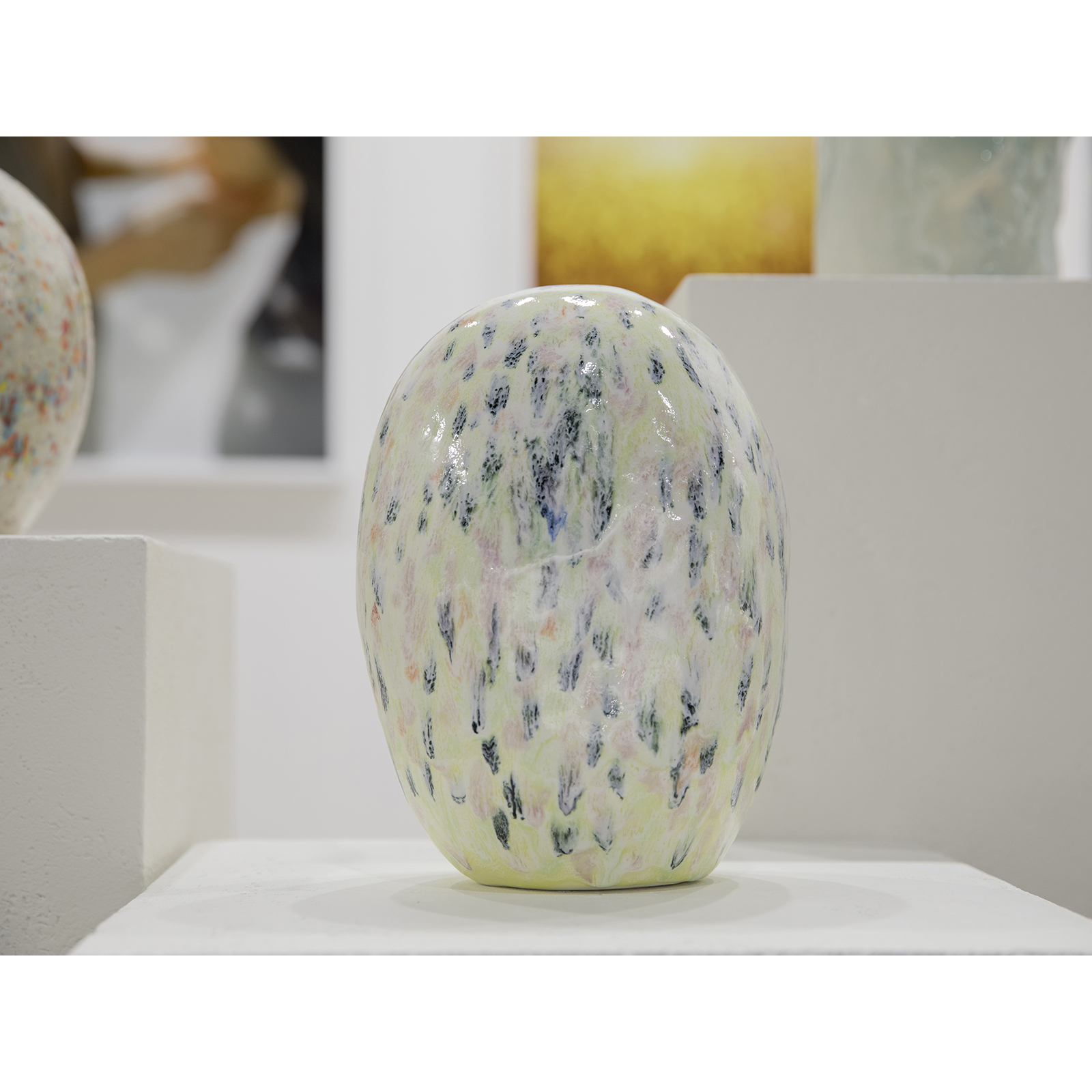
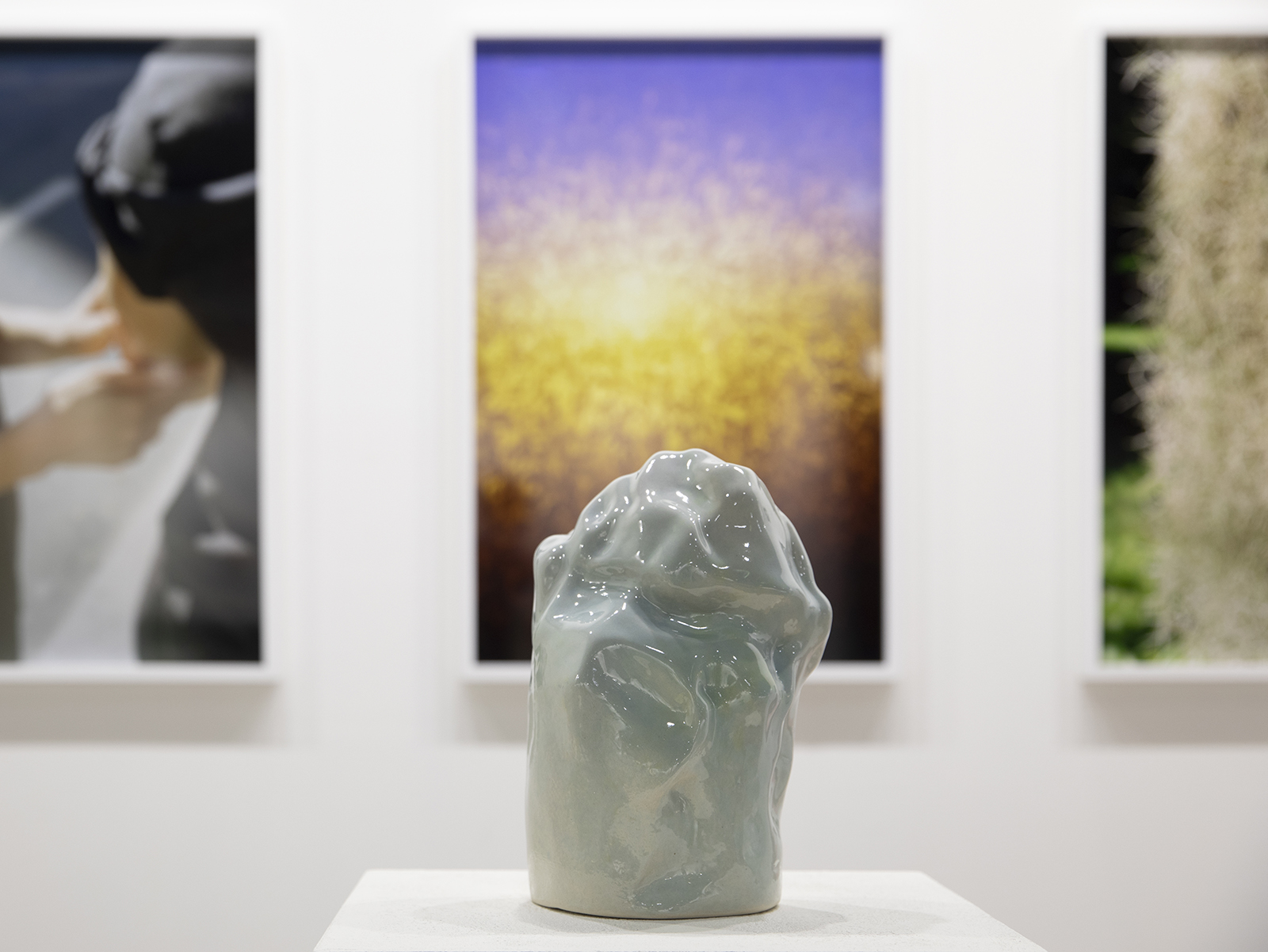
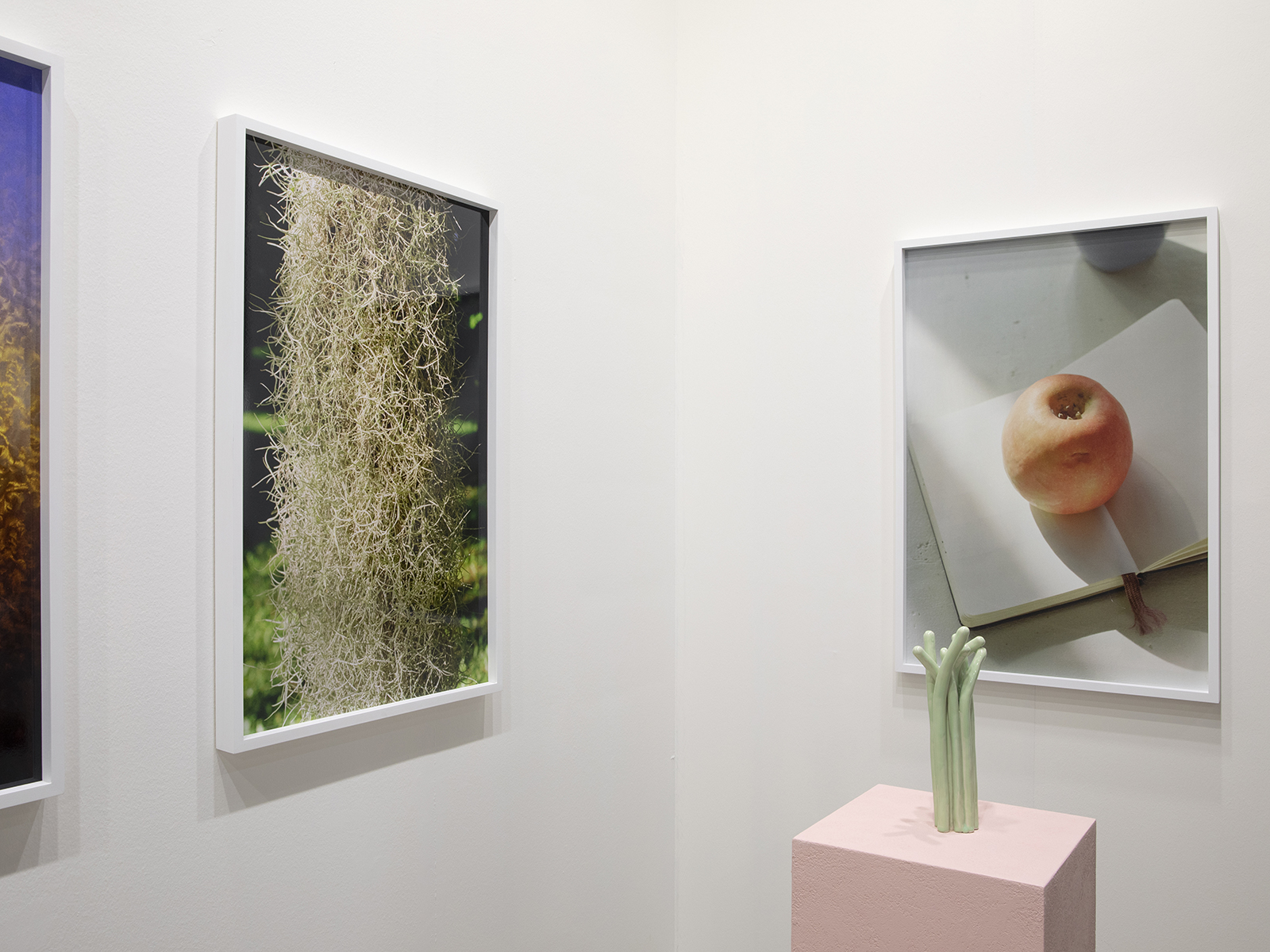
Wounds @ Artissima, November 2020
Eel Soup @ Viasaterna, December 2019
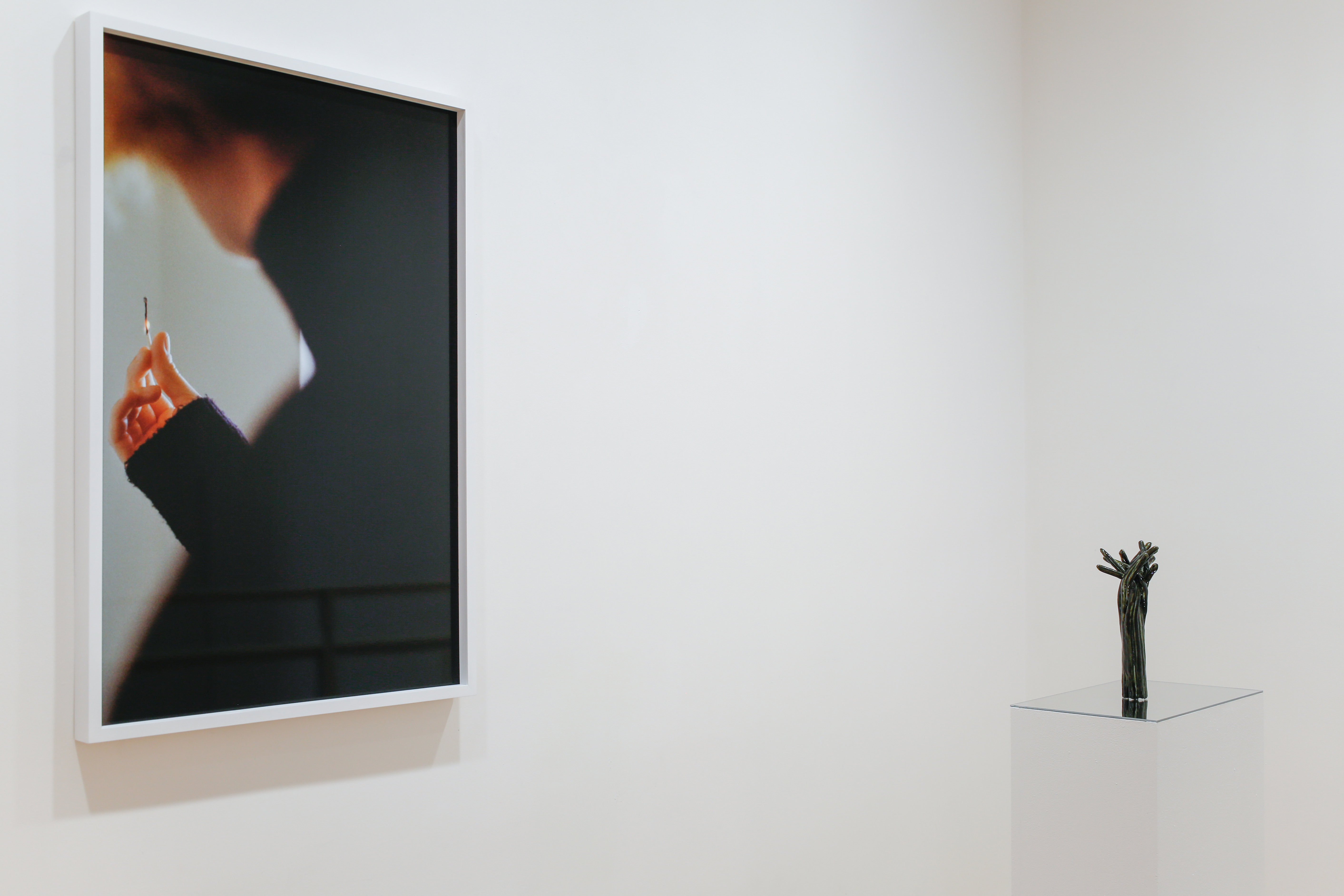
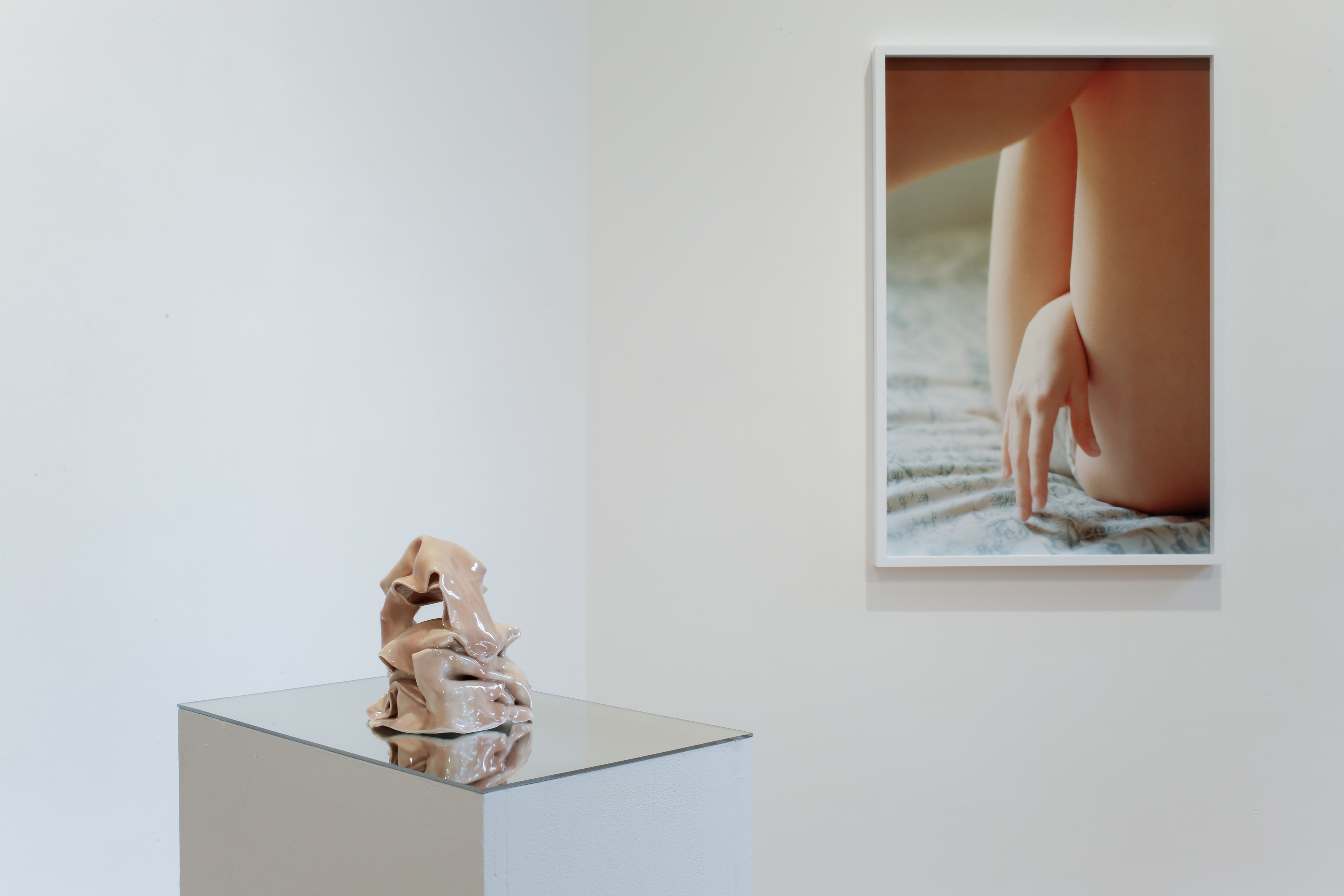



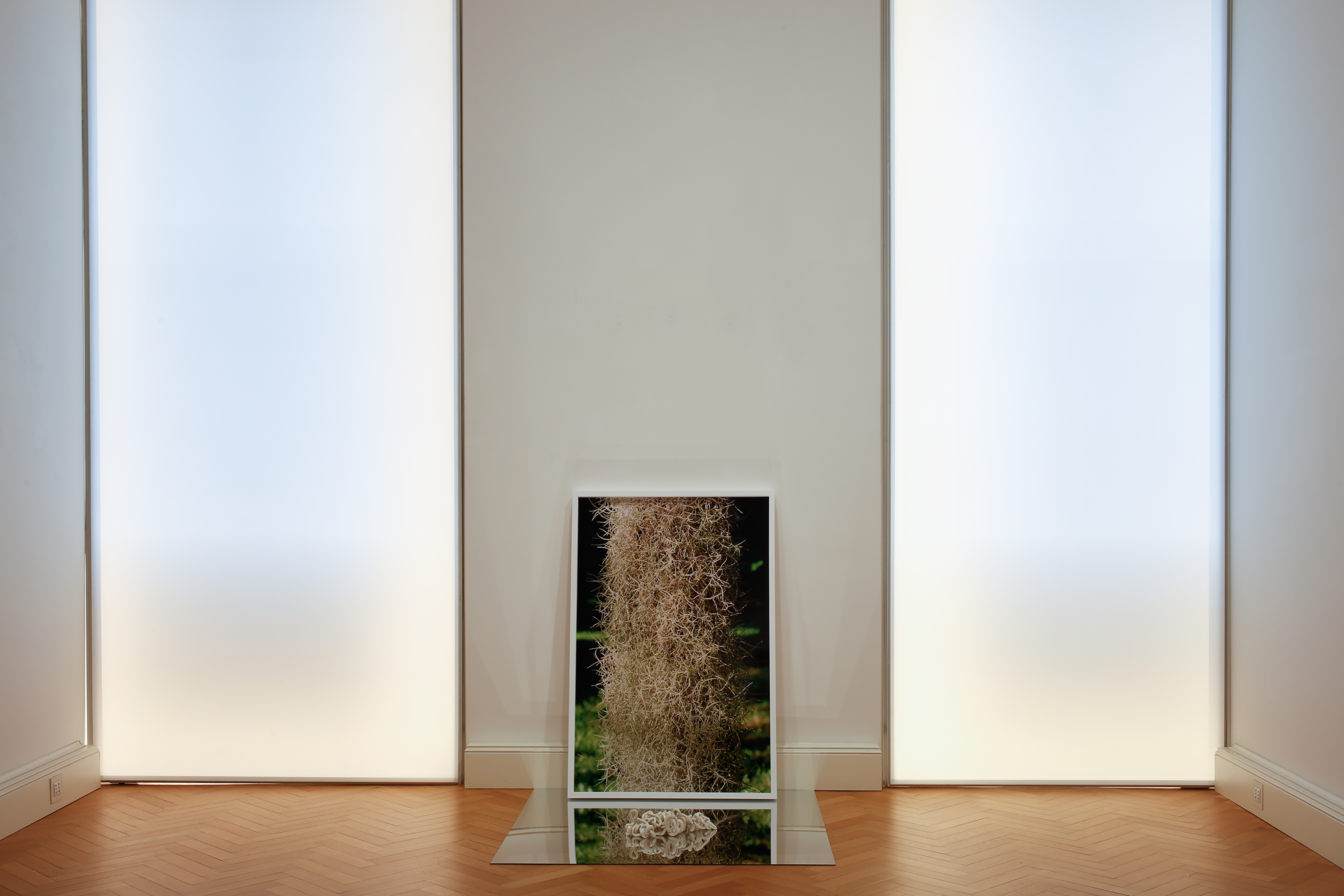
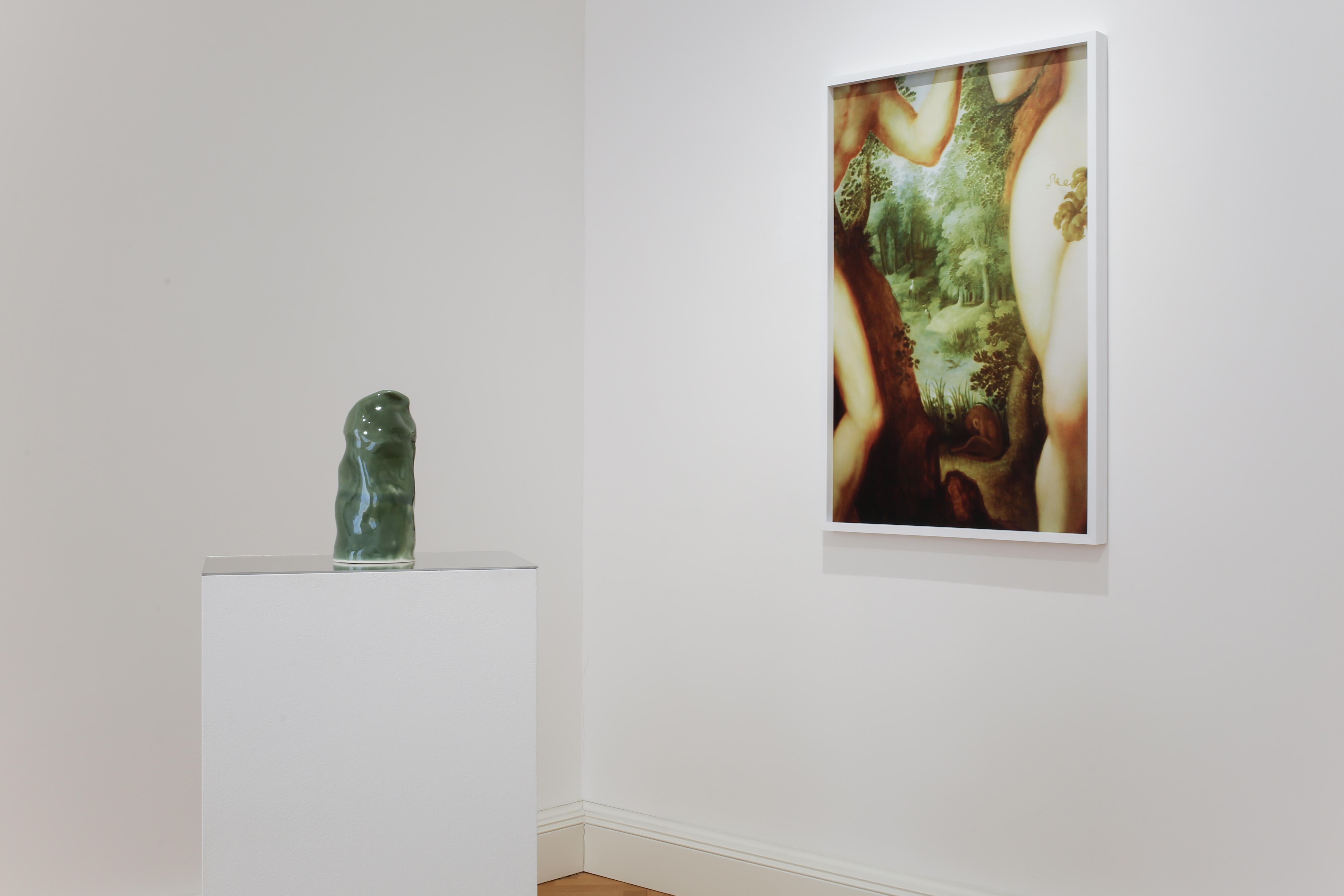
︎Bio
Tami Izko is a Spanish-Bolivian artist. Her practice is rooted in her autobiography. By making sometimes figurative, sometimes abstract ceramic sculptures, she familiarizes with the unfamiliar (Commute, 2023-ongoing), connects memory with transformation (Wounds, 2020) and explores power struggles through the journey of a magic stone (Bezoar, 2021-ongoing). A few of her joint projects include Eel Soup (2017-2022), Via Spaventa (2022) and The Crab’s House (2022-ongoing) and in these she explores the boundaries between different artistic expressions, finding bridges among two and three dimensional works that interact with each other creating a dimension of their own. Her site-specific intervention Inventory became the tenth permanent artwork at Fondazione La Raia in 2023. She has exhibited many of her works at international art fairs (Artissima, Miart) and group shows (Istanbul Biennale 2019, Grand Prix Fotofestiwal, 17e Parcours Céramique Ca- rougeois), while also taking part in a series of funded Fellowship programs (Boghossian Foundation, Art Futures Athens and Stiftung Kunstlerdorf Schoppingen). In 2024 she was listed among the 50 New European Talents by AD magazine Italy.
Tami Izko is a Spanish-Bolivian artist. Her practice is rooted in her autobiography. By making sometimes figurative, sometimes abstract ceramic sculptures, she familiarizes with the unfamiliar (Commute, 2023-ongoing), connects memory with transformation (Wounds, 2020) and explores power struggles through the journey of a magic stone (Bezoar, 2021-ongoing). A few of her joint projects include Eel Soup (2017-2022), Via Spaventa (2022) and The Crab’s House (2022-ongoing) and in these she explores the boundaries between different artistic expressions, finding bridges among two and three dimensional works that interact with each other creating a dimension of their own. Her site-specific intervention Inventory became the tenth permanent artwork at Fondazione La Raia in 2023. She has exhibited many of her works at international art fairs (Artissima, Miart) and group shows (Istanbul Biennale 2019, Grand Prix Fotofestiwal, 17e Parcours Céramique Ca- rougeois), while also taking part in a series of funded Fellowship programs (Boghossian Foundation, Art Futures Athens and Stiftung Kunstlerdorf Schoppingen). In 2024 she was listed among the 50 New European Talents by AD magazine Italy.
Exhibitions
Solo
November 2023, Via Spaventa, Fonderia, Verona (doule solo show with Federico Clavarino)
September 2023, Eel Soup (edible sculptures), Volvo Studio, Milan
June 2023, The Crab’s House (pt 3) with Federico Clavarino, SIC Athens
February 2023, The Crab’s House (pt 2) with Federico Clavarino, Ville Empain Residence
November 2022, The Crab’s House (pt 1) with Federico Clavarino, Stiftung Künstlerdorf Schöppingen
September 2022, Via Spaventa, Espace Brockmann and Fondation Bruckner, Gevena
December 2019, Eel Soup, Viasaterna Gallery, Milan (double solo show with Federico Clavarino)
November 2018, Eel Soup, Pinguin, Bruxelles (double solo show with Federico Clavarino)
Group
July 2024, Carta Cristallina, Ceramics and Illustration, Castellamonte, Piedmont
March 2024, LEAF Art Fair, Boghossian Foundation, Brussels
November 2022, The Harvest, Stiftung Künstlerdorf, Schöppingen
December 2020, Gradi di Vuoto, Viasaterna Gallery, Milan
October 2020, Artissima Unplugged with Viasaterna Gallery, Turin
September 2019, Auto Fiction, Dyson Gallery, Royal College of Art, London
September 2019, Kiraathane at Istanbul Biennale, Istanbul
2019, Grand Prix, Fotofestiwal Lódz
Workshops & Teaching
Visiting Lecturer, Academy of Fine Arts, Athens, 2023
Studio Orlando, Milan, 2019-2022
Visiting Lecturer, University of Roehampton, London, 2019
Member, Clay Garden, London 2019-2020
Member, Turning Earth, London 2018-2019
Member, Caulino Atelier, Lisbon, 2017-2019
Residencies / Fellowships
Art Futures Fellowship
May-June 2023, Athens
Boghossian Foundation artist in residence / February - April 2023, Brussels
Stiftung Künstlerdorf artist in residence / August - November 2022, Schöppingen
Press
Inventory:
Mousse Magazine
Lampoon Magazine
La Reppublica
Eel Soup:
Ignant Magazine
Nearest Truth podcast
Via Spaventa:
Ceramics Now
Publications
Eel Soup, with Federico Clavarino.
Published by Witty Books in June, 2022.
30 future sculptures, 3 missing drawings. Self-Published in Leipzig in November, 2022.

